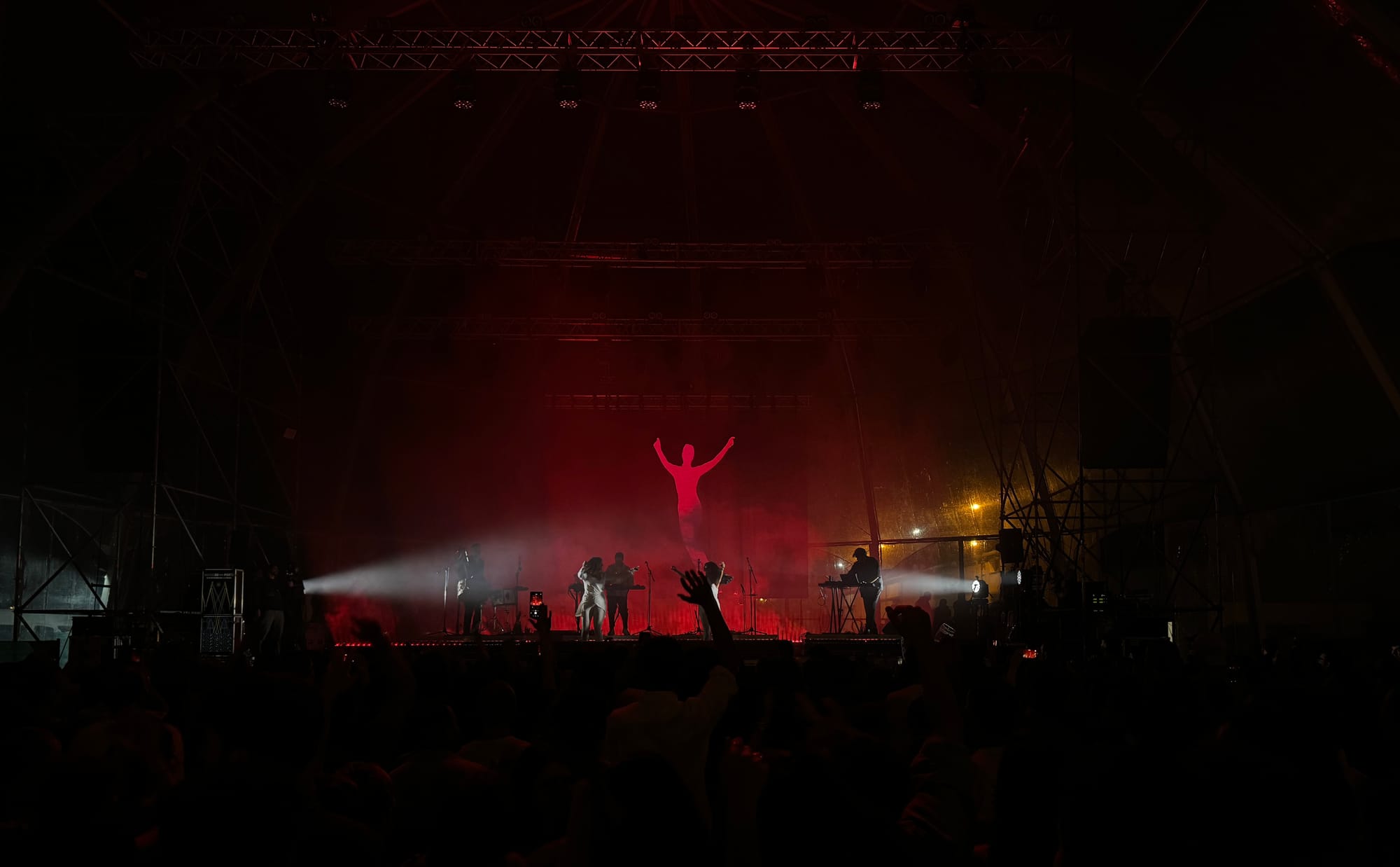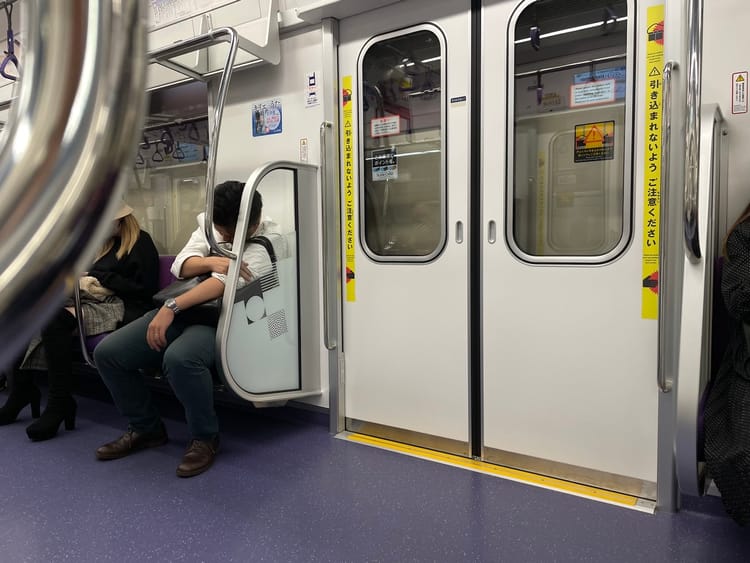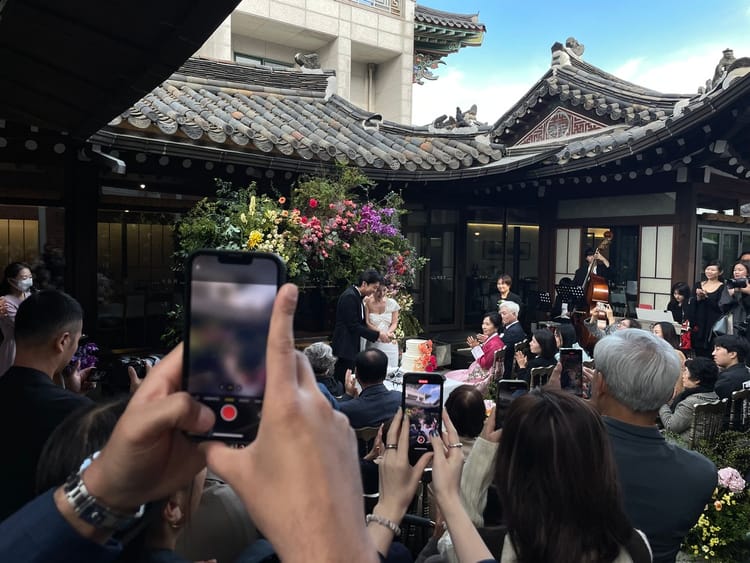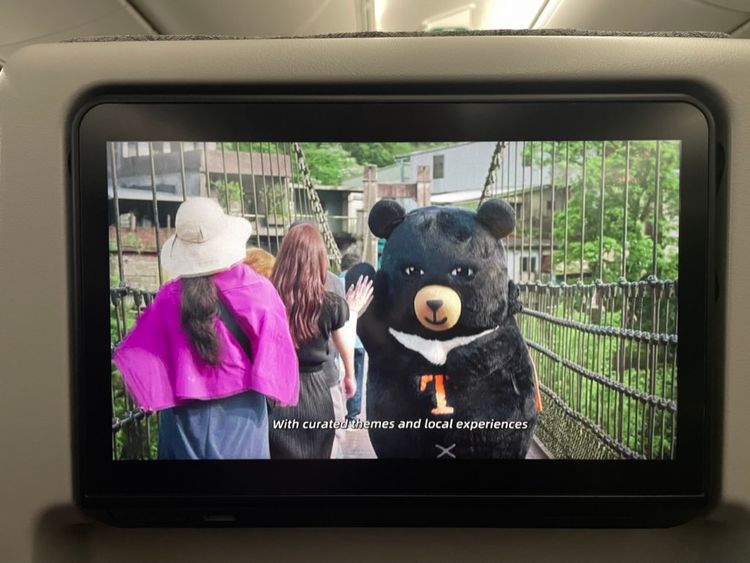Mildly/Wildly Interesting Things About Walking the Camino de Santiago 🚶♂️
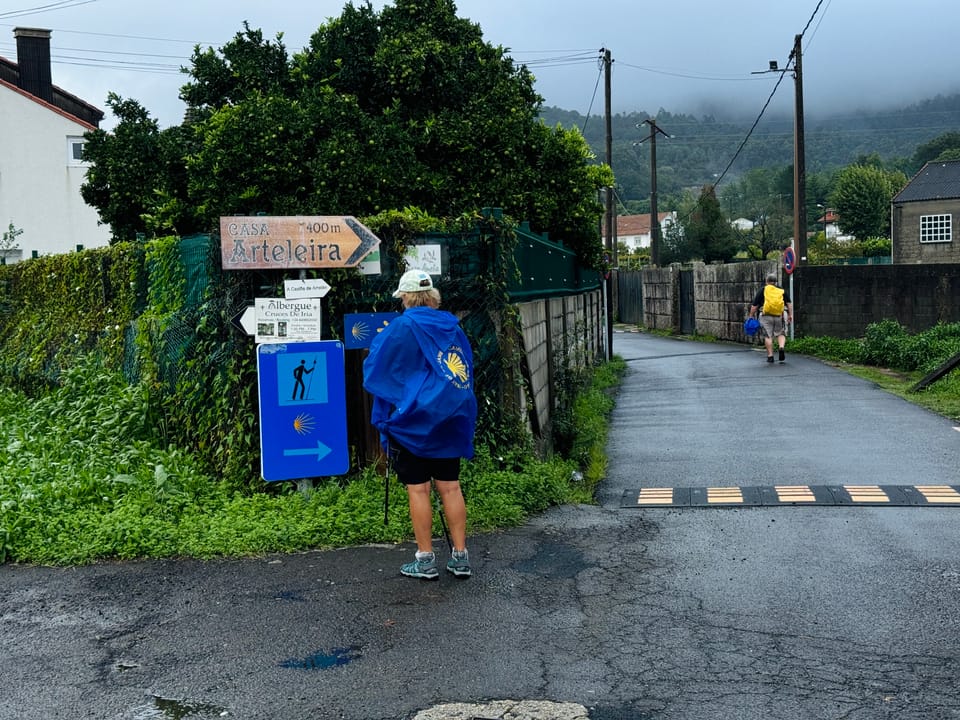
Recently, my wife and I walked for six days through Galicia.
It was the last bit of the famed Camino de Santiago.
People always ask me: "And?! How was it?!"
This is my not-so-short summary 👇
What the Hell Is the Camino de Santiago and Why Do It?
Great question. I'm non-religious so I've been asking this myself.
The story goes that, in the 9th century, a shepherd found the remains of Apostle Jacob (modern day translation: Apostle James) in a Galician field. Supposedly, the bright illumination of the stars at night helped him find his way.
Etymology #1
Now, the most fascinating unlock for me was to see how the name relates in all the different languages:
Iago → Iacub → Jakob → James (shame on whoever came up with this)
Spanish: Camino de Santiago → German: Jakobsweg → English: Way of Saint James
Etymology #2
Now, why is the cathedral called Santiago de Compostela?
Remember, the story goes that a shepherd was led by starlight to an exact spot in a field. In Spanish, campo means field and estrella means star.
Compo + Estrella = Compostela
The cathedral is a dedication to Saint Jacob of the Star-lit Field.

Evolution Over the Years
Over the years, two things happened:
- The king at the time decided to build a massive church in the place where the remains had been found → this became the Cathedral of Santiago de Compostela.
- One of the popes officially declared the Camino de Santiago as one of the three great pilgrimages of Christendom - along with Jerusalem and Rome. The more you know.
These two things turned the Camino de Santiago into a legitimate thing that people would do. Chances are, you know someone who has done it.
Which brings us to the next question:
Why Do It At All?
I think the reasons here are vastly different for religious vs. non-religious folks:
- Religious: Cultural tradition; fulfillment of a vow; spiritual reasons; etc.
- Non-Religious: Adventure travel; digital detox; do something different; etc.
In my case, my wife told me she wanted to do it and asked me if I'd be down. On my own accord, I'd never would have considered walking the Camino and that's exactly why I said "yes, let's!"
We were overall curious traveling Galicia while seeing if days of uninterrupted, monotonous hiking would have any sort of impact on our mind/spirit/etc.
Let me tell you how it went down and what I learned along the way 👇
Mildly/Wildly Interesting Things About the Camino
Let's start with some surprising things.
It's Not One Camino. It's Many Caminos.
If people say "I'm doing the Camino" then the correct follow-up question would be "Which one?"
There are countless routes to Santiago de Compostela. Different starting points, different terrains, different lengths. Different experiences altogether.
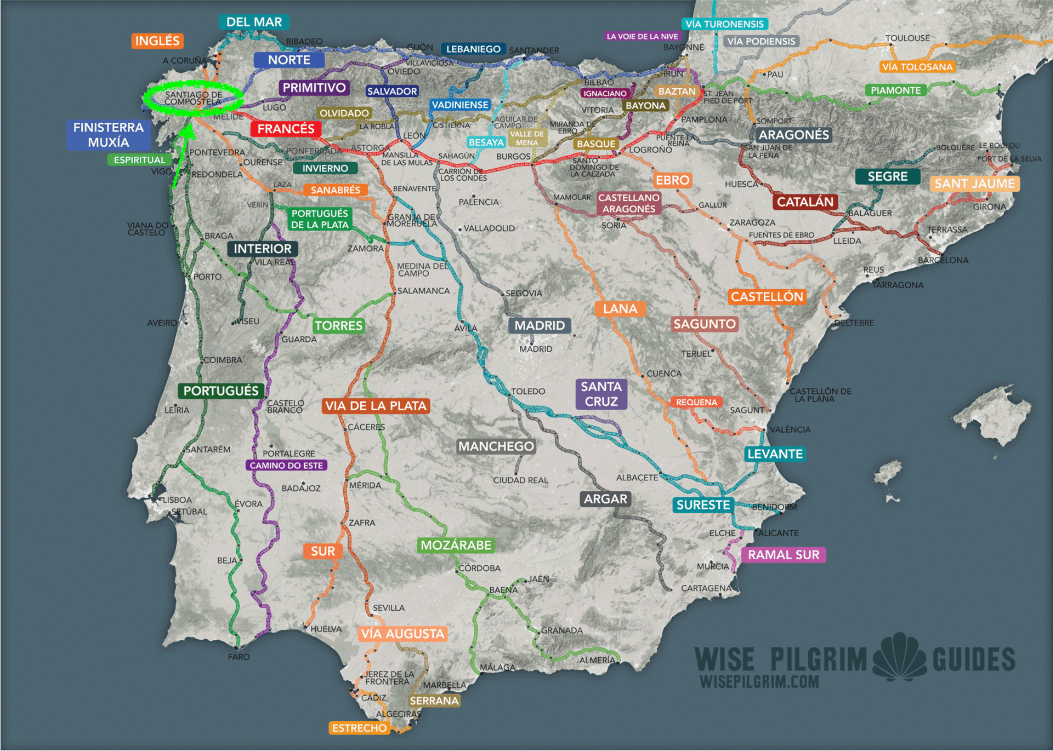
We did the the coastal route of the "Camino Portueges." On the map above, I've indicated it with a green arrow.
Just to put it into perspective: we walked for six days. Some walk for six weeks. Some walk even longer and then, after arriving, decide to walk back. Crazy stuff.
Camino as a Driver of Tourism
The camino is very popular.

This data is from the tourist bureau of the Cathedral of Santiago de Compostela. It counts how many people are issued a "compostela."
The Compostela
Think of the compostela as a certification of completion.
It is a document in Latin language certifying that you have completed the Camino and looks something like this:

In order to get the compostela, you need 2 things:
- Show up at the tourist bureau before closing hours (19:00 sharp)
- Bring your "credencial" → your pilgrim's passport with enough stamps to prove that you've gone the distance
The Credencial
The credencial is a little booklet that you can get at various stores, tourist bureaus, etc. It costs €3 and you should get it for two very specific reasons:
- You can only get the compostela if you have a credencial with enough stamps
- You can only stay at official albergues (think of camino hostels) if you have a credencial → on the first day, I didn't have a credencial and we had to book a hotel for that reason
So, what's up with the stamps in this credencial?
Walking the camino - as opposed to horsebackriding it, or biking it - will be considered completed if a person walks more than 100km to Santiago.
How do you prove that you've walked more than that distance? Here's where the stamp system comes into play.
Pretty much every establishment (restaurant; cafe; hotel; etc.) has a unique stamp. When pilgrims become patrons at this establishment, they can ask for a stamp with a date and a signature. This is what it looks like 👇

Officially, a pilgrim needs at least two stamps per day and location for it to be considered "valid."
My entire theory is that this is the most ingenious gamification of tourism that I have ever seen. Gotta catch collect 'em all!
The Killer Brand Identity of the Camino
I also have to give a shoutout to whoever developed the brand system for the Camino.
- Colors: The first thing you see is that Camino-related stuff is always in blue/yellow (very similar to the blue-yellow combo of the EU flag)
- Logo: Then, when you squint your eyes, you can tell that there are predominantly two symbols: (1) a clamshell, that - to me - sometimes looks like a shooting star, and (2) this stupid asymmetric arrow that I learned to love.
- Language: Regardless of where people are from, when they pass another pilgrim, they say "Buen camino!" There's a way of identifying the in-group (i.e. those who know) and and the out-group (i.e. those who don't).
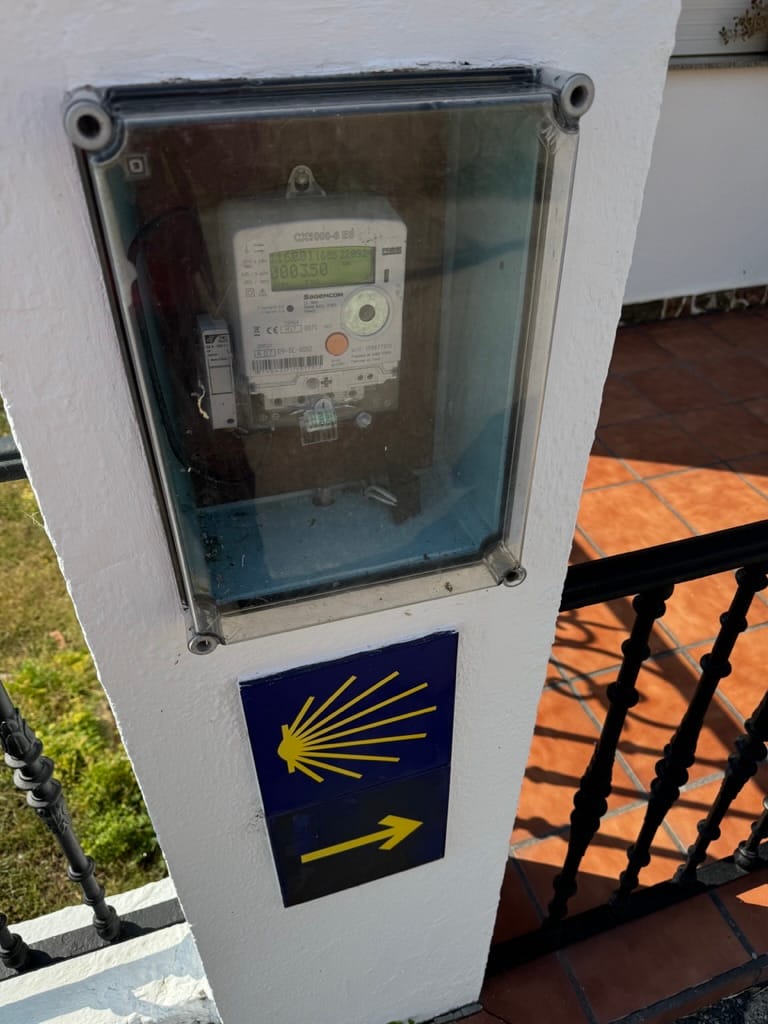
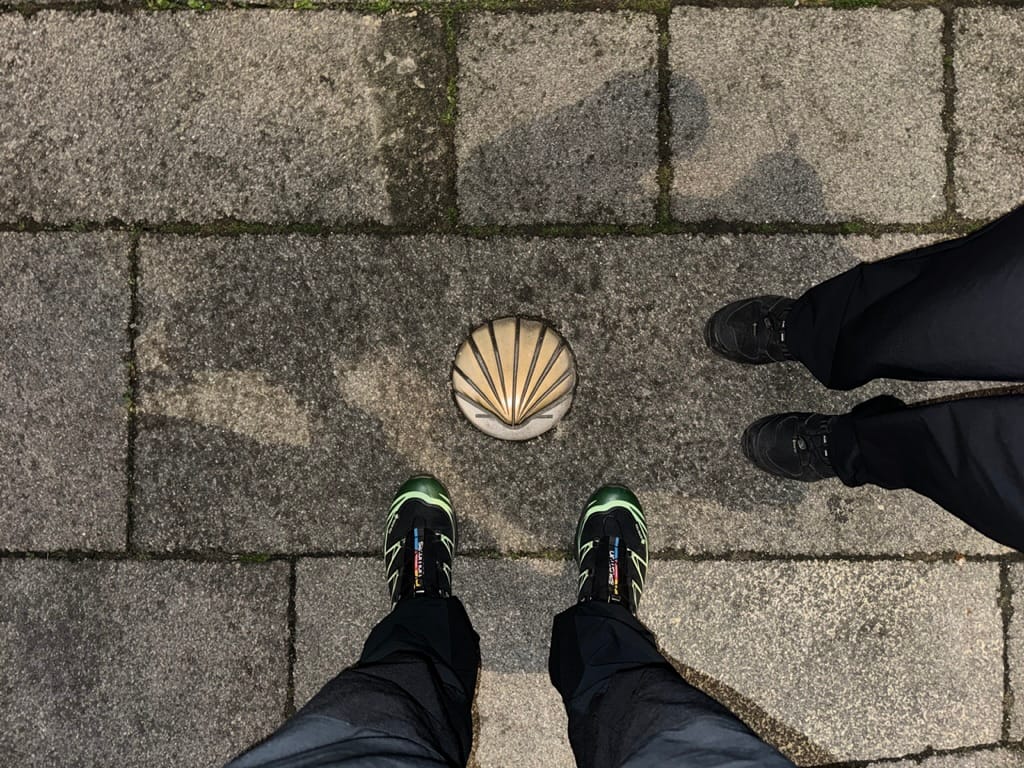
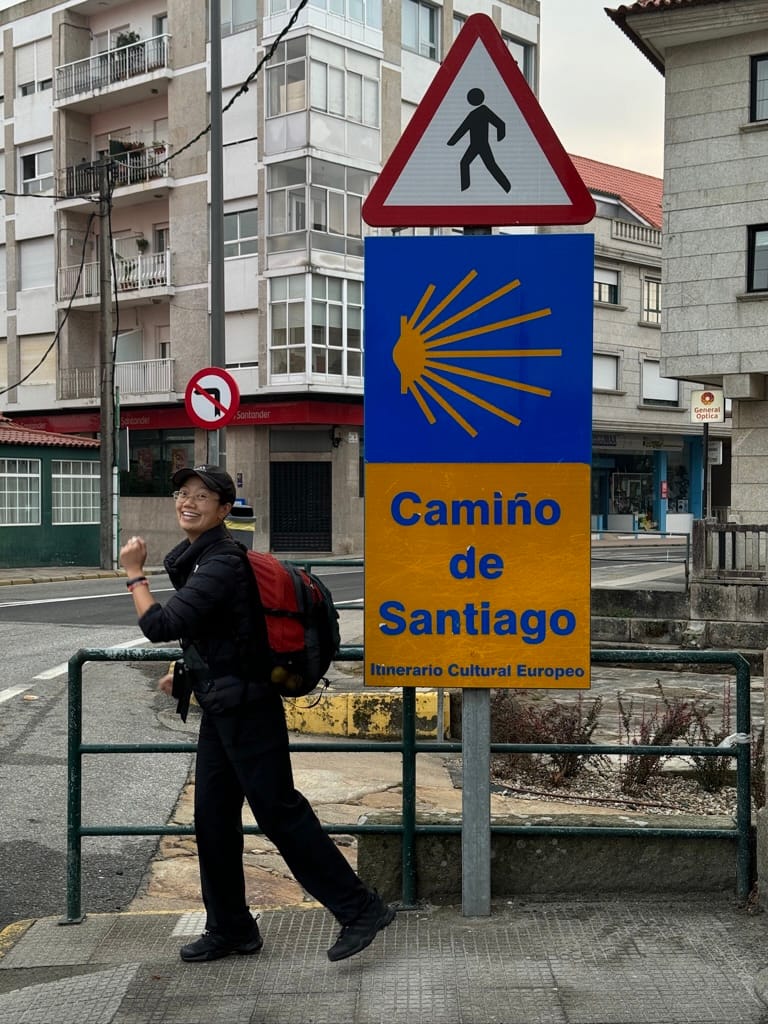
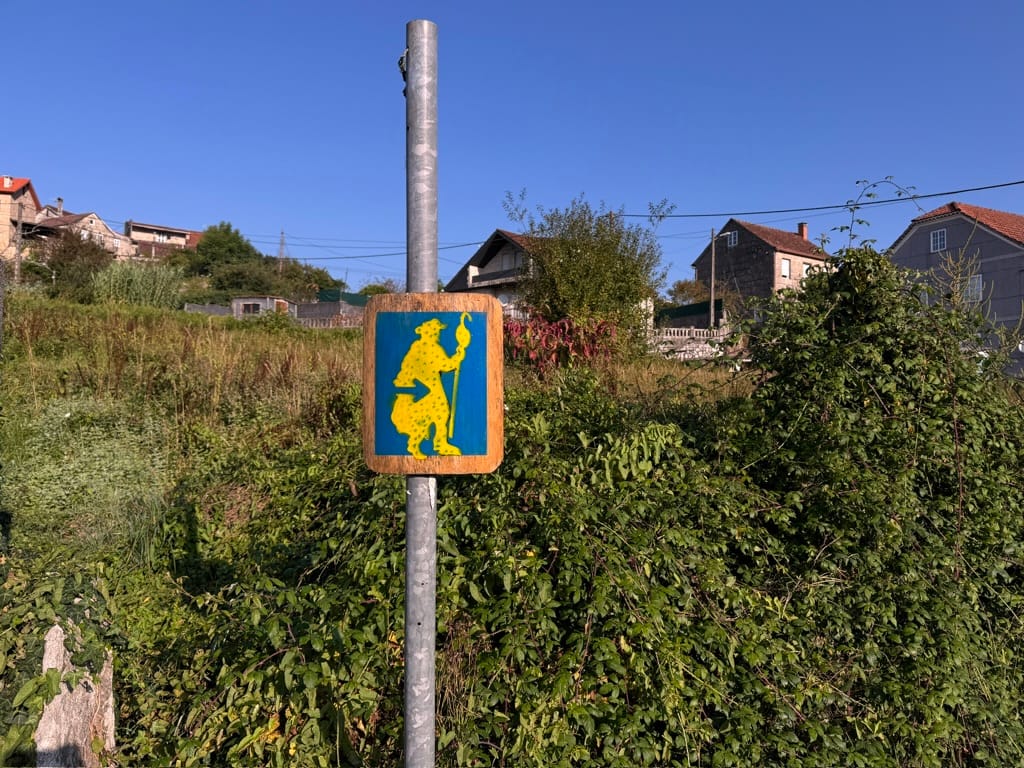
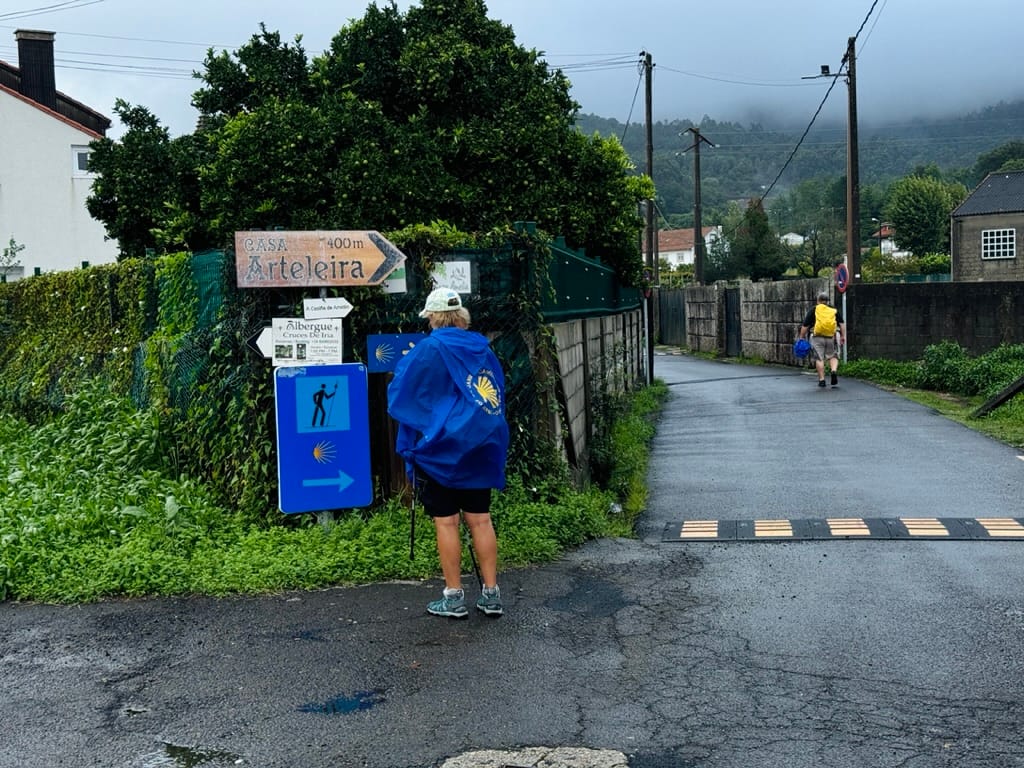
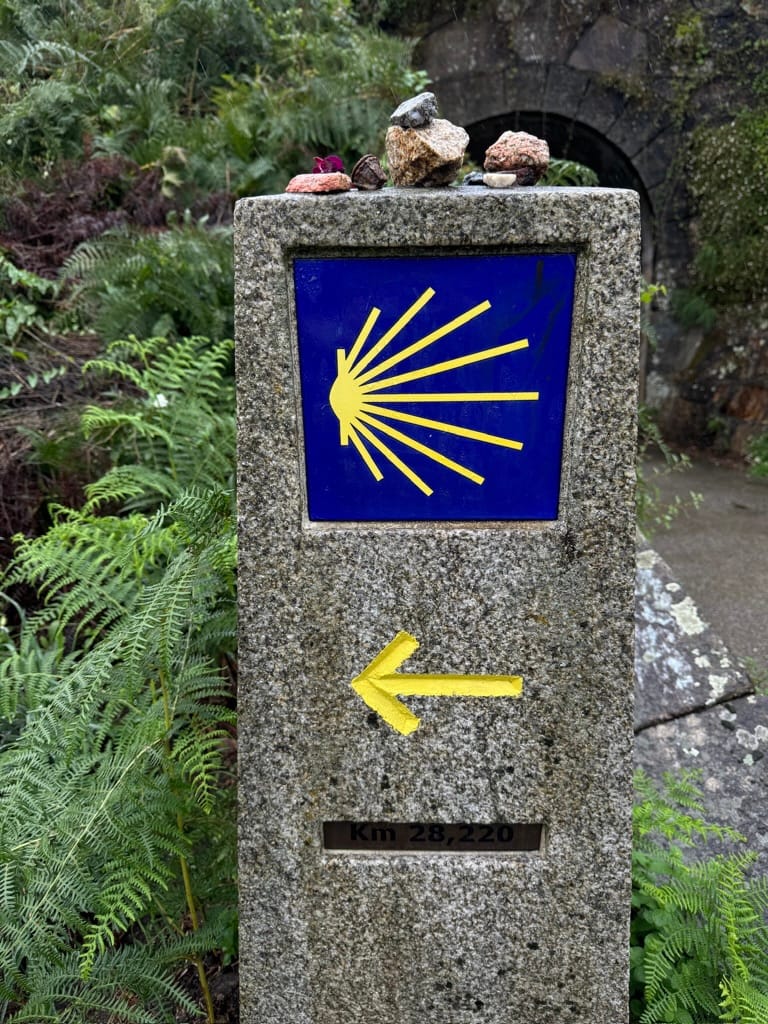
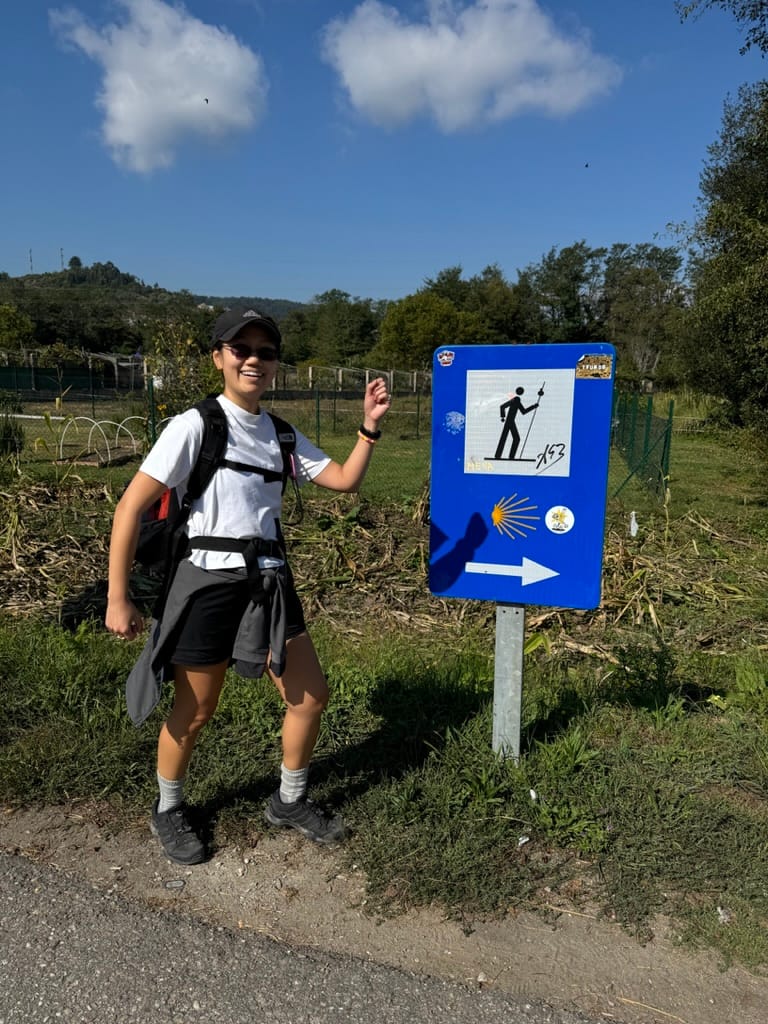
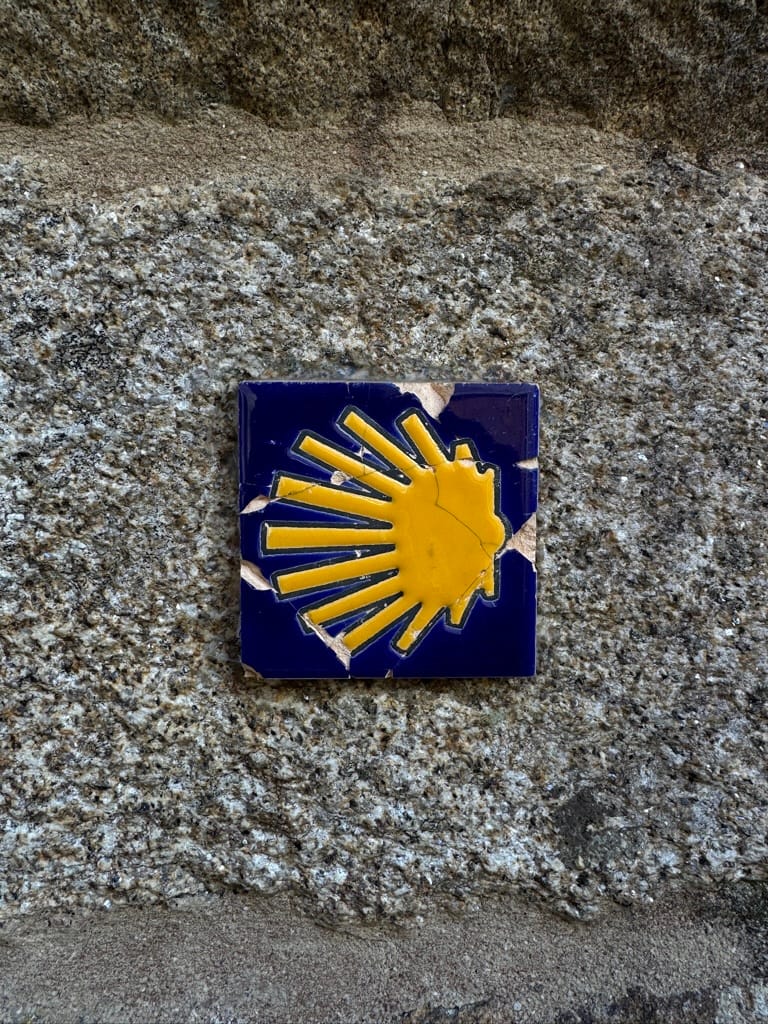
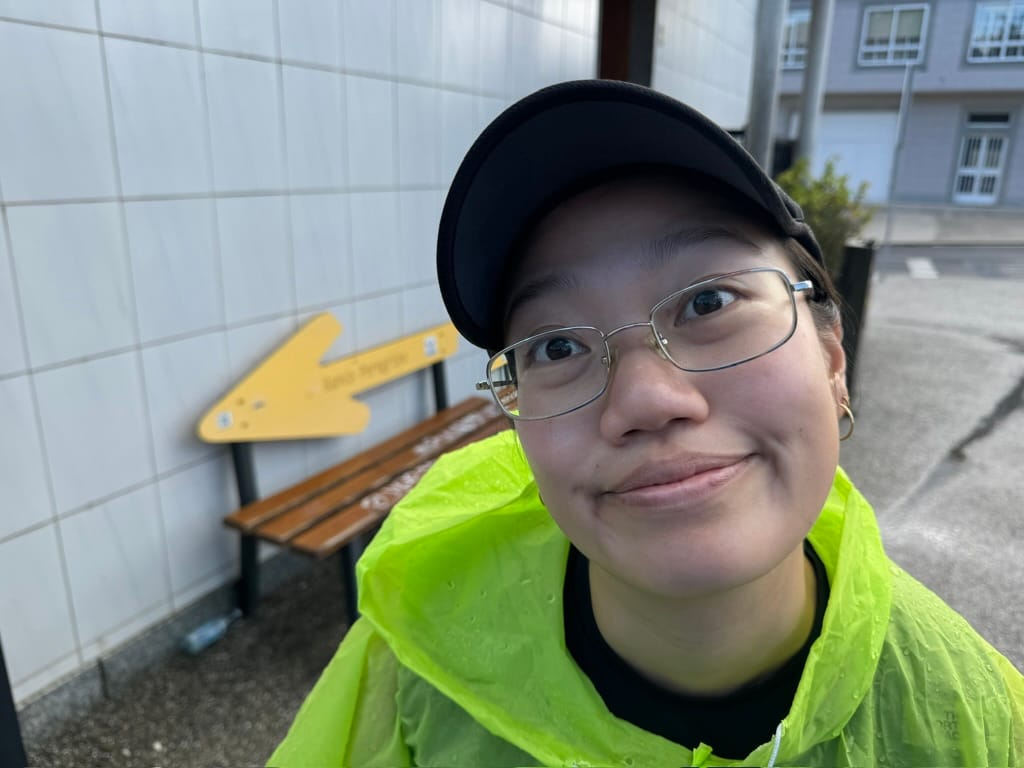
Camino's brand system in full force
Shaan Puri has a cool five-level framework of brands (1 being the weakest and 5 being the strongest) that I think applies quite well with the Camino:
- Product: It is a hike.
- Solution: It is good for body & mind.
- Lifestyle: "I'm a pilgrim."
- Feeling: "I feel spiritually elevated."
- Identity: "I'm part of a century-long tradition."
I repeat, Camino's brand director deserves a raise.
Our Camino Experience
Preparation
To prepare, I asked ChatGPT to create a packing list for this hike. Some of the guidance:
- The backpack shouldn't weigh >10% of your own body weight
- Pack light and prioritize functional/quick-dry clothing
- Think about water-proofing yourself and important items (more on that later)

Days Before Walking
Before starting the walk, my wife and I met up in Porto. She came from visiting friends in Barcelona and I came from a climate tech conference in Malmø. Hence, we didn't pack as lightly as we could have.
Upon arriving in Porto, we were greeted by massive wildfires:
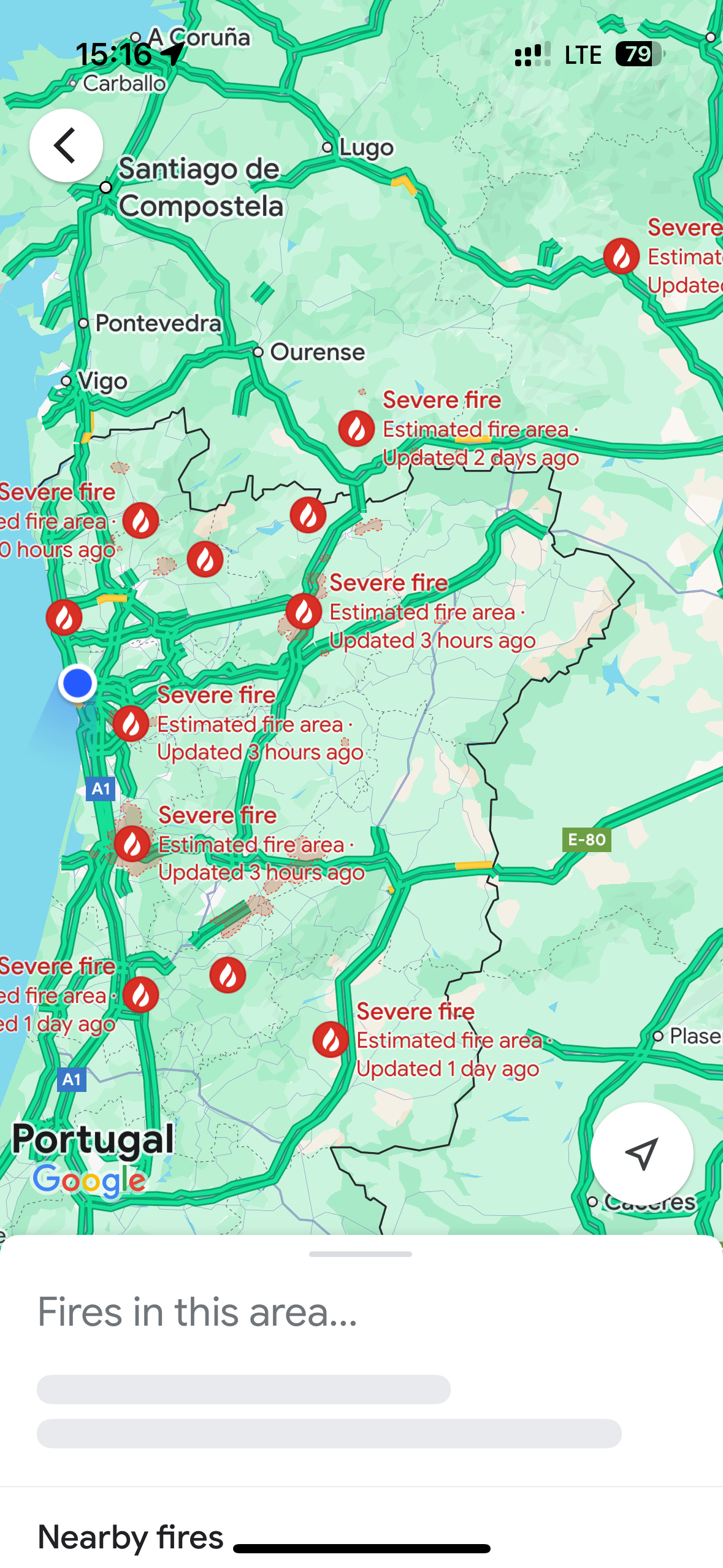
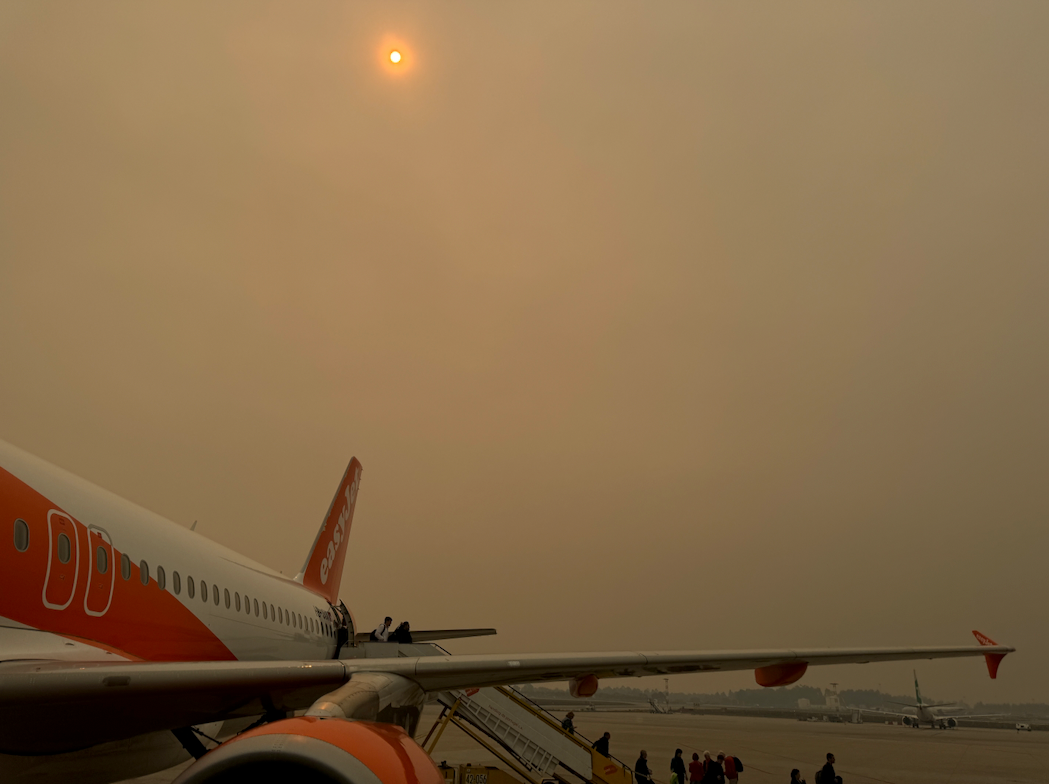
😢
If you want to get involved in climate, you can check out my curated collection of relevant articles.
I was already expecting to walk ~25km each day with an FFP2 mask. But once we traveled from Porto to Vigo/Baiona, the sky cleared up. Poor Portugal.
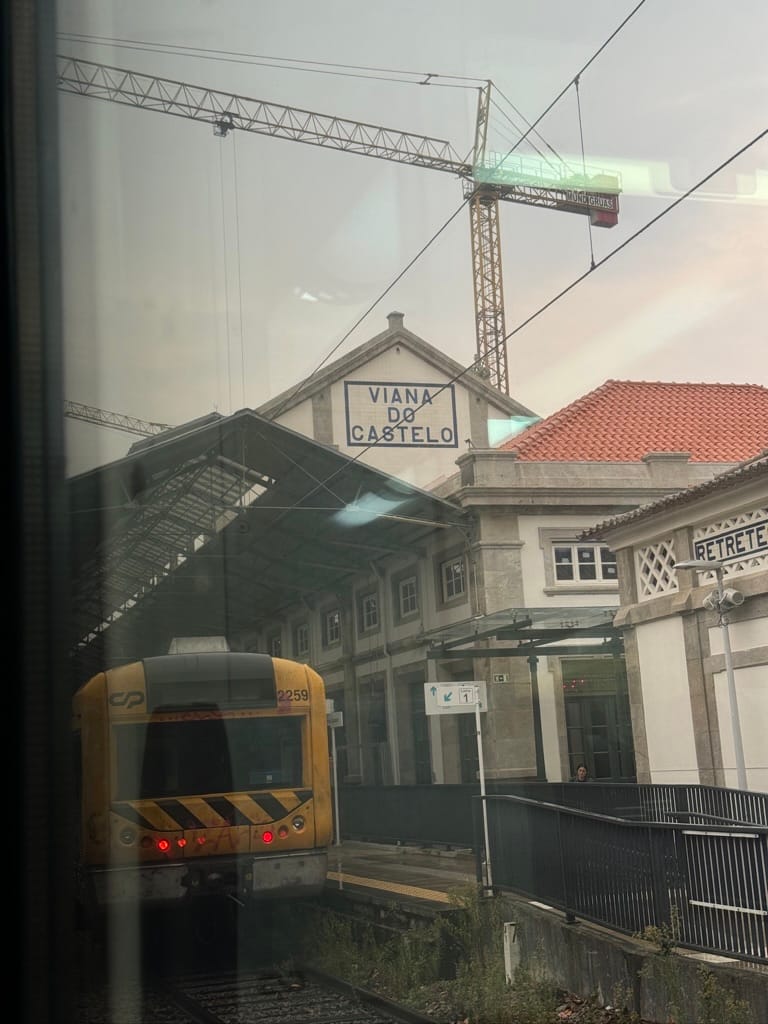
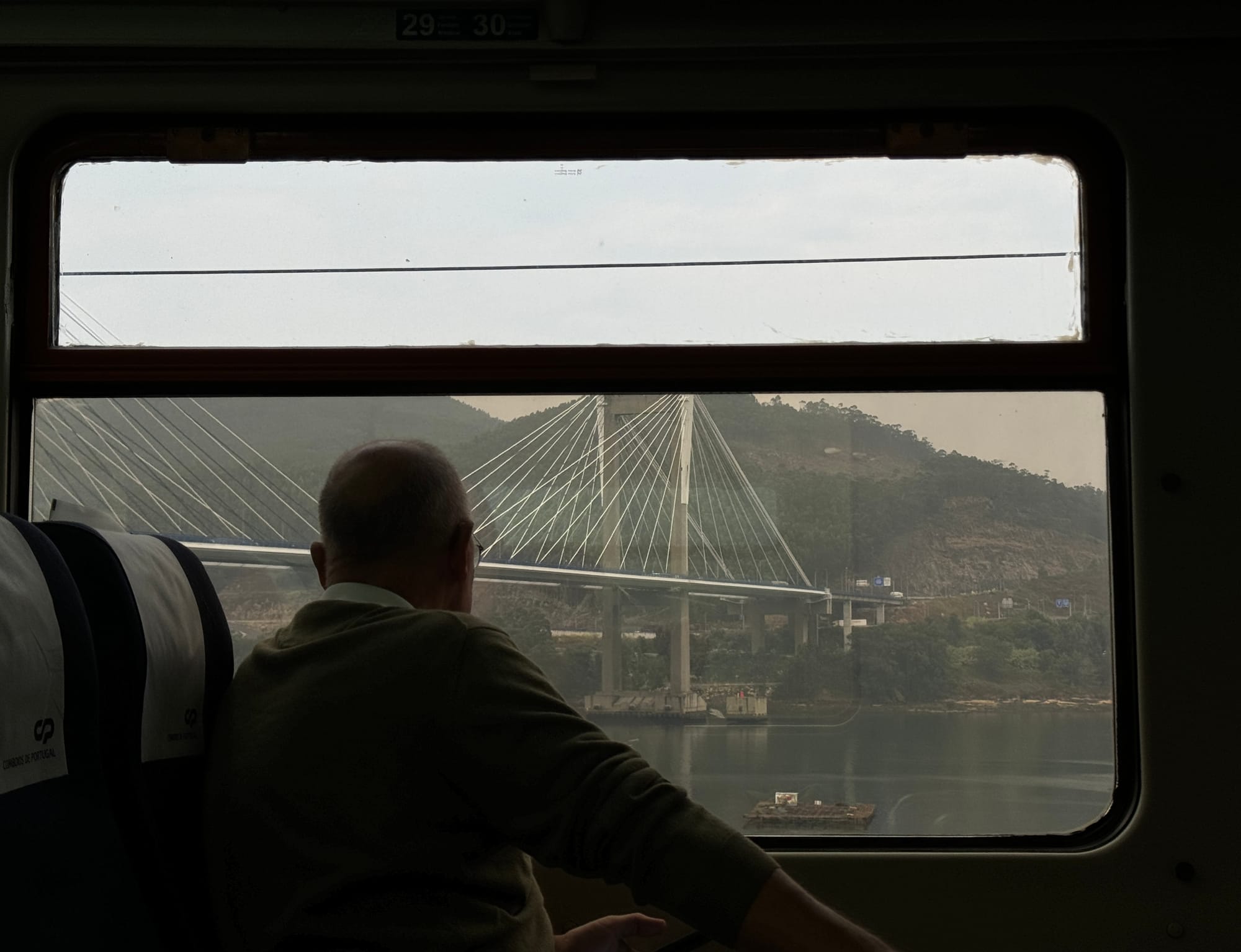
Traincore on the Iberian peninsula.
Day 1: Baiona → Vigo
The journey begins.
- Starting at 6:40AM: We decided to do an early one, since we hadn't pre-booked our accommodation in Vigo. Rumor has it that those can fill up quite quickly and that the early kick-off window for pilgrims is between 6-8am. So, we started early that day.
- Lush Greenery: I was pleasantly surprised about how lush and green the landscape was. In my mind, Spain is dry and very hot. But the Atlantic North-West has its own micro-climate, which is more similar to what you would find in the Pacific North-West (NorCal; Oregon; Washington) 🌿
- Luxe-Packers: There are two types of pilgrims. The ones who carry their own weight (i.e. backpack) and the ones who don't. Apparently, it's quite common to ship the luggage/baggage to the next hotel/hostel/albergue and just walk with a light daypack. Nothing wrong with that but was surprising to see it.
- Credencial Fiasko: When we finally arrived in Vigo, our plan was to check into the official Albergue de Peregrinos. Since I decided against getting my own credencial, I was barred from check-in. Lesson learned, just spend the €3 even if it's just for the sake of having an accommodation contingency.
- Arrows vs. Google Maps: On day 1, our goal was to spend as much time along the coast and we trusted Google Maps. But I had the impression that at a certain point it led us over the highway into the city and the last hour definitely felt less scenic. If you want scenic, trust the arrows and camino markers.
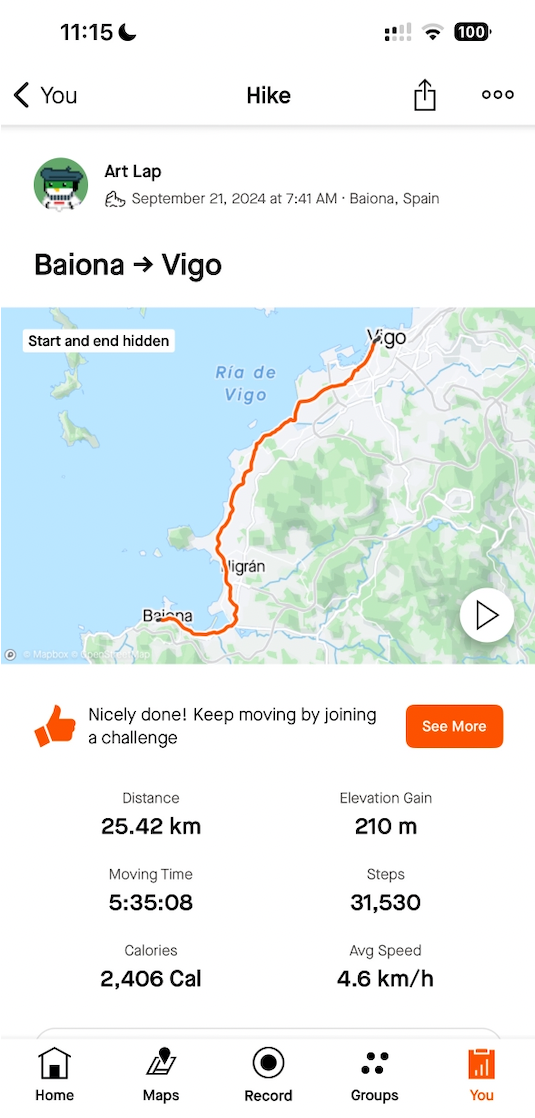
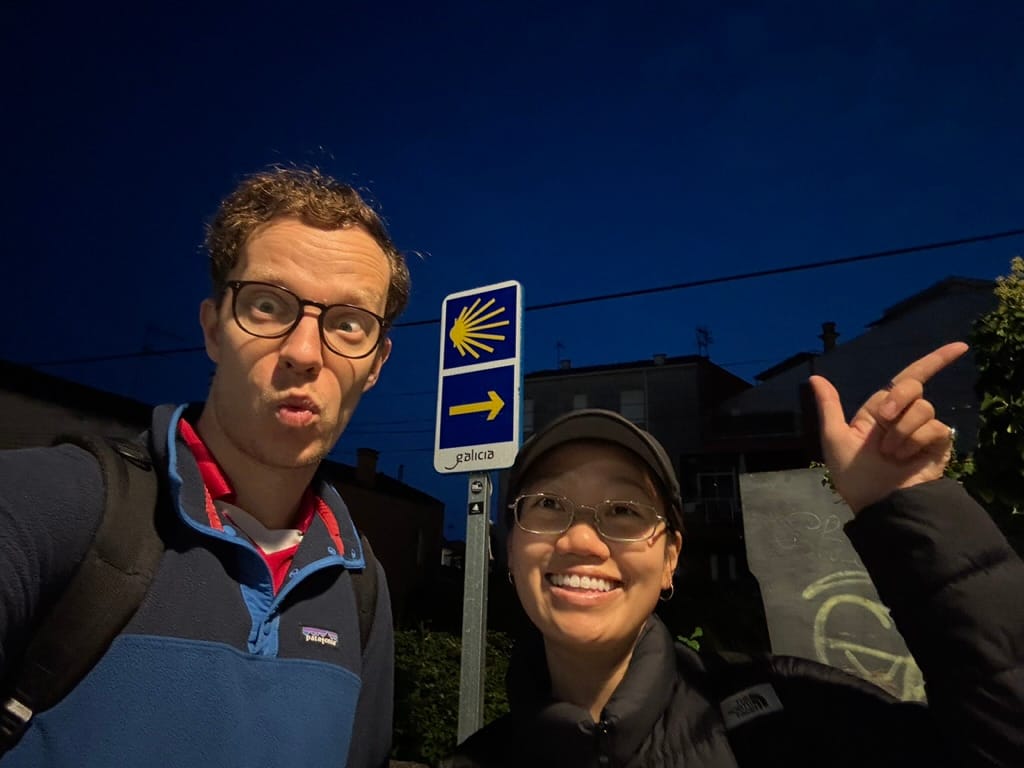
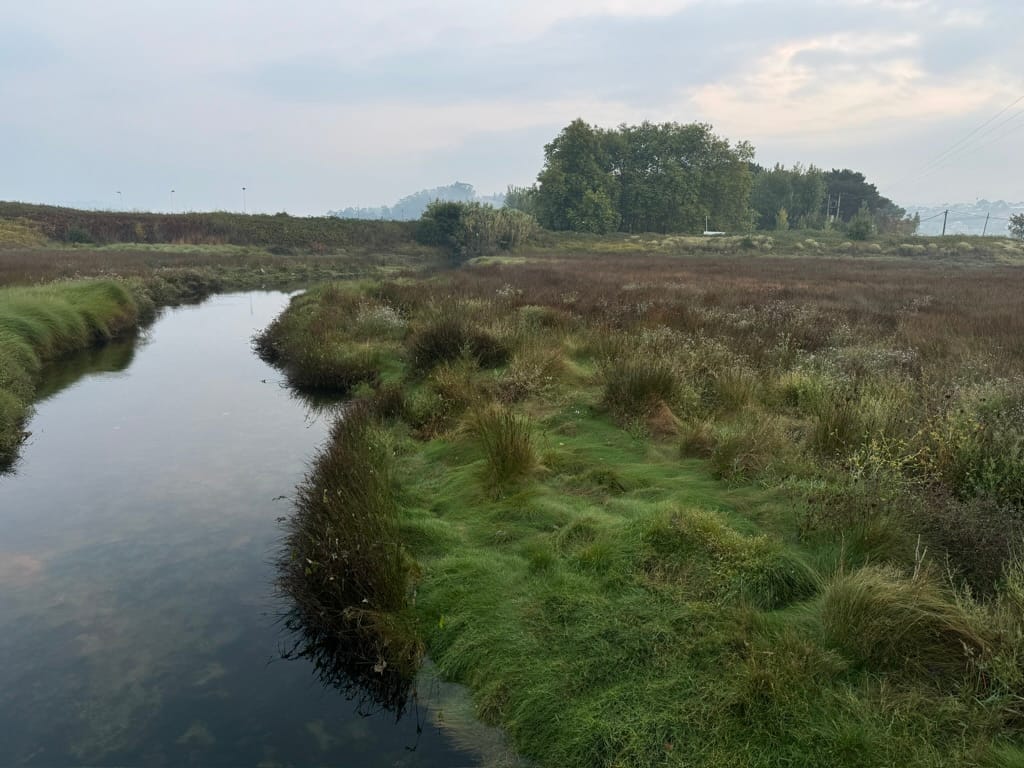
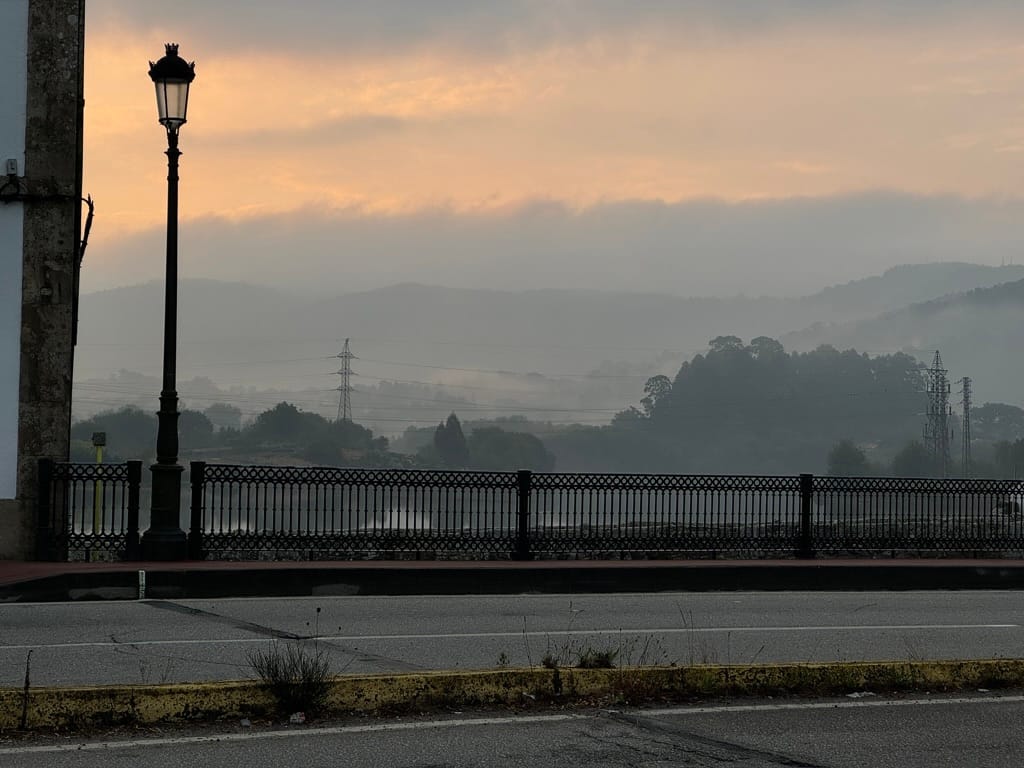
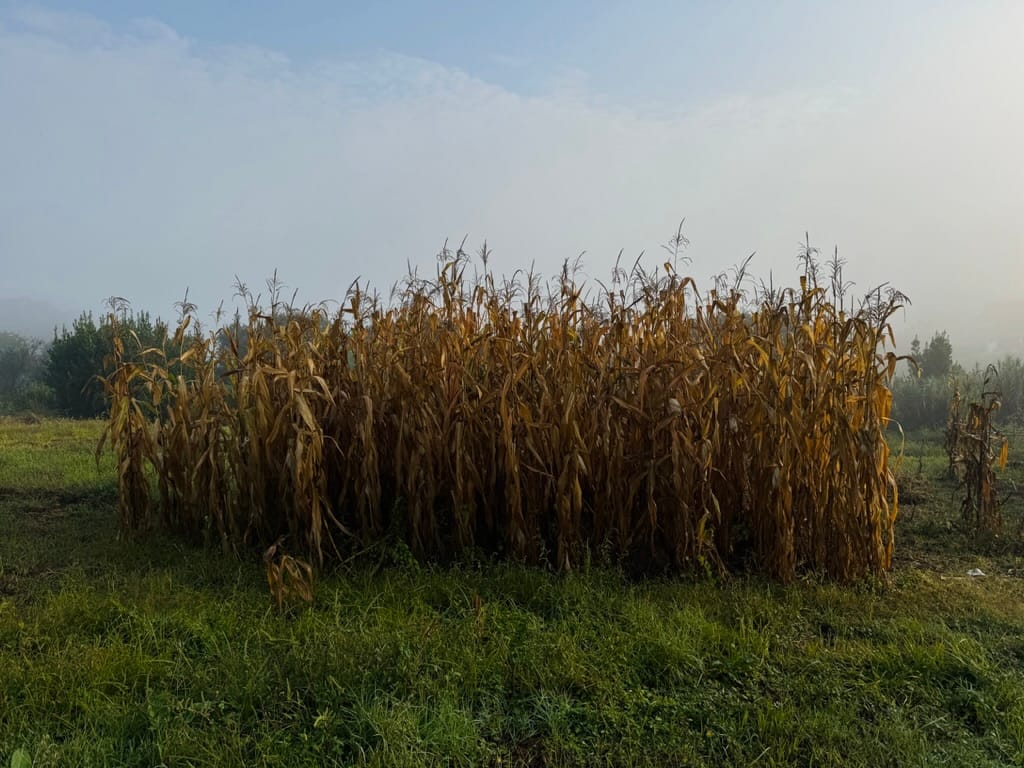
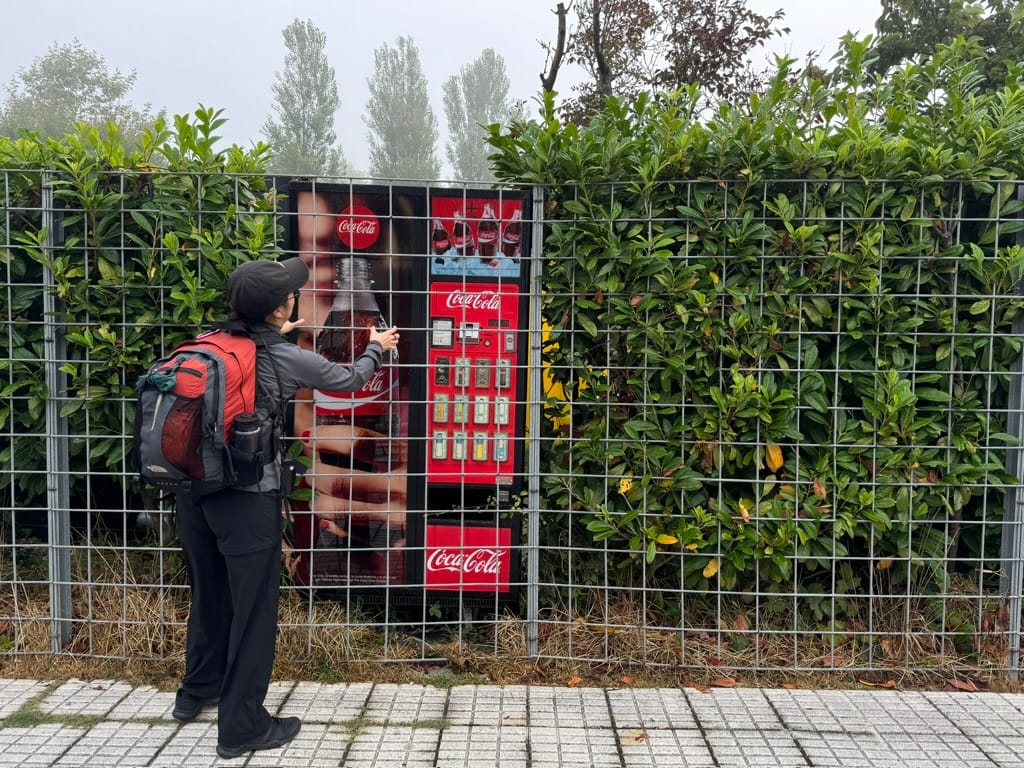
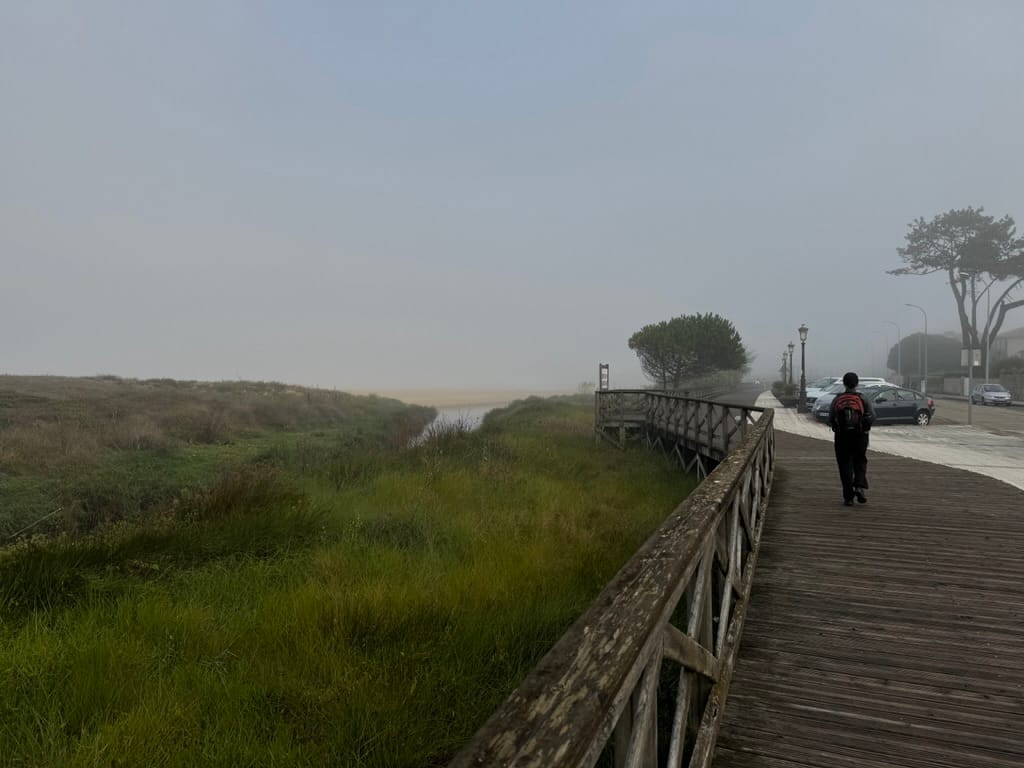
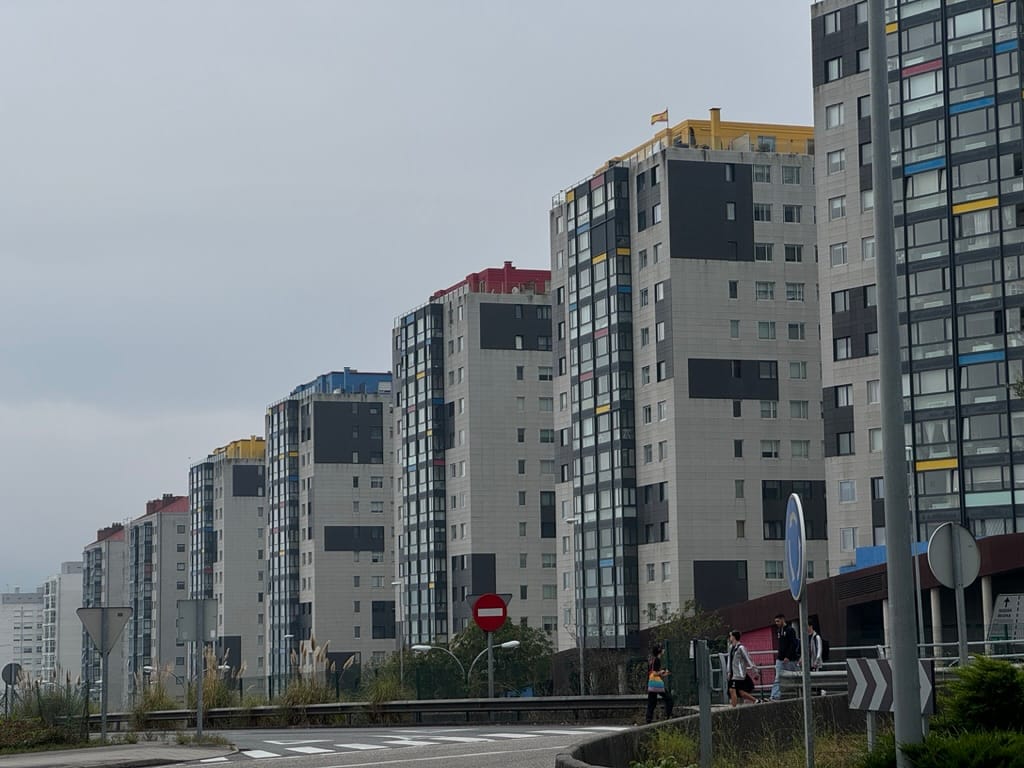
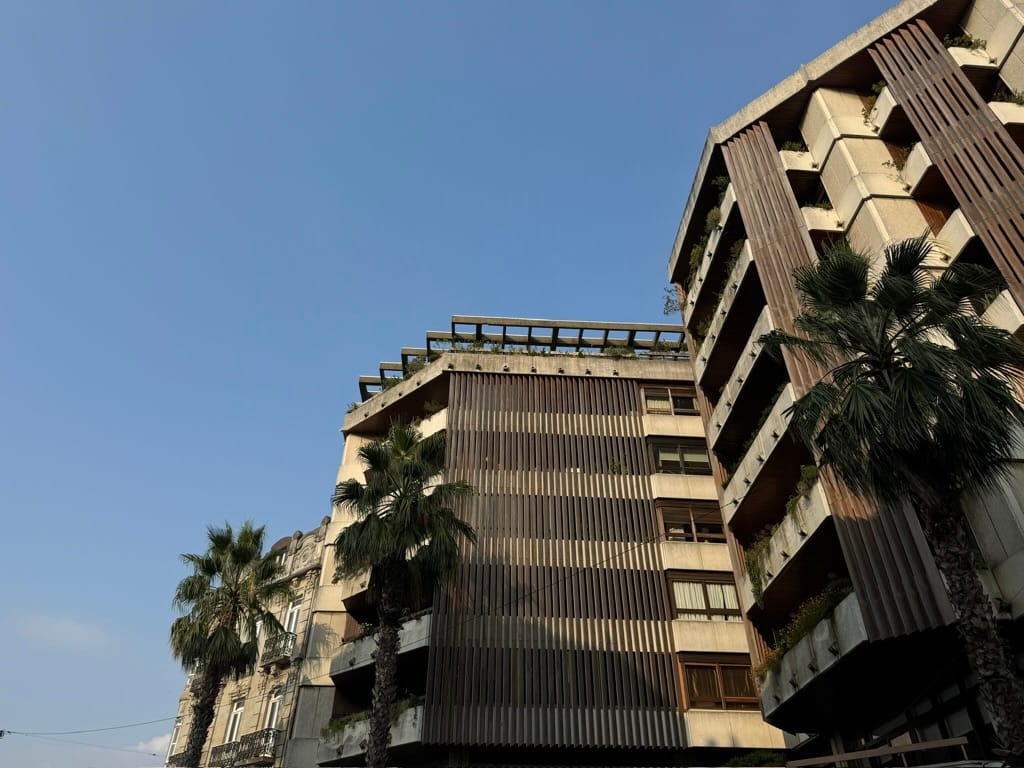
Day 1 impressions. Getting started 🚶♀️🚶♂️
Vigo feels like a large industrial port town with a cute old town carved out in the middle. Vigo is known for being the center of the European fish canning industry.
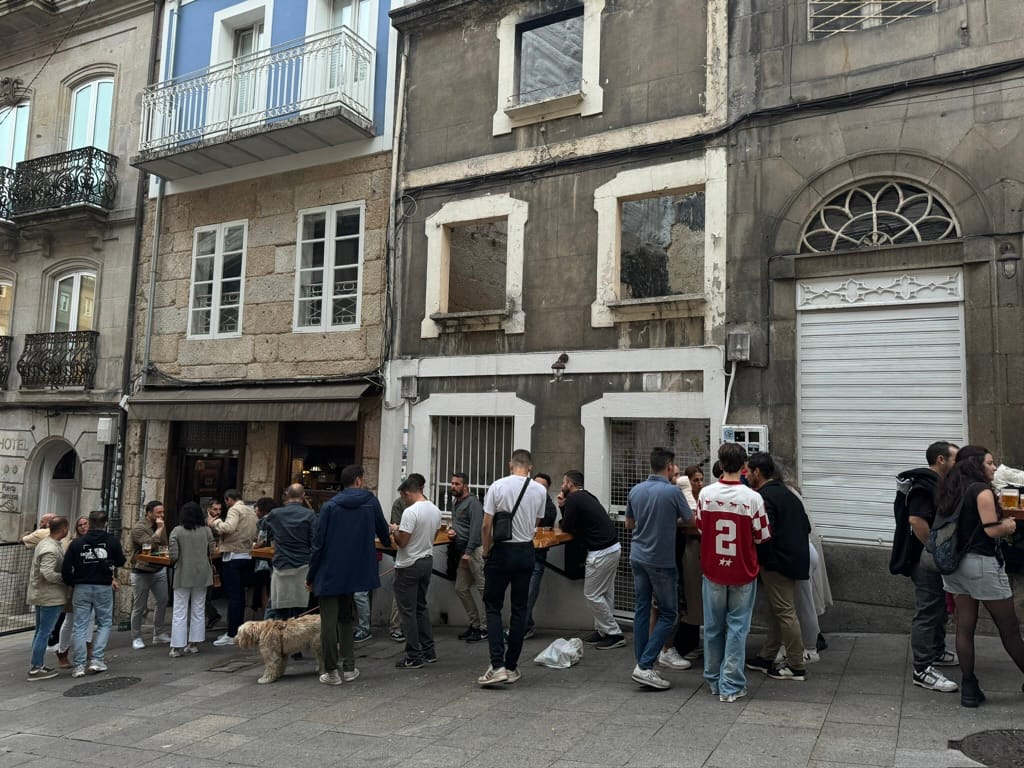
Day 2: Vigo → Arcade
Kicking-off to a long one.
- NPC Granny: One hour into the walk, we came across a bus stop where an old lady was sitting next to a crook-looking fella. The old lady addressed us and said "¡Chicos, el camino esta por allí!" pointing the finger up the hill. We trusted her judgement, started climbing and eventually ended up on the right path. It felt like a scene out of an RPG computer game. Lesson learned: trust the arrows and keep your eyes open.
- Don't Postpone Breakfast/Re-Fueling: We skipped a couple of cafes and bakeries on our way to that bus stop. We wanted to delay breakfast for as long as possible but it turned out that it would take yet another 2-3 hours until we could find something to eat. If you are considering whether you should eat or march on, in doubt, always take a break and re-fuel.
- Density of Pilgrims Increasing: The amount of other pilgrims increased significantly past Vigo. Kind of makes sense: The closer you get to the prize, the more players you'll encounter along the way.
- "Can't Get Smoked Again!" I started playing a small game in my own mind. I would pick the frailest-looking pilgrim and channel my inner Michael Jordan. Then, I would take it personally and try to smoke them - "overtake them" in normal person language. It was a stupid little game but it persisted throughout the end of our journey.
- Boombox Cafe Along the Way: Finally, we encountered a cafe with refreshments in the middle of a forest pathway. It had massive speakers pointed outward and was attracting pilgrims like a bright light would attract moths. We followed and stuffed our bellies.
- Convos Start Getting Deeper: After more than 10 hours of uninterrupted walking time with someone, you'll eventually run out of superficial topics and start peeling the onion. Talking about the details of friend's weddings, talking about own personality traits, talking about god knows what.
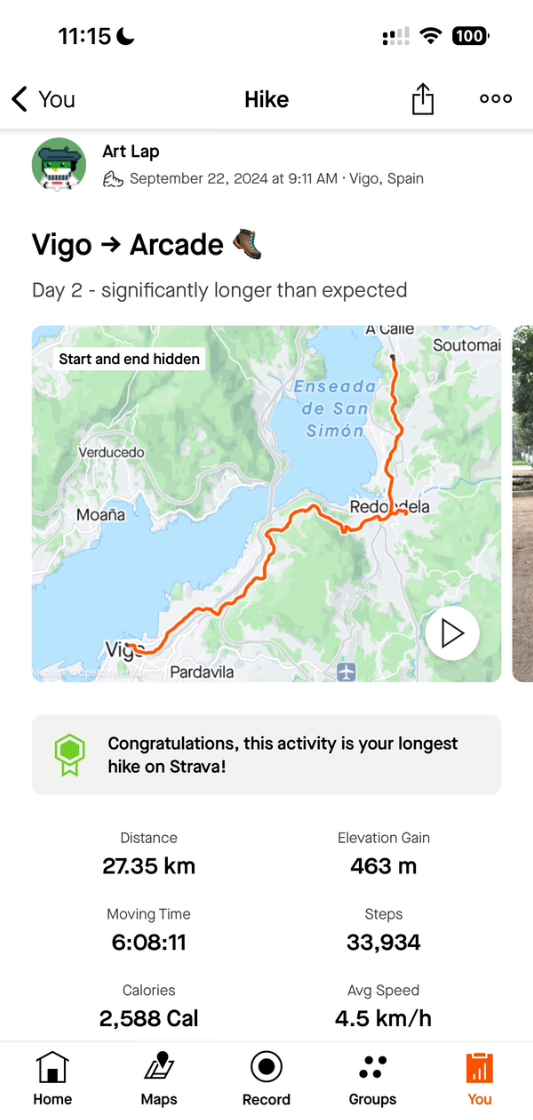
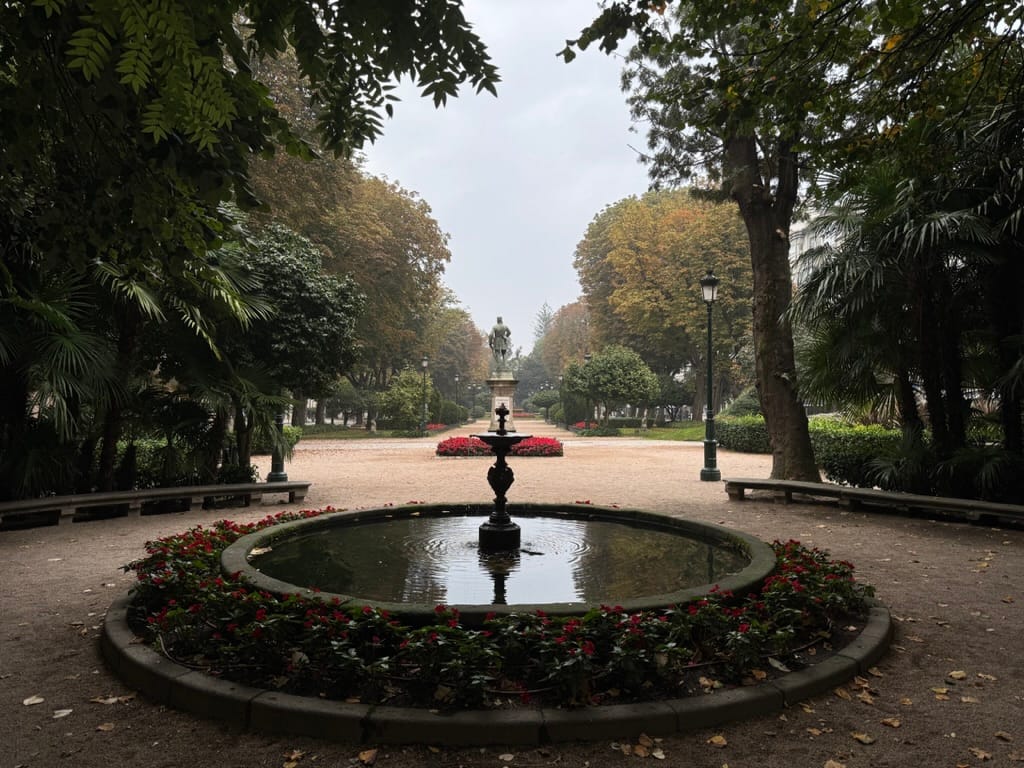
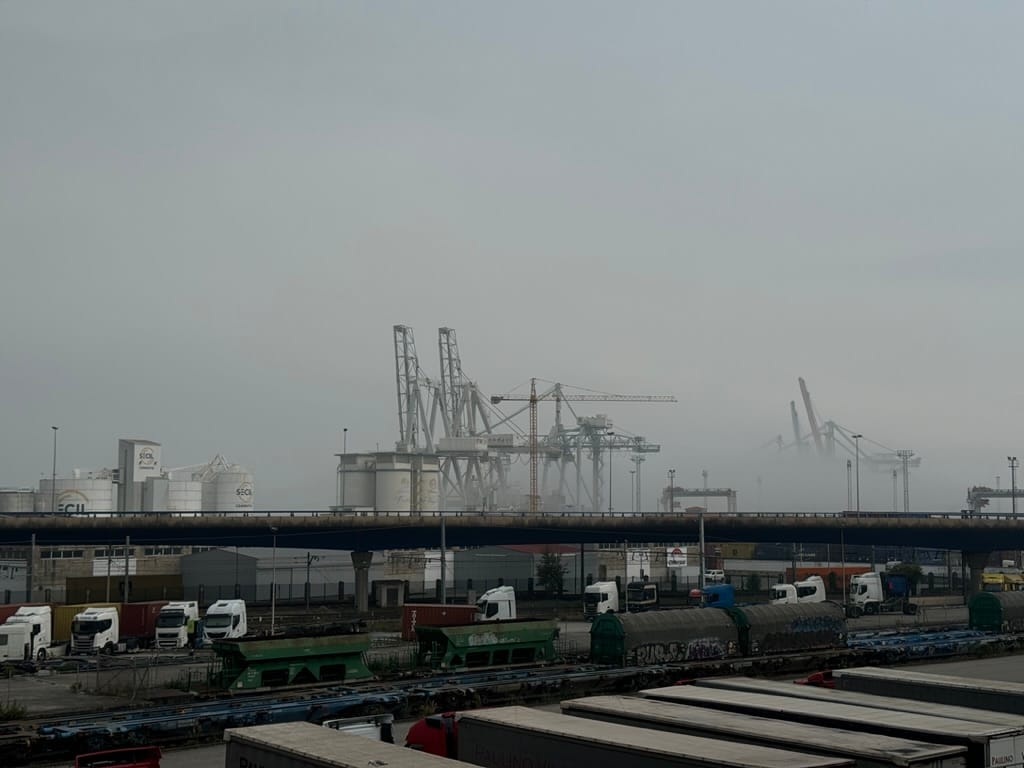
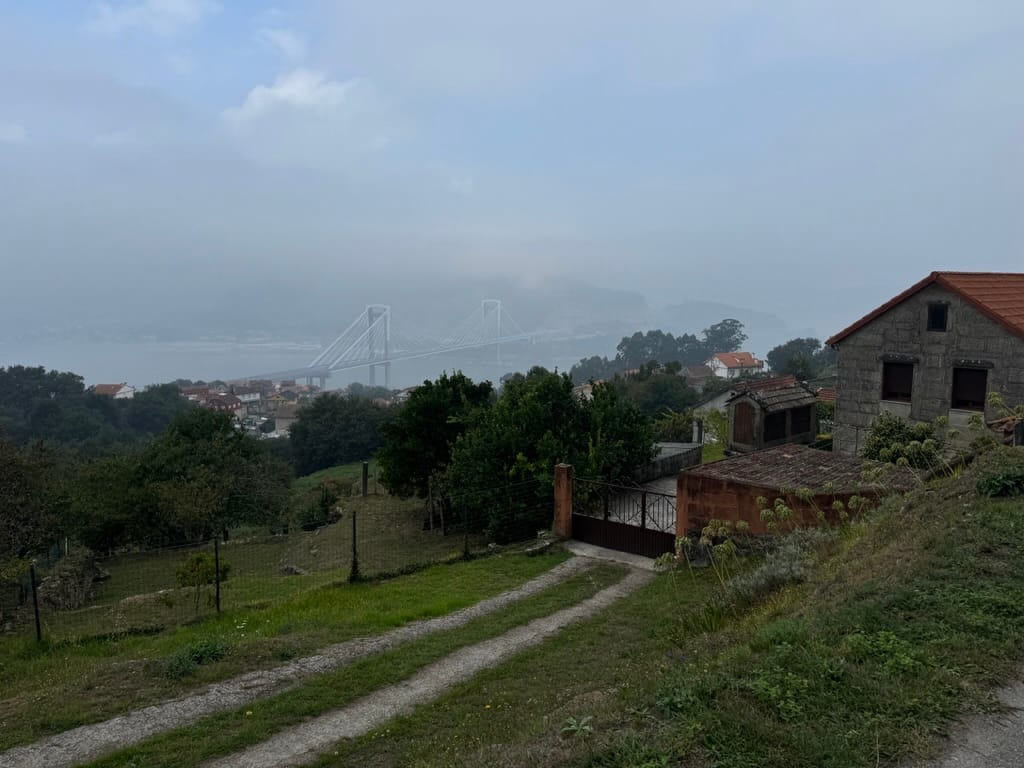
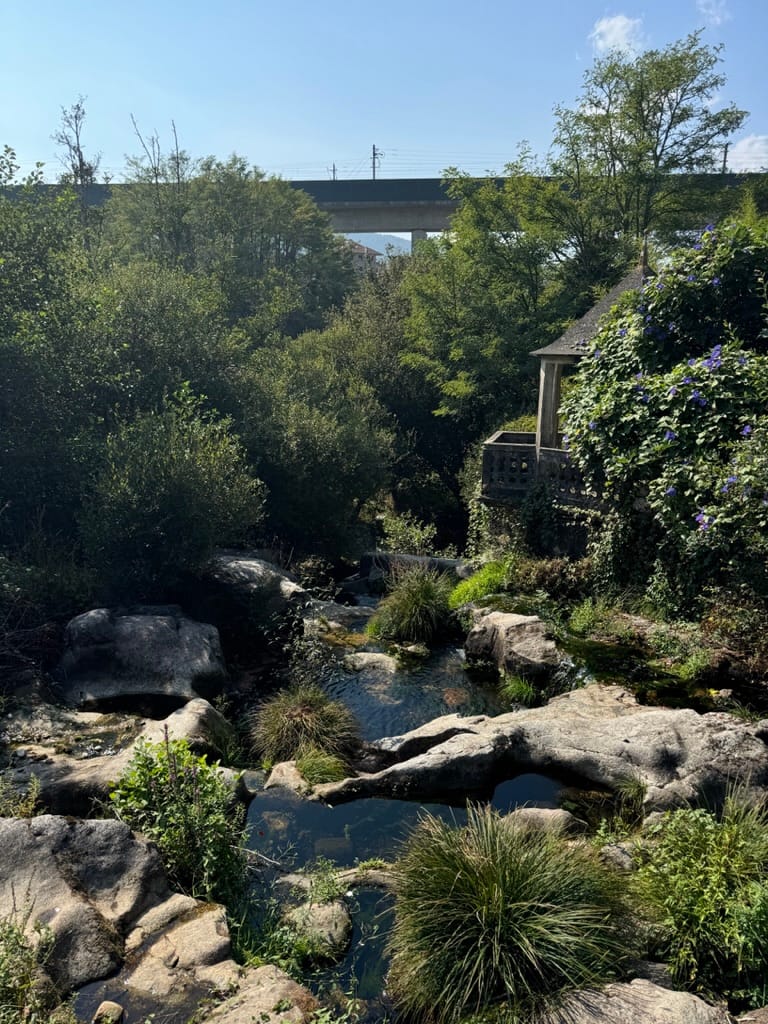
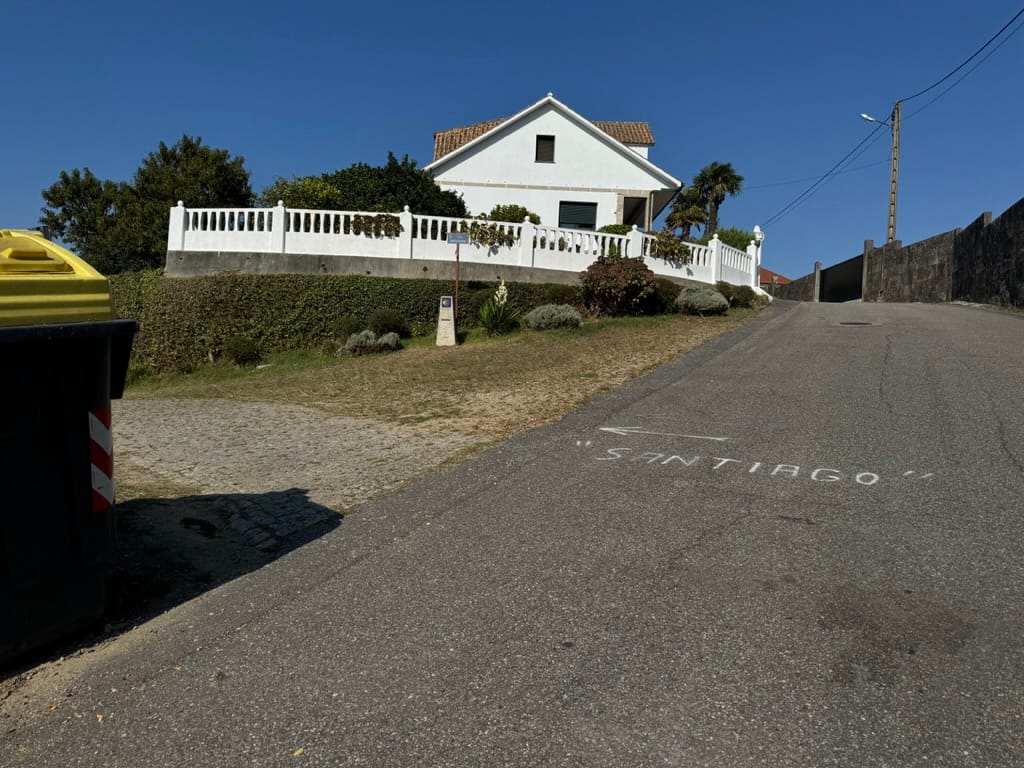
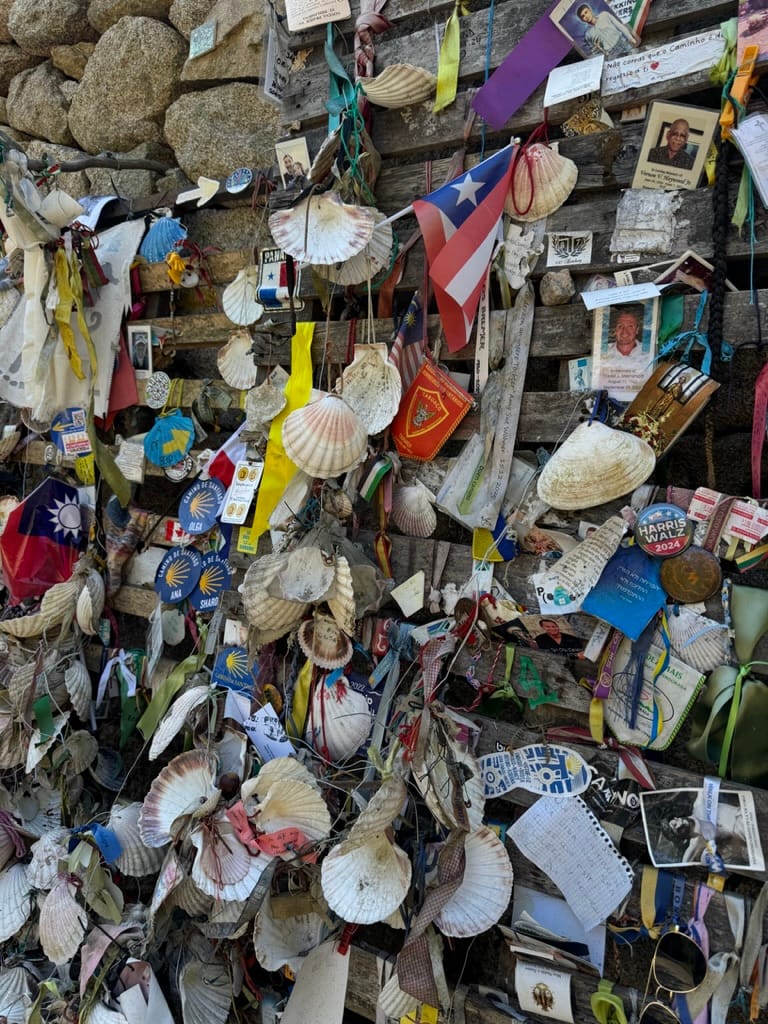
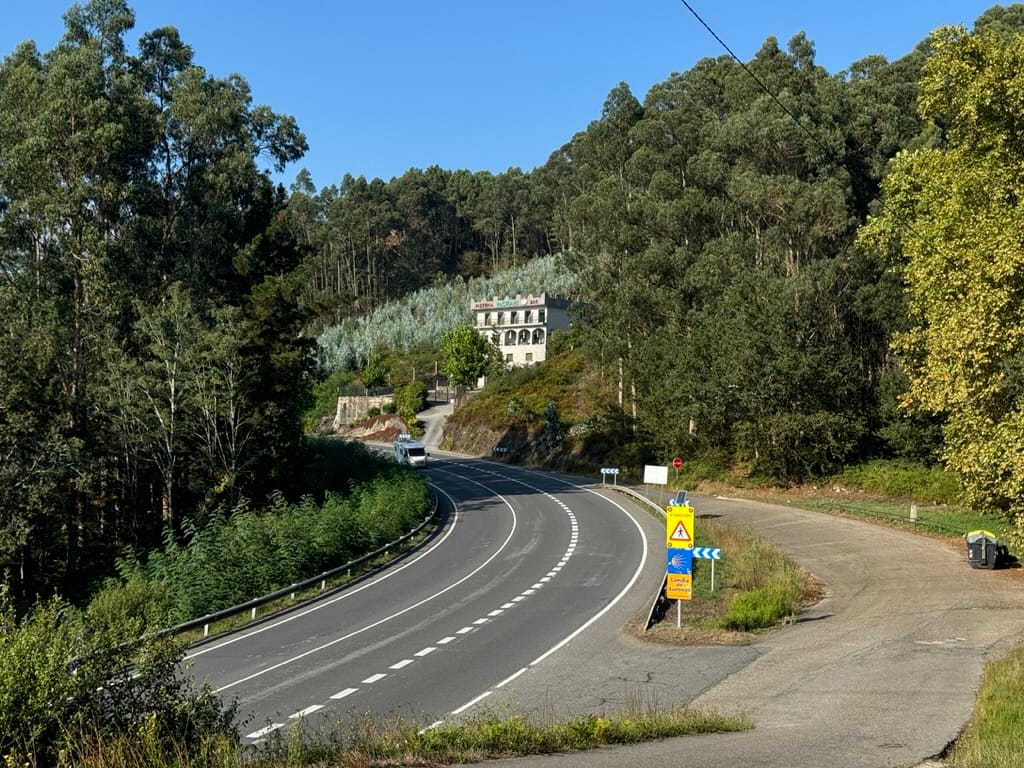
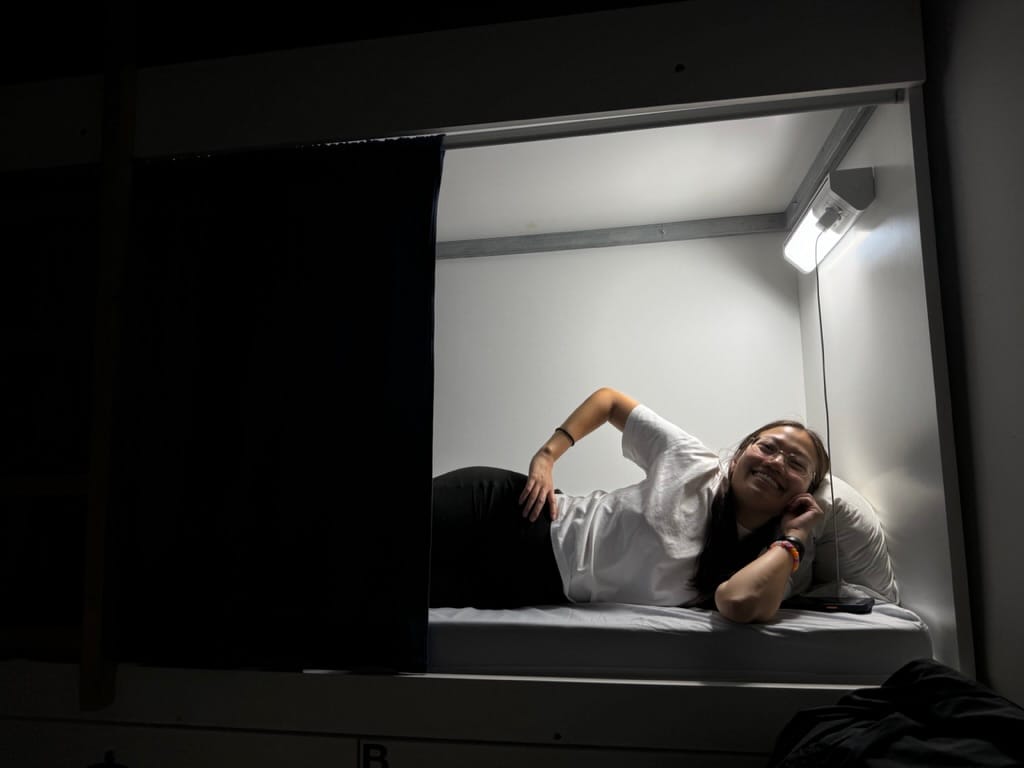
Day 2 impressions. Significantly longer than expected 😳
After a longer than expected day 2, we arrived in the small village called Arcade. We checked into our albergue, had a shower, and went for a marisco-fueled dinner.
One thing that caught my attention was that all the houses had two compartments next to their entry gates:
- One box for letters → Cartas
- One box for bread → Pan 🍞
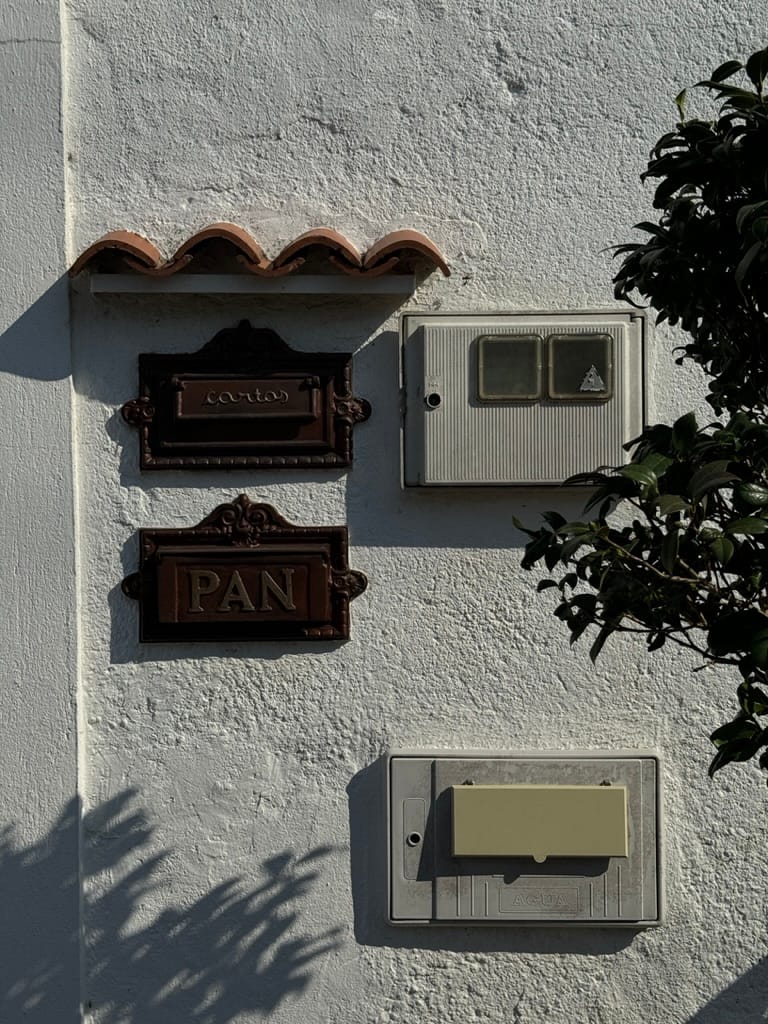
Day 3: Arcade → Pontevedra
One important thing about Arcade is that it features the Puente Sanpayo bridge. It is also a geographical choke point where Napoleon got smoked during his Napoleonic wars.

- Small Businesses Along the Route: The closer we would get to Santiago, the more you could find small businesses (cafes; lemonade stands; crafts vendors; etc.) splayed on the side of the road.
- Silly Games: Even more hours into the walk, we started playing silly games. My favorite one was picking 3 fashion brands for the other person that (a) they had to wear exclusively until the end of their lives and (b) they would absolutely hate. I picked the following for Sara: (1) Desigual, (2) Philipp Plein, and (3) Ed Hardy.
- Starting to Recognize Other Pilgrims: The more time you spend on the road, the more you bump into the same people who walk at a similar schedule as you do. "Buen camino!" 😏
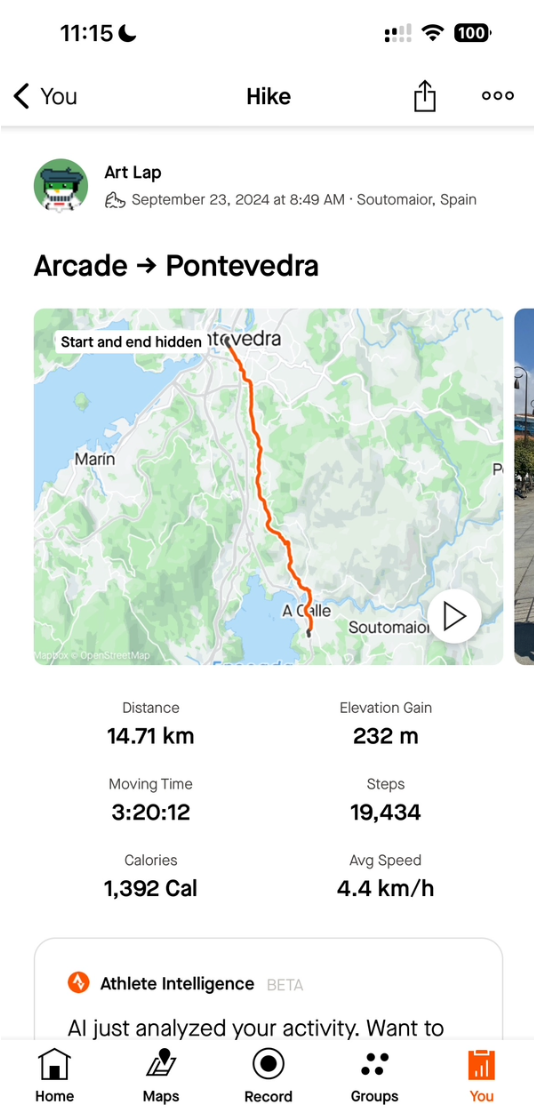
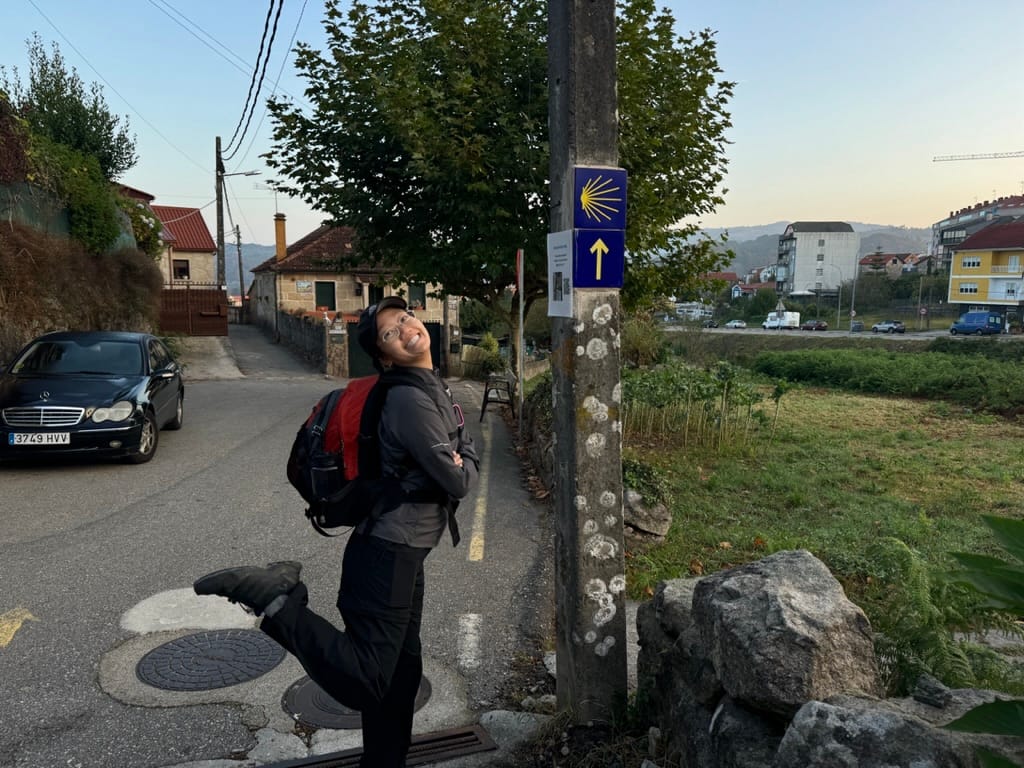
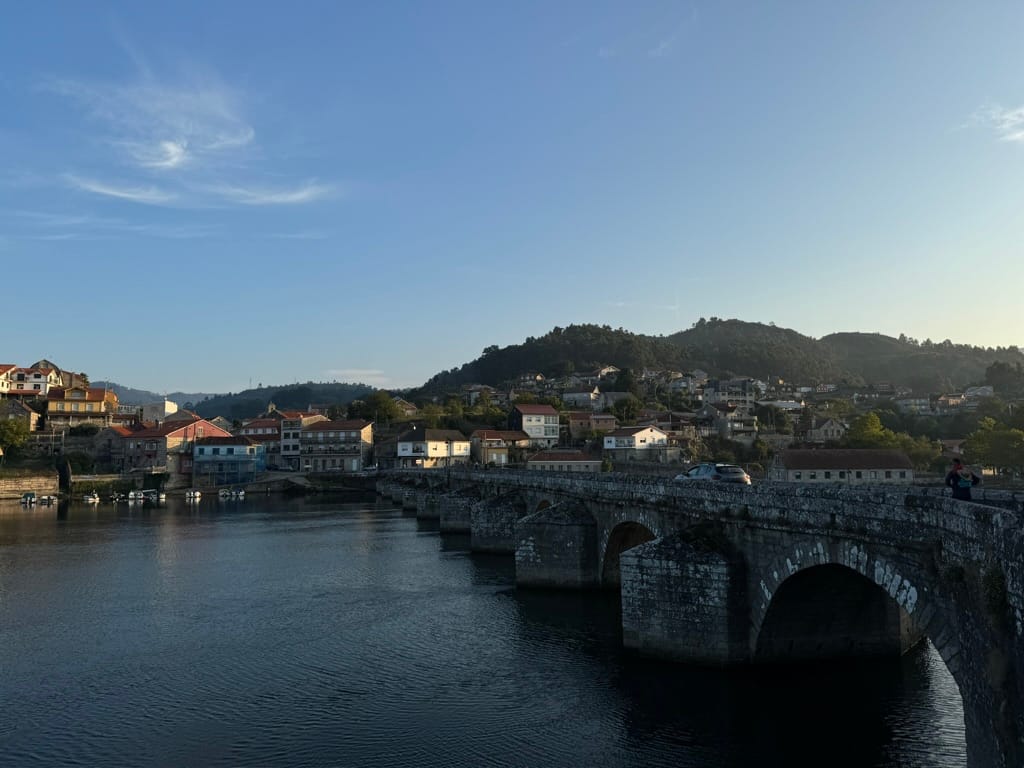
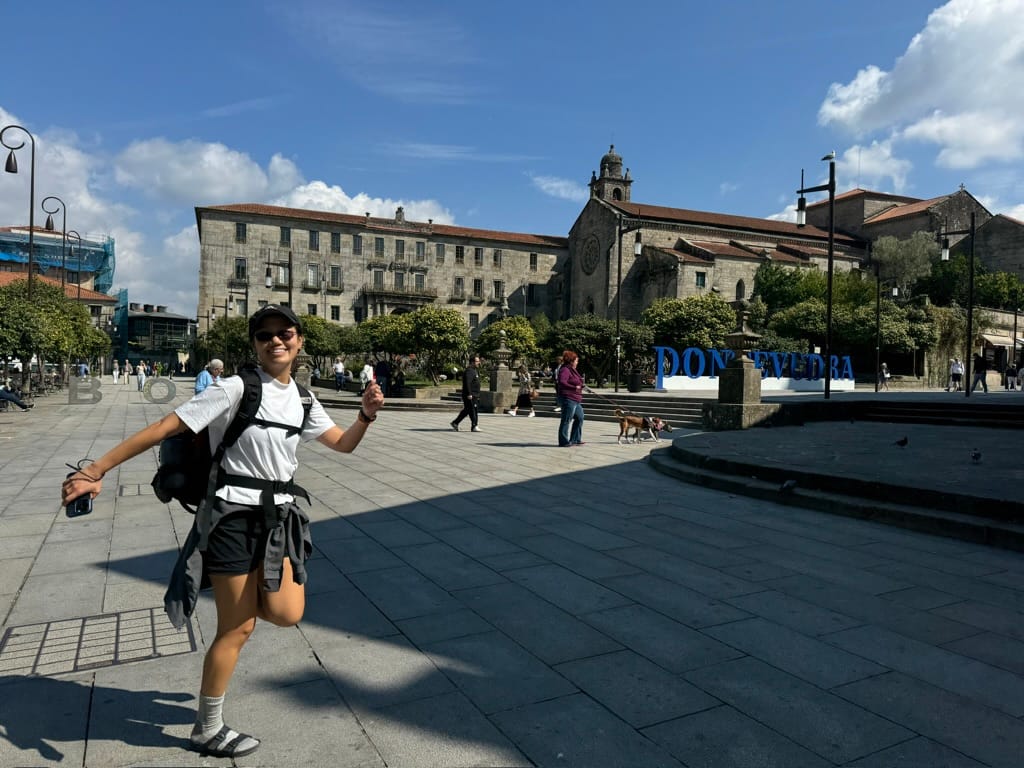
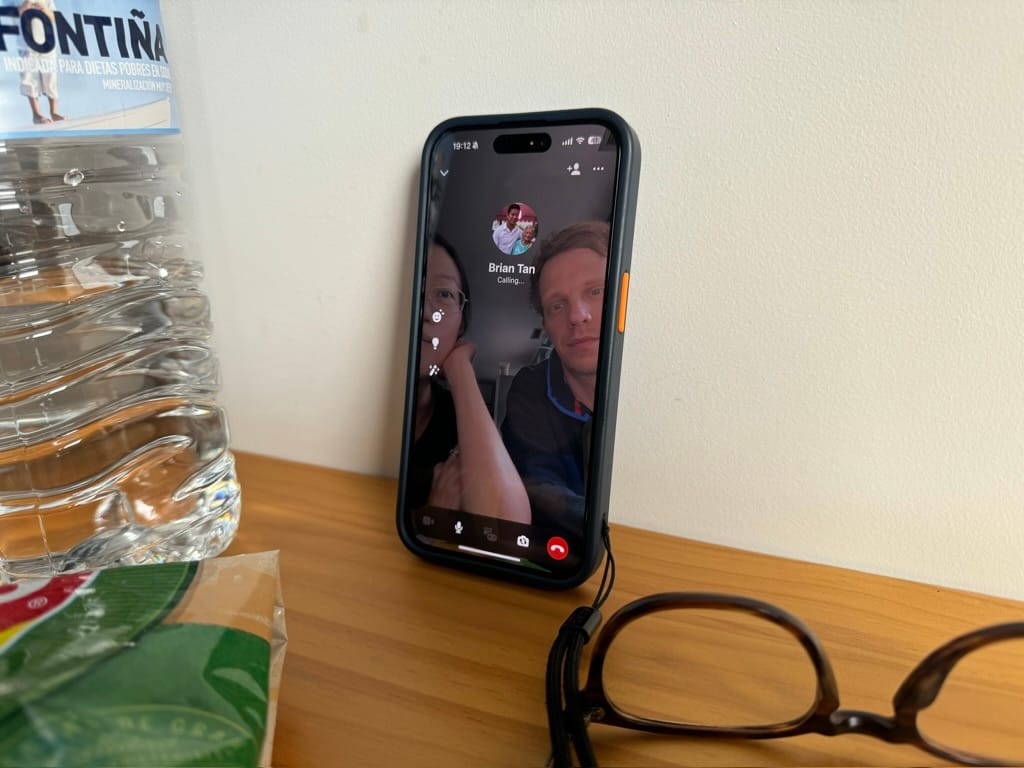
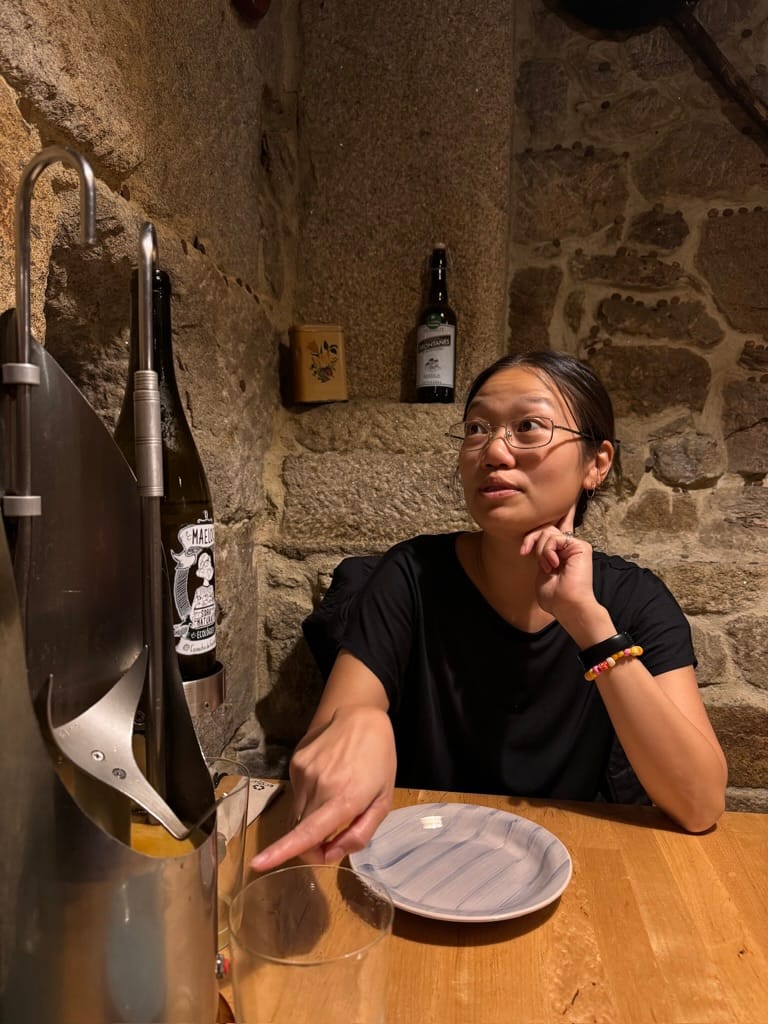
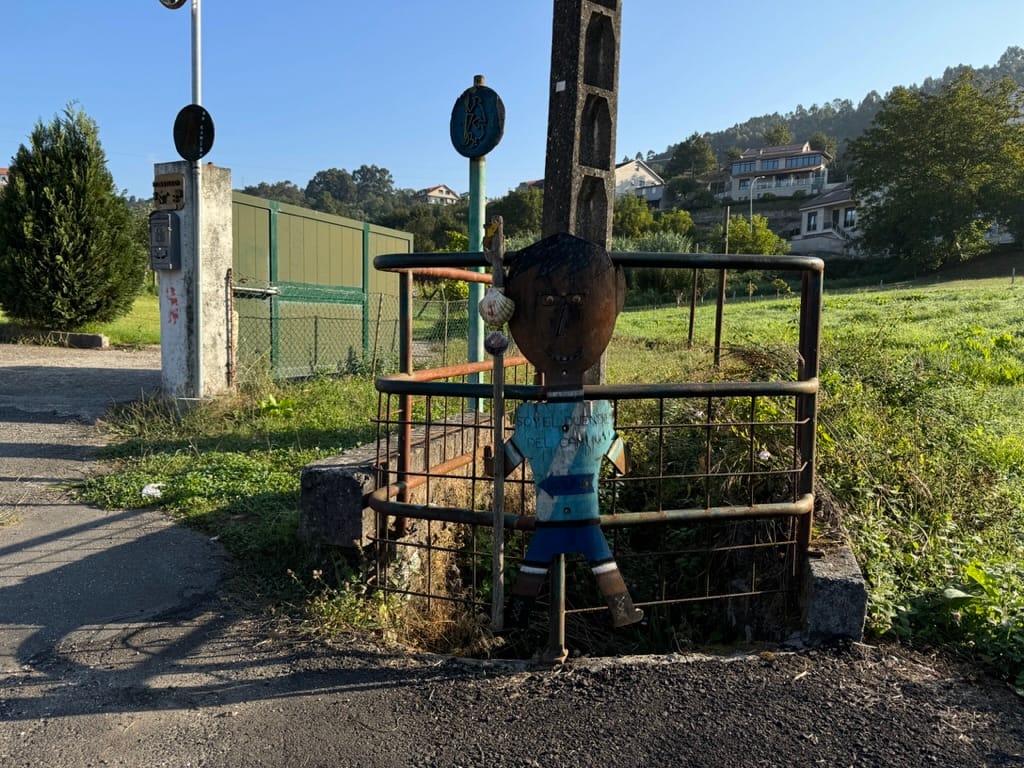
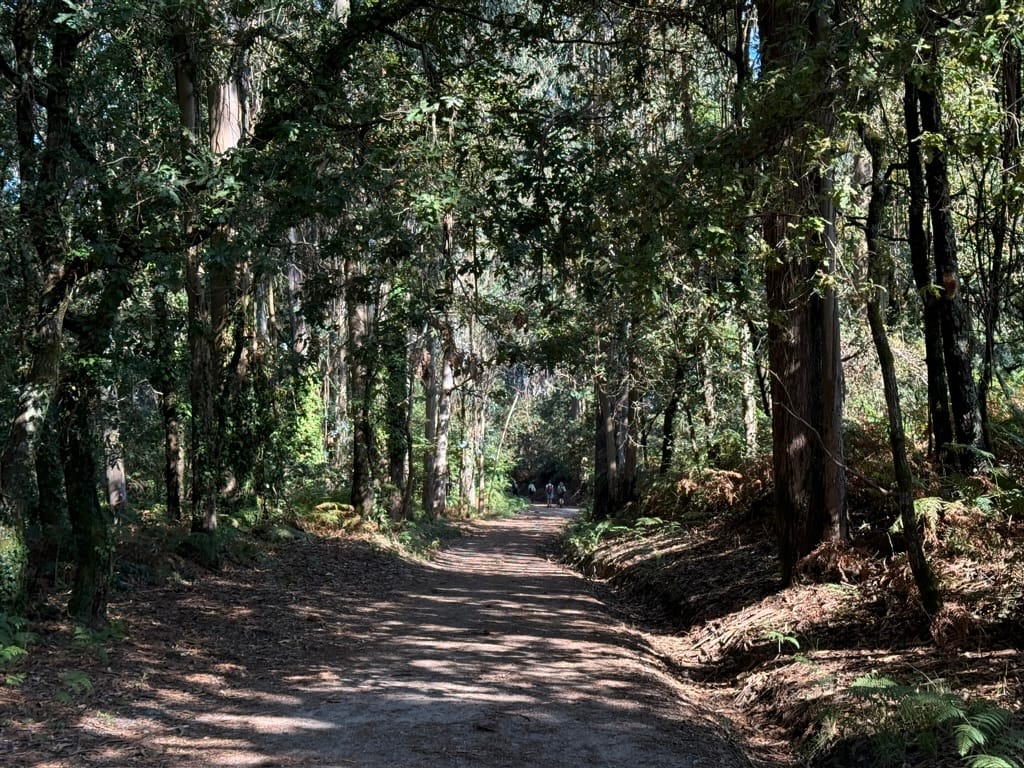
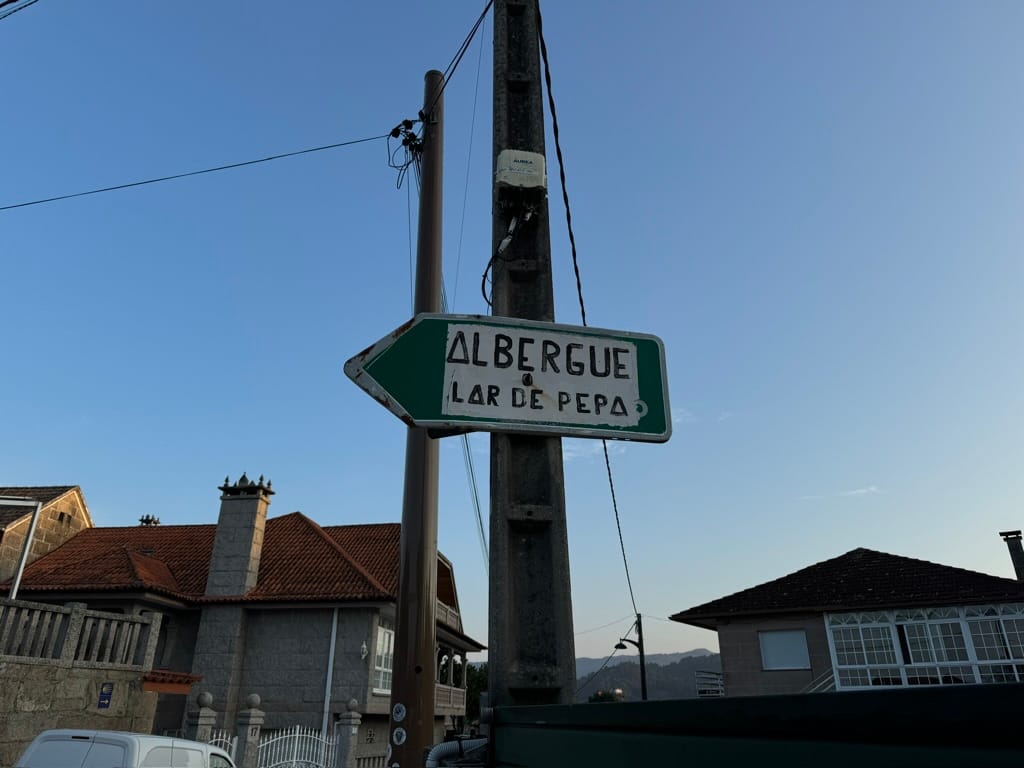
Day 3 impressions. Beautiful and short walk. (aka the calm before the storm)
Pontevedra - the town we ended up in on day 3 - is mega quaint. It felt like a small town that maintained its own character (despite the large amount of pilgrims). Apparently, it's also known for its urban planning.
- Sidra: For dinner, we went to a Sidra bar/resto that served Galicia and Asturian cider. Delectable 🍺
I have to mention something crazy that we saw. During late afternoon, we decided to take a stroll and enjoy the last hours of sun. We got to the main plaza of the city.
We wanted to sit down on a bench but I pointed out that there was a drunk, riff-raff looking dude with his dog and that we should sit somewhere else. Just in that moment, this guy took a tennis ball, wound it up to play fetch with his doggo, and drop-kicked that thing straight into an old lady's face a couple of meters away.
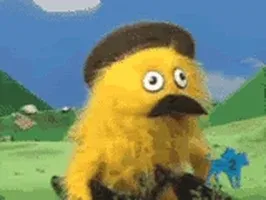
The bullet hit her in the cheek, she yapped an "Au!" sound, and held her face while looking incredulously at him. She wasn't really hurt. She was surprised. Instead of saying "sorry" the guy kept saying "No pasó nada!" (nothing happened).
To that old lady's credit, she didn't give a fuck and remained seated on her bench and mean-eyeing him while continuing to chat with her friend.
Now, a truly amazing thing happened: The other riff-raff people forced the guy to walk over and say sorry. And he did. And they shook hands. And they talked for a little bit.
I'm glad this crazy moment found some sort of resolution.
Happy end. Or as the Galicians would say: Fin feliz.

Day 4: Pontevedra → Caldas de Reis
The least enjoyable day of the trip.
When we prepared for the walk, we were unsure whether a poncho was needed. Would a rain cover for our backpacks be enough? Would our rainproof gear keep us dry? So many questions.
And the simple answer is: No!
- Waterproof ≠ Waterproof: Lesson learned, just because something says it's waterproof, it doesn't necessarily mean it's actually able to keep you dry.
- GoreTex: GoreTex is probably the most famous membrane technology claiming to keep water out while still being breathable enough that your sweat can escape. There are two problems. Problem #1 is that each membrane has a waterhead rating. Once that is exceeded, water travels through the membrane. Problem #2 is that even if a membrane works well at capacity, it blocks all the pathways for water vapor to escape to the outside. You create your own little jungle micro climate in your jacket.
Nice. - GoreTex Shoes Turn Into Foot Soup: Same applies to waterproof footwear. I love my XT-6 GTX but at some point they also started becoming more wet. First the toes, then the sole, then the upper side of my foot. Sara called this the "foot soup." Liquid movement with every step.
- Don't Air Out Your Wet Feet!: Foot soup is not that cosy. But what's significantly less cosy is a wet and cold foot. We committed the cardinal mistake of taking our shoes off during the lunch break. The moment the shoe came off, we witnessed a cloud of hot steam escaping. Putting the shoes on and starting to walk again was the most miserable 30 minutes of this entire trip. Cold and wet is not great for the joints in your feet. Keep your shoes on until you reach your destination.
- Everything Was Completely Wet: No matter how bad we expected the rain to get, it was much worse. Everything in our covered back packs was completely wet. Lucky me, I didn't bring electronic much hardware.
- Keep Coins at Hand: When we finally arrived at the hotel we had a choice to make. Wash our clothes or dry our clothes. Both cost €4 euros each. We only had 4 euros in coins. We dried our stuff and were happy about it. The only thing that didn't properly dry were the insoles of my shoes. To get the residual moister out of them, I wrapped them in a towel and stepped on them. Did this a couple of times until they became dry enough not to cause any problems.
- Poncho Is Wassup!: The only thing that keeps you dry is a membrane that doesn't allow anything in or out. A trash bag. A fancier term for that is "poncho." We lucked out that a store was selling these for €7. Best invested money of this trip. Well, maybe that and drying all of our clothes.
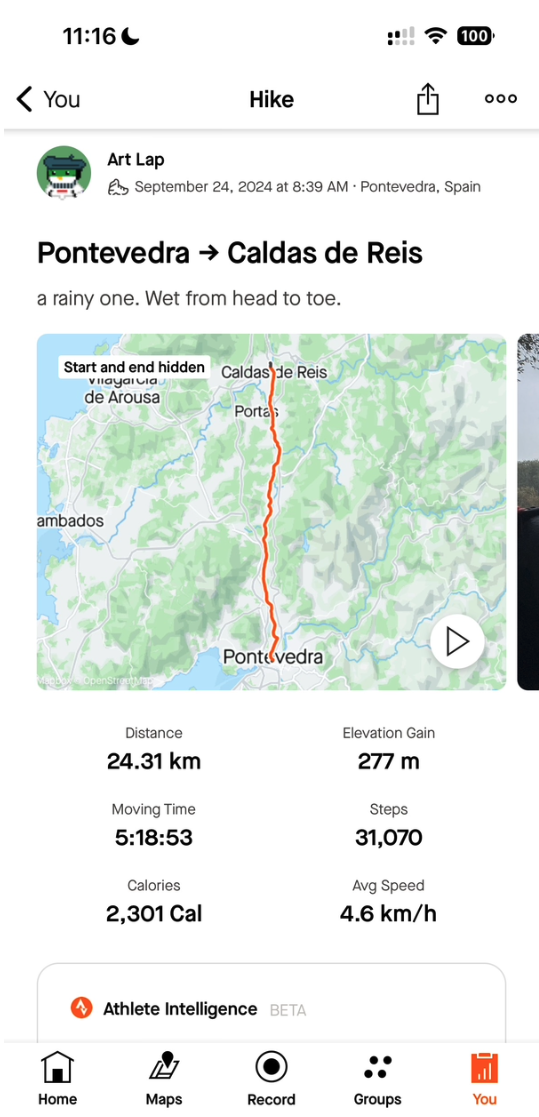
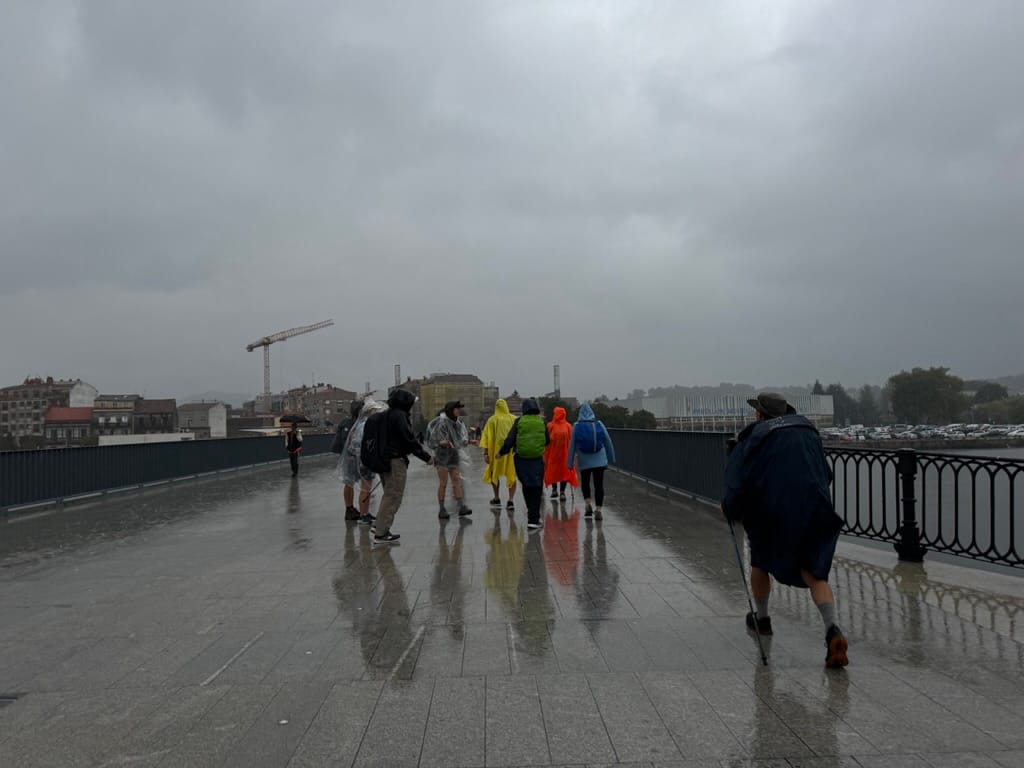
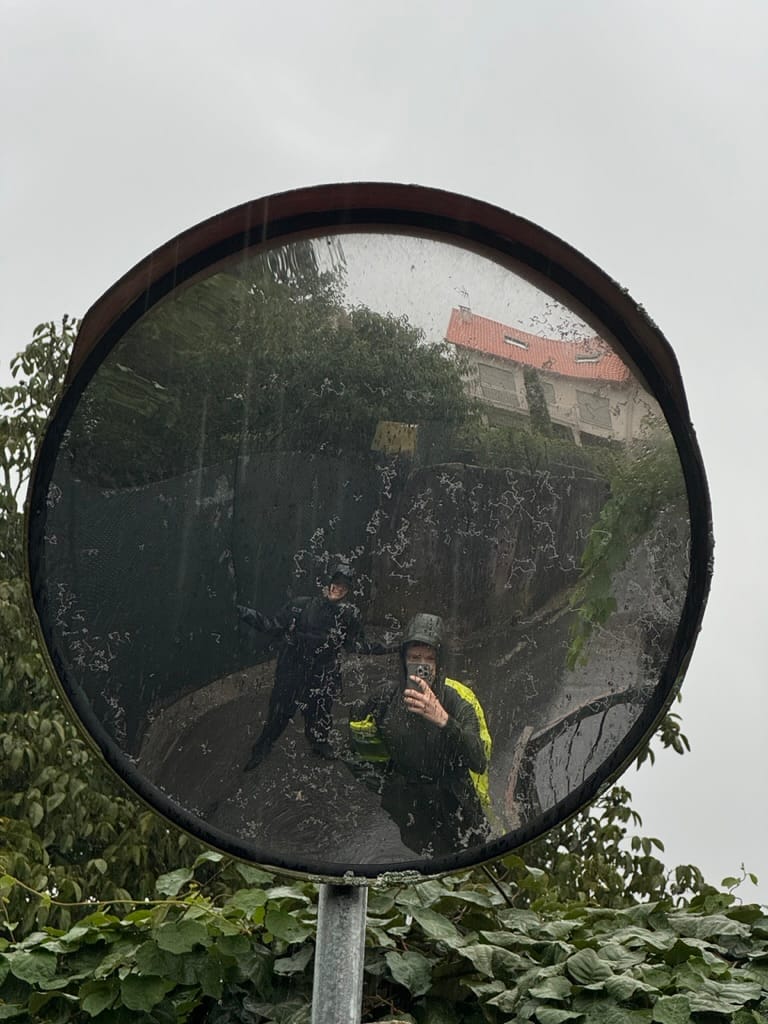
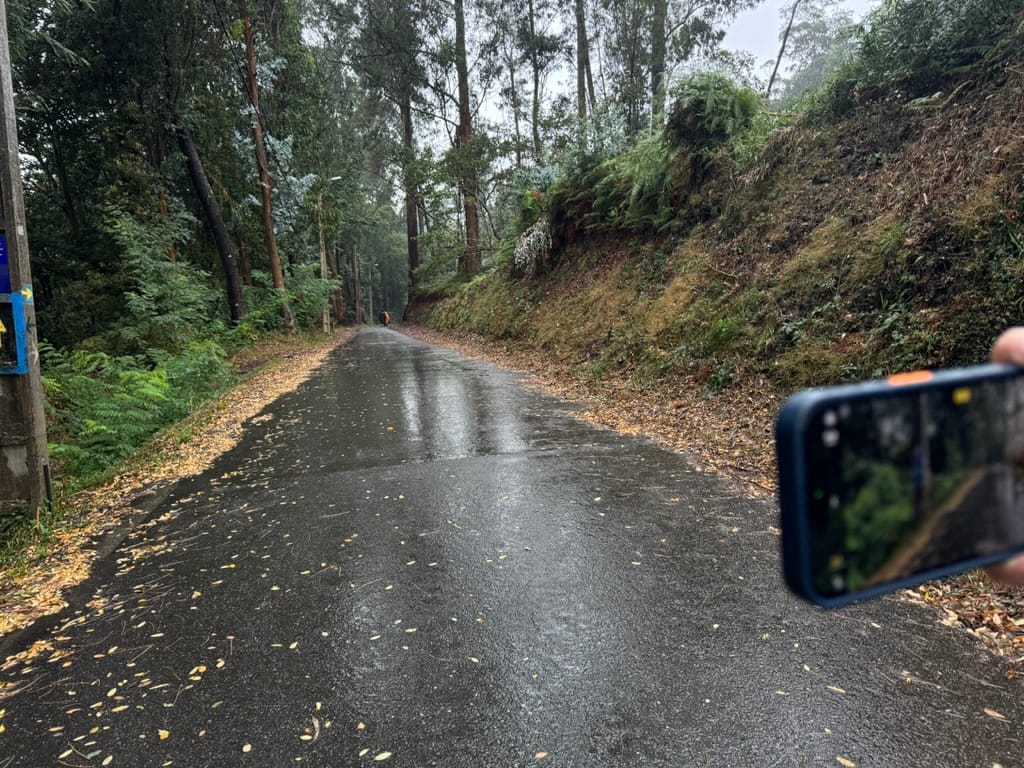
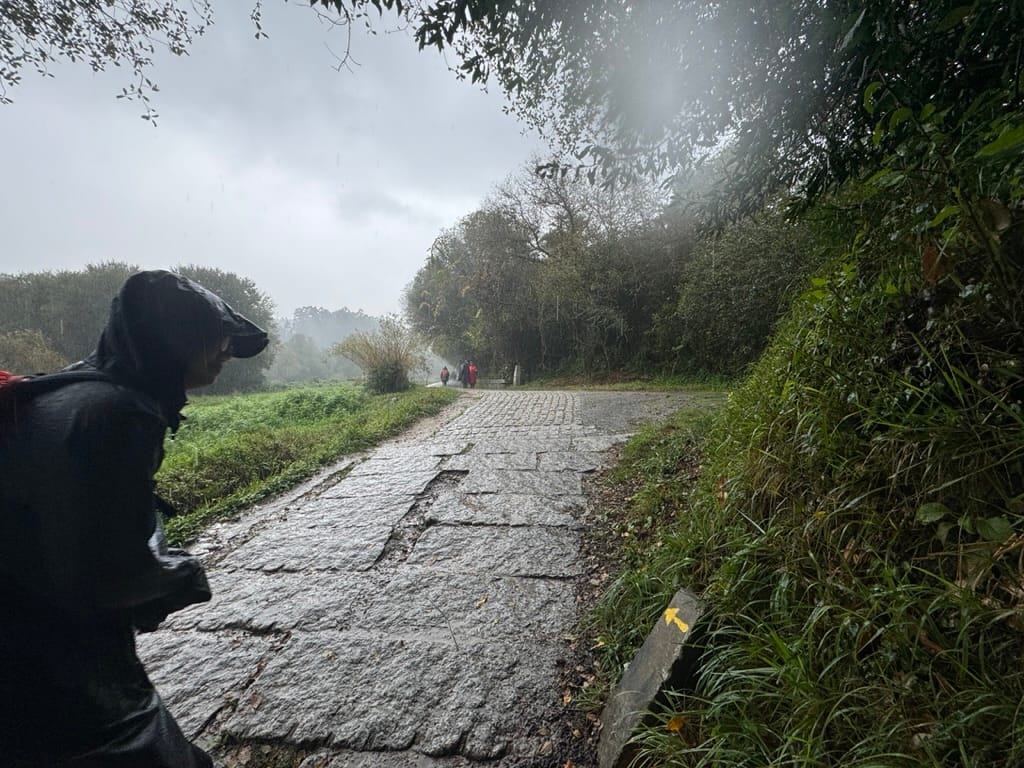
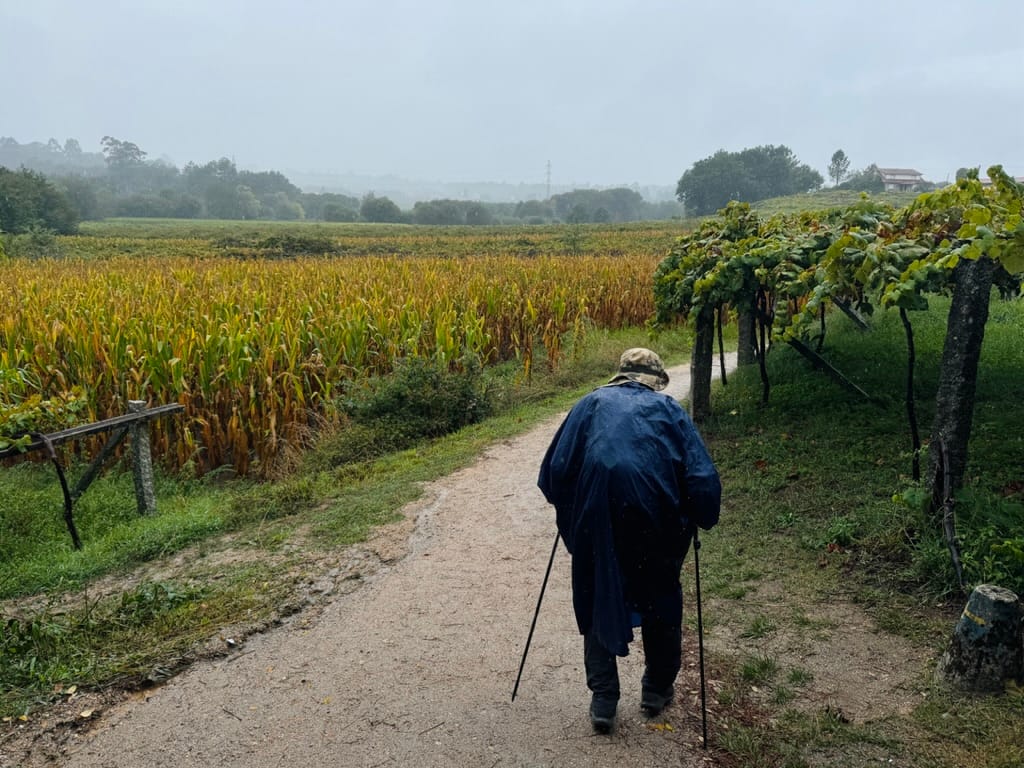
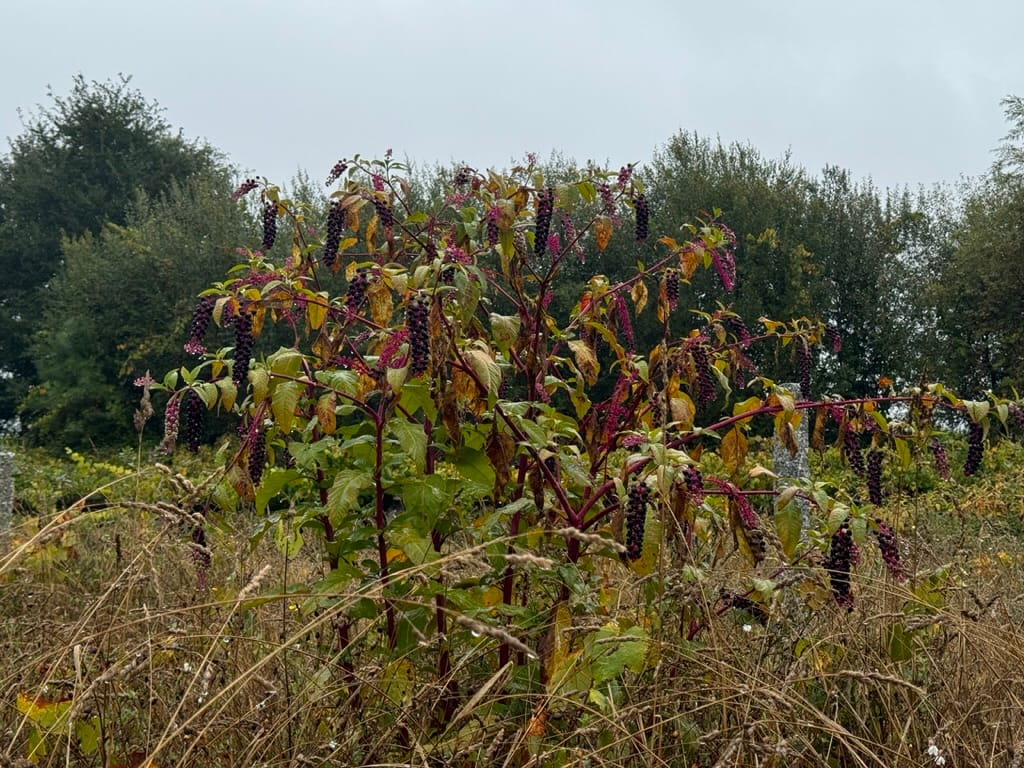
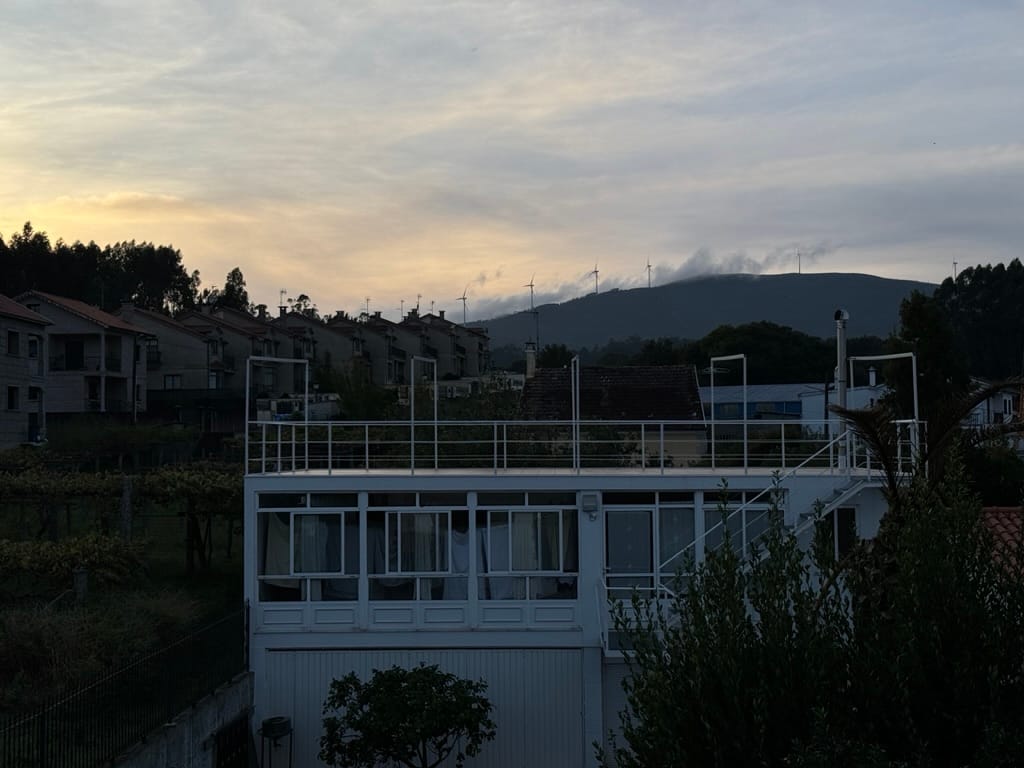
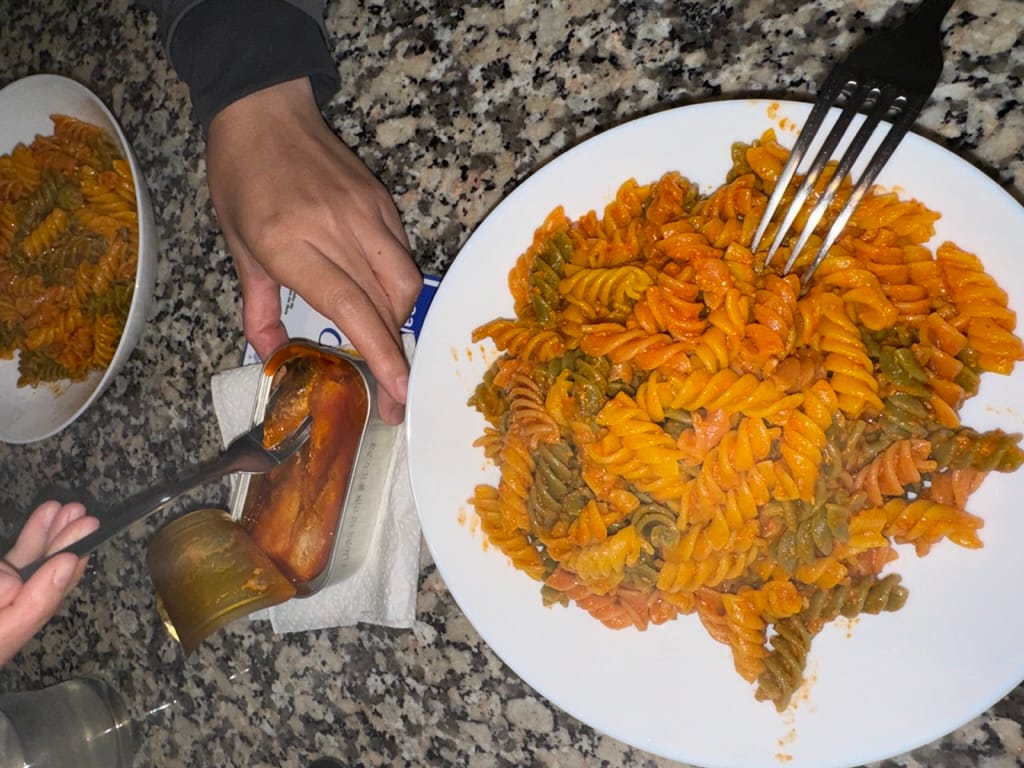
Day 4 impressions. GoreTex shoes turned into "foot soup" and "rain jackets" ain't truly water proof.
Attending to our wet gear took most of the afternoon.
Instead of eating out, we cooked pasta at home. Great choice.
Day 5: Caldas de Reis → Padrón
This is why it rained so hard 👇
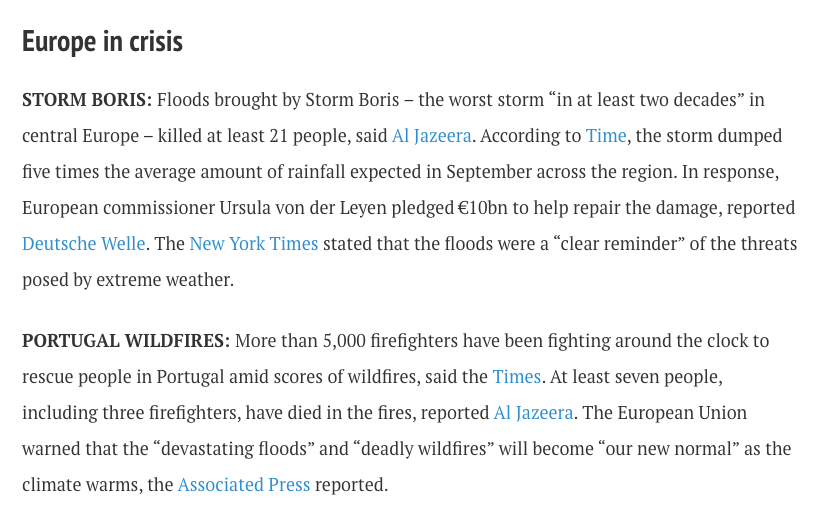
- Storm Watch & Time Window of Travel: That morning we started very early (~6am) to avoid the worst part of the storm. We had an orange warning and had to make it to Padrón before the afternoon.
- Nature in Total Darkness: Hiking in a pitch-black environment with a head lamp is interesting. You only focus on what's right in front of you. We got lucky and spotted a froggy friend who jumped right in front of us. He got lucky that we didn't accidentally step on him. Slimy slugs were also out and about.
- Seeing Other People in Total Darkness: I'll quote German TV character Bernd Stromberg - "When a wolf meets a wolf in the forest, he thinks to himself: Ah, definitely a wolf. But when a person meets another person in the forest, they think: Ah! Definitely a murderer!"
- Not as Bad as the Previous Day: It rained but our feet remained dry. Our ponchos also kept our upper bodies and our back packs dry.
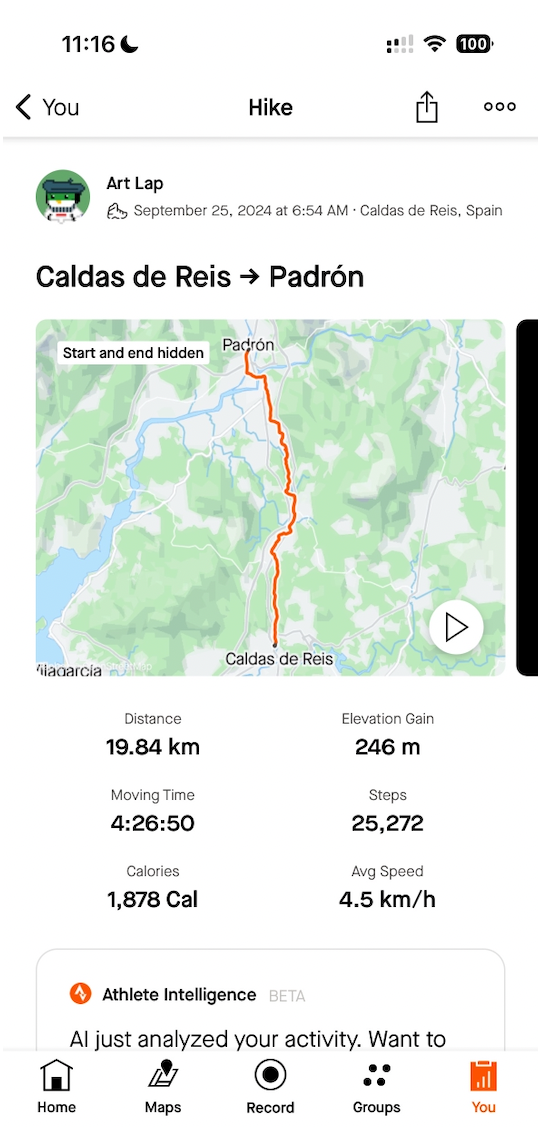
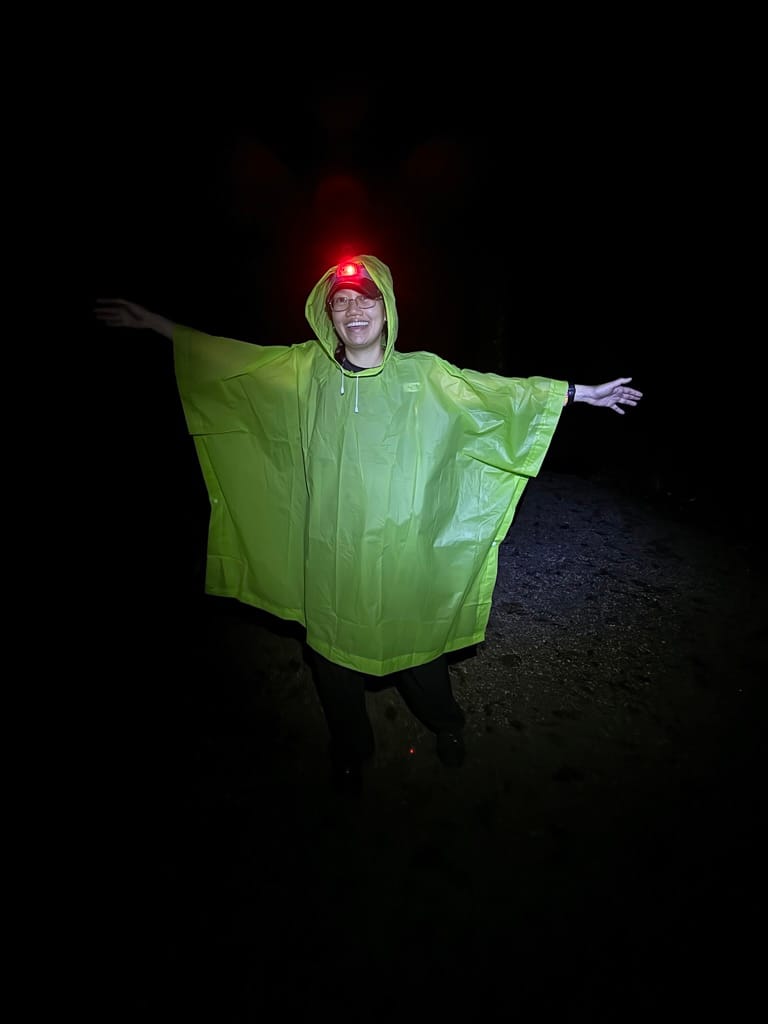
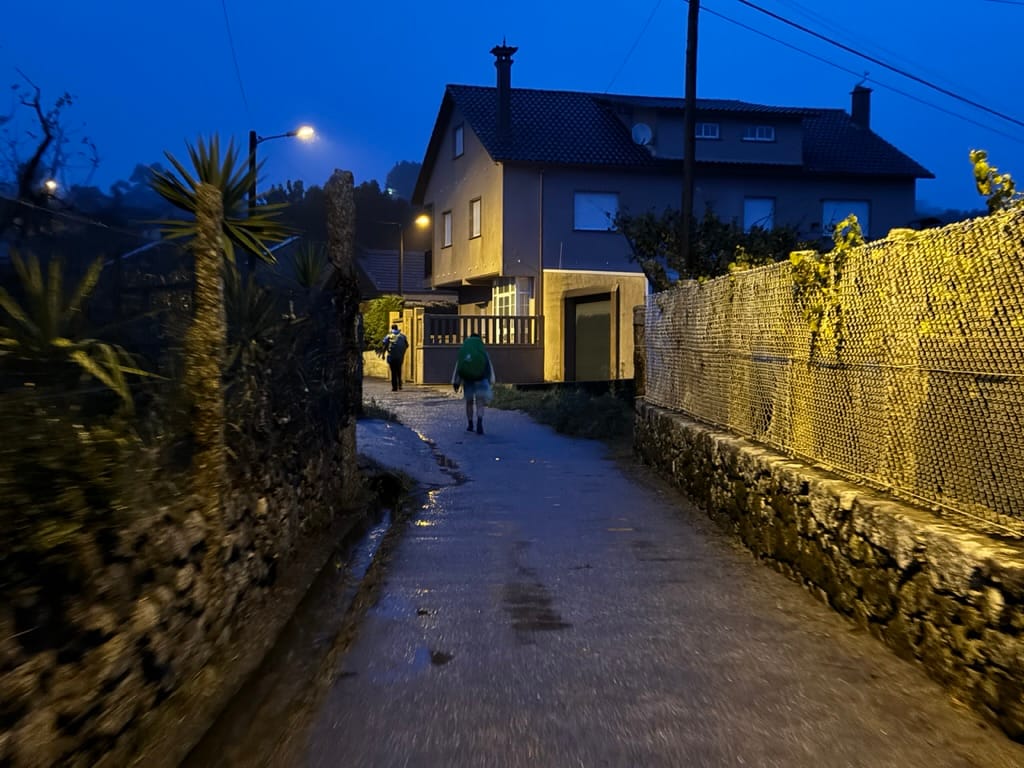
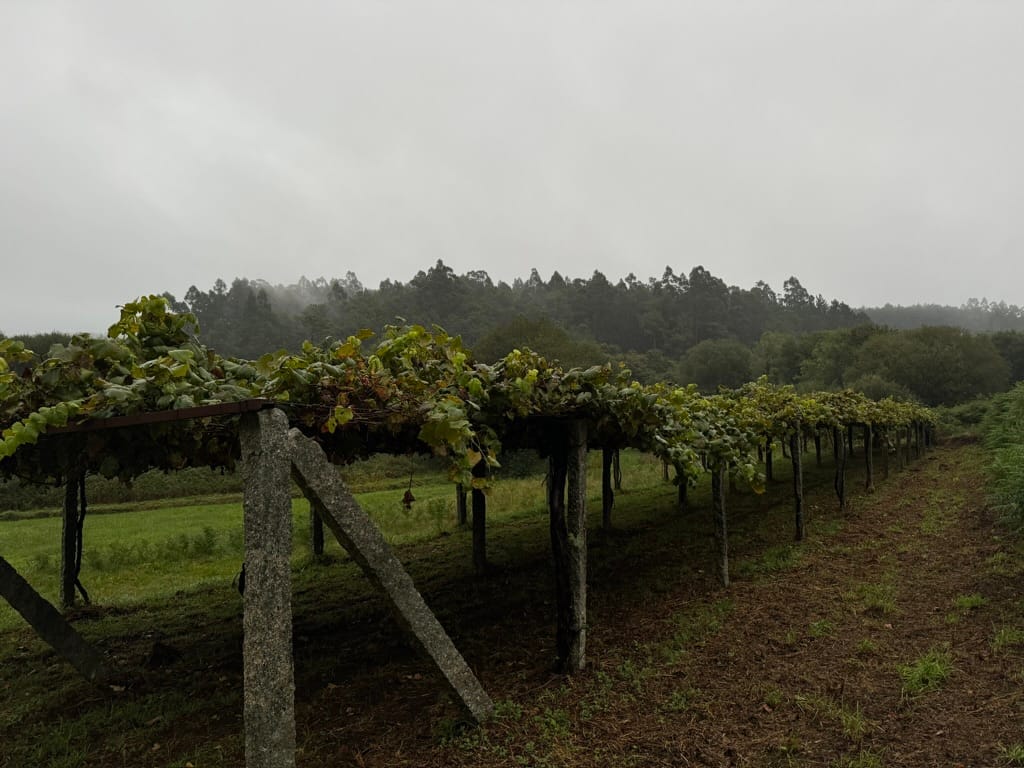
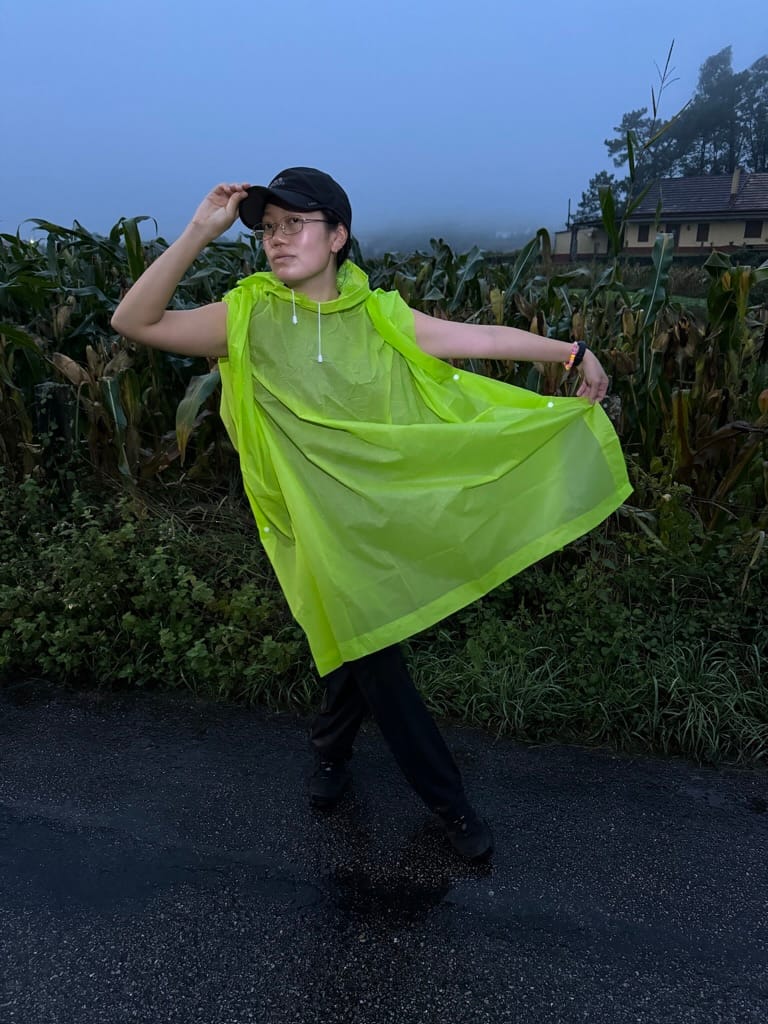
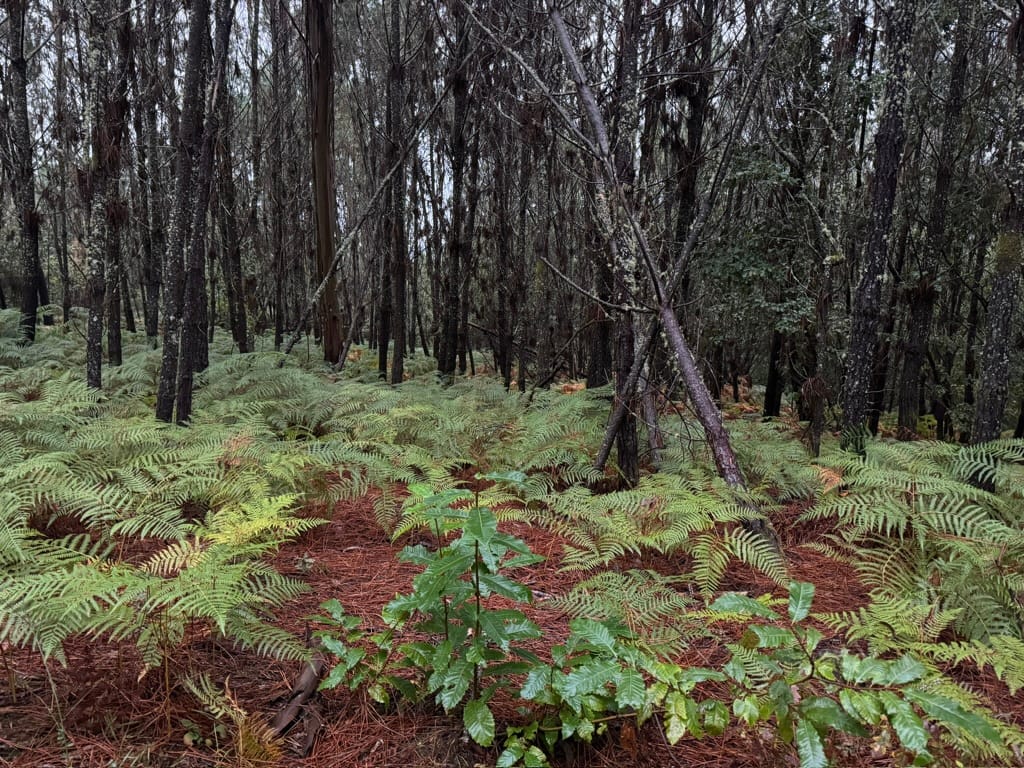
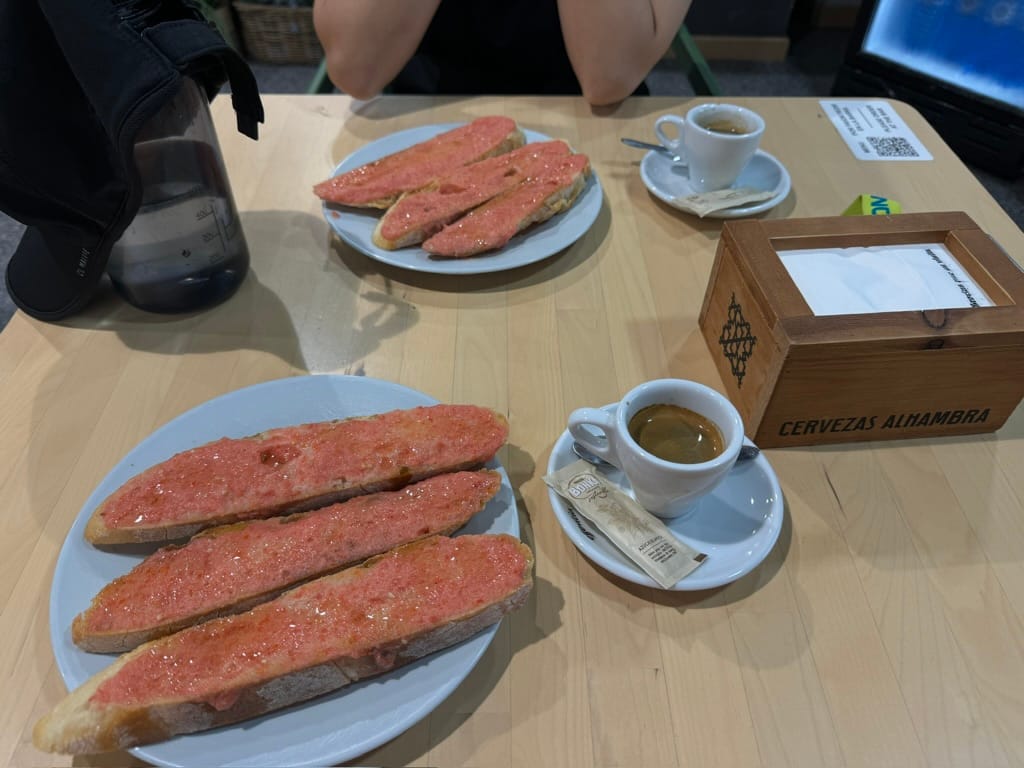
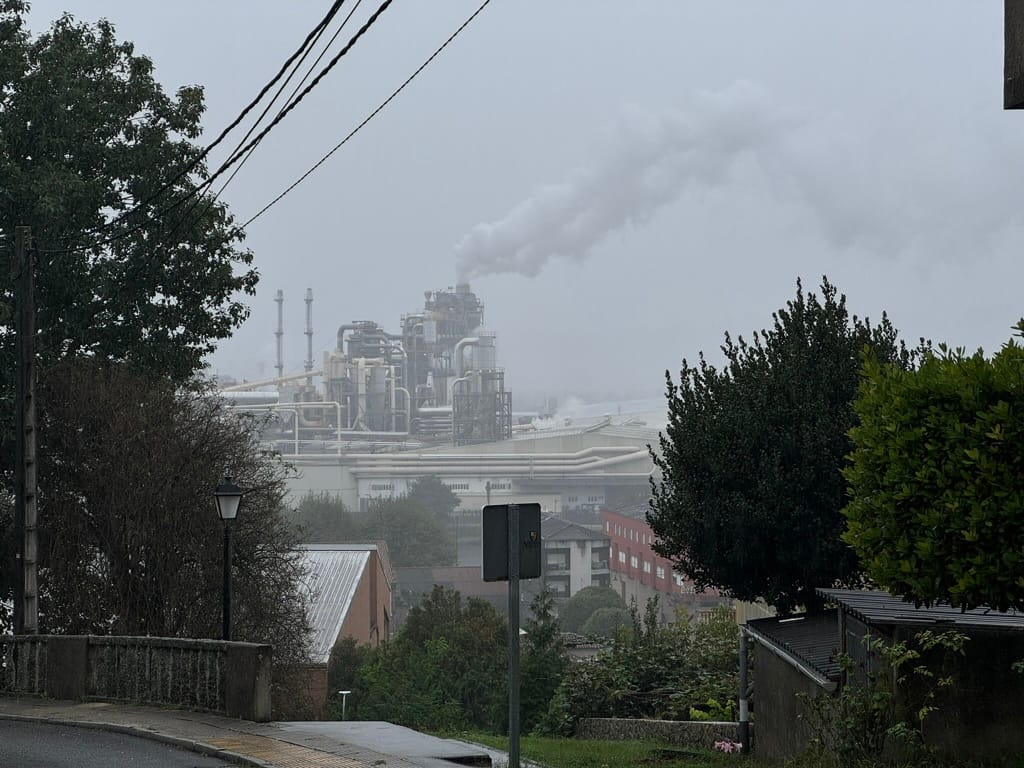
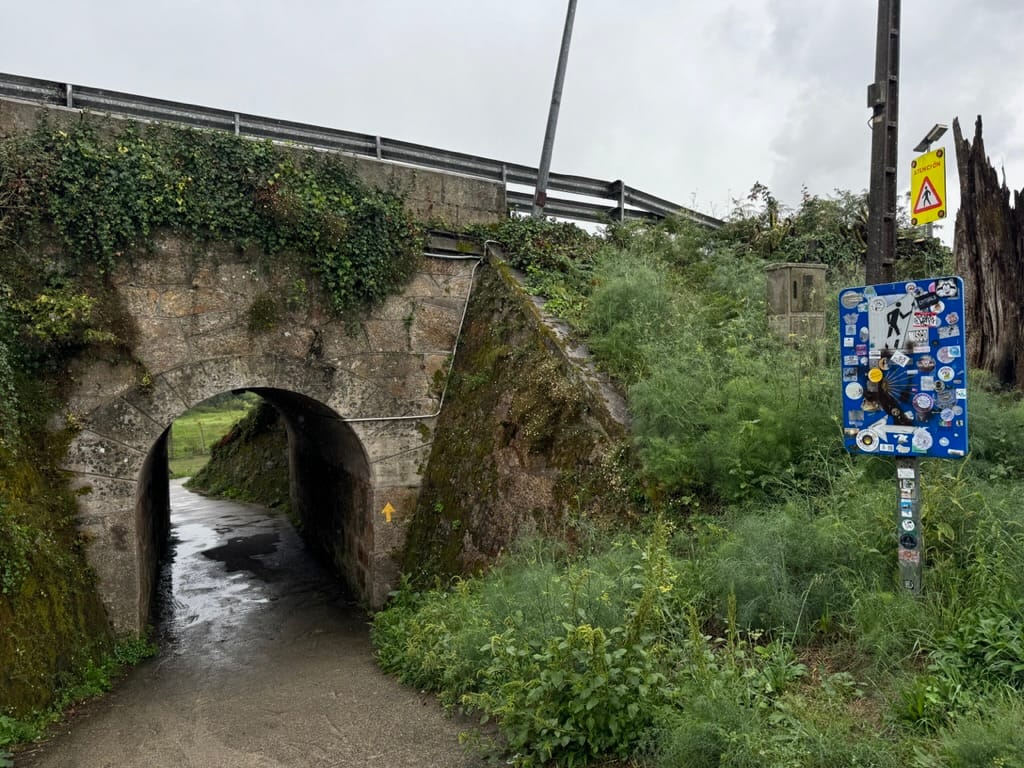
Day 5 impressions. Night walk and relaxed afternoon.
Padrón is famous for its Pimientos de Padrón. Incredibly simple food: Peppers, oil, and salt. That's all you need.
We got to town around lunch time and wanted to eat at a highly-rated restaurant called O Secréto. Turns out there are two of those in town and we waltzed into the wrong one. Still good food.
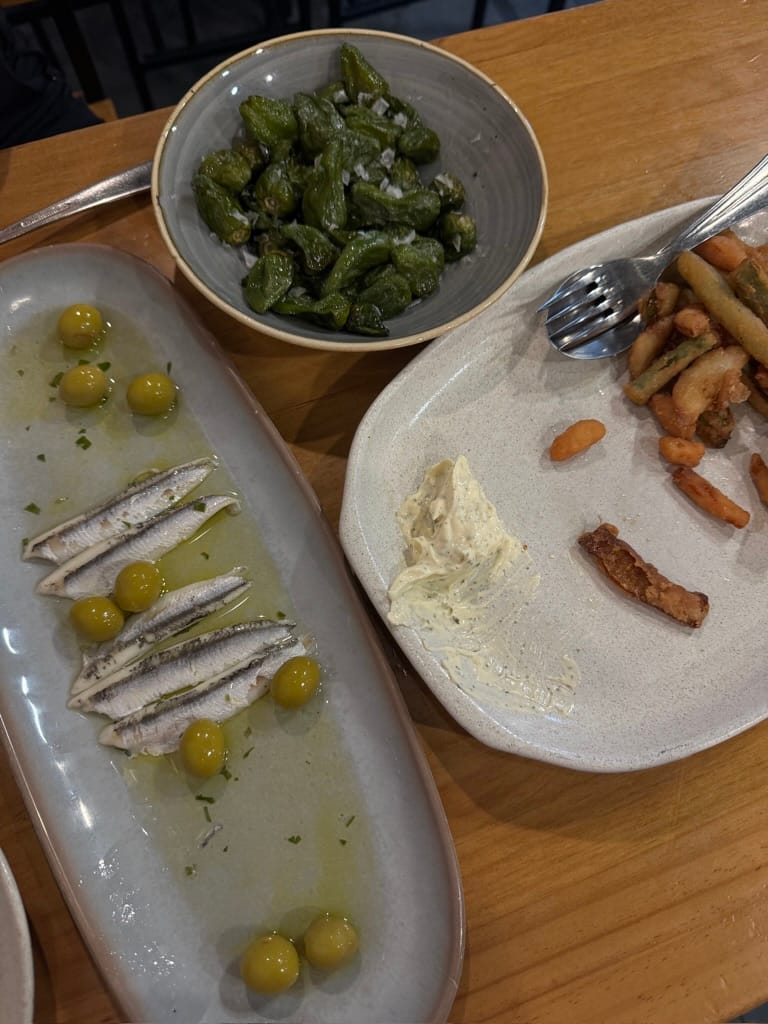
For afternoon and dinner, we bought some groceries and cooked at home to avoid walking through the torrential rains of the storm. Our AirBnB had a smart tv and watched "Nobody" - a mix between Taken and Home Alone 2 - while copious amounts of water were slashing down from the sky.
Day 6: Padrón → Santiago de Compostela
The final stretch. At last!
- Late Start to Avoid Rain: Given our accommodation allowed us to check-out at 11AM, we maxed out on every minute. A) because we wanted to take it easy and b) because the storm forecast promised heavy rain until lunch time.
- Arrived Really Late in Santiago: Late departure meant late arrival. We hit the city square in Santiago at around 18:40PM. We asked one of the guards where we could get the compostela and he said a few minutes away but it closes in 10 minutes. He told us that he didn't believe we could make it. Watch us!
- Bureaucracy a la Compostela: Made it just in time. We were some of the last pilgrims allowed in. It totally felt like a governmental office: (1) you enter your info, (2) you get a number, (3) you proceed to a counter where they check your info, (4) they ask you if you want only the Latin compostela or also the Spanish certificate for €3 extra. (5) Bliss 😇 ... or so it goes. Meanwhile they started closing the office down faster than a F1 pitstop and politely asked us to get the fuck out of there.
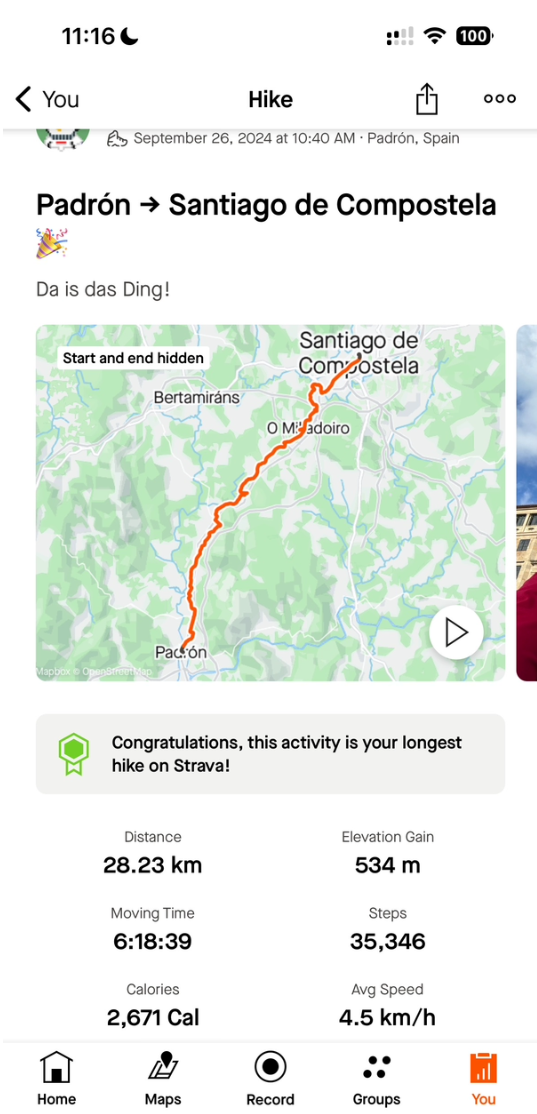
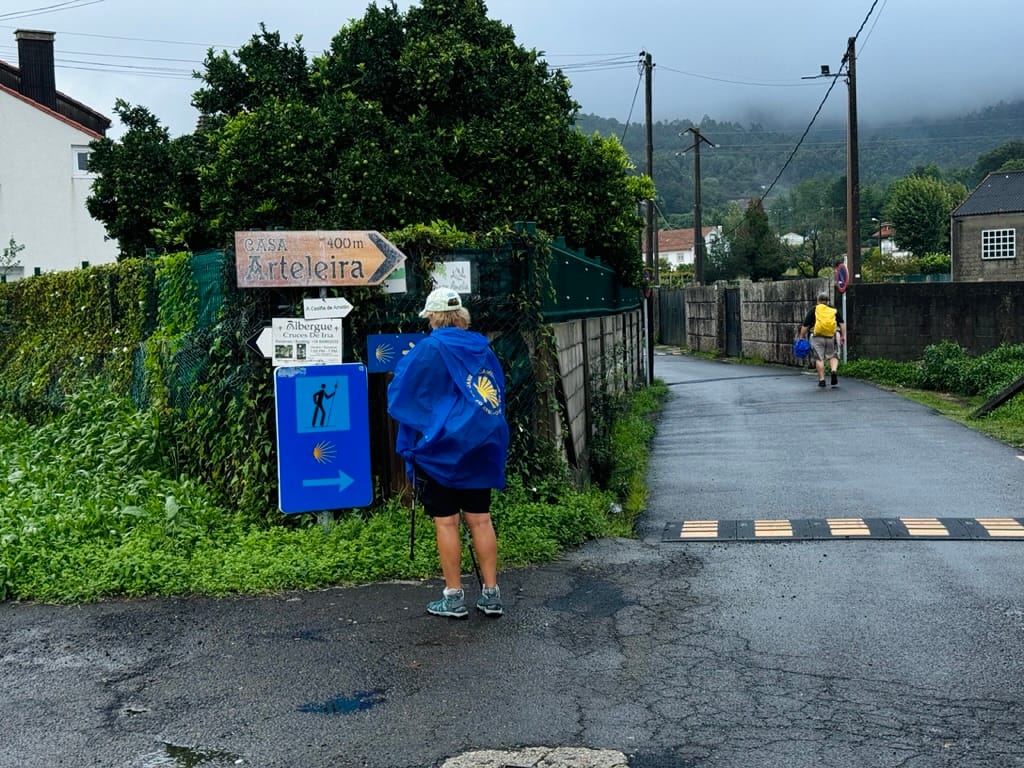
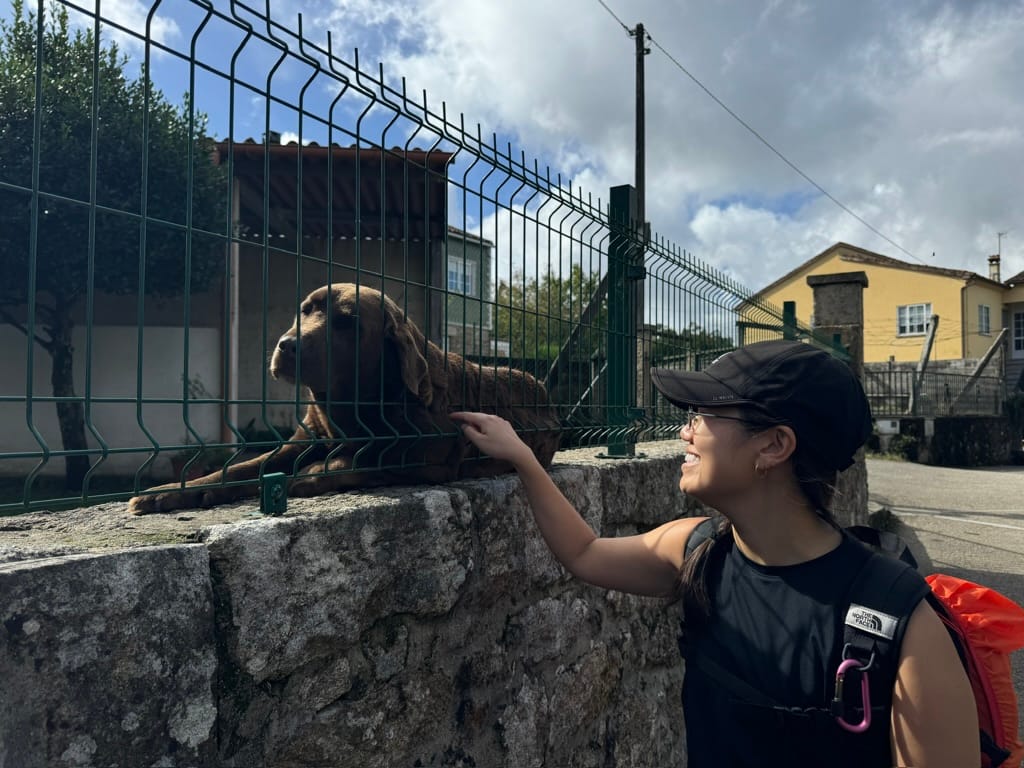
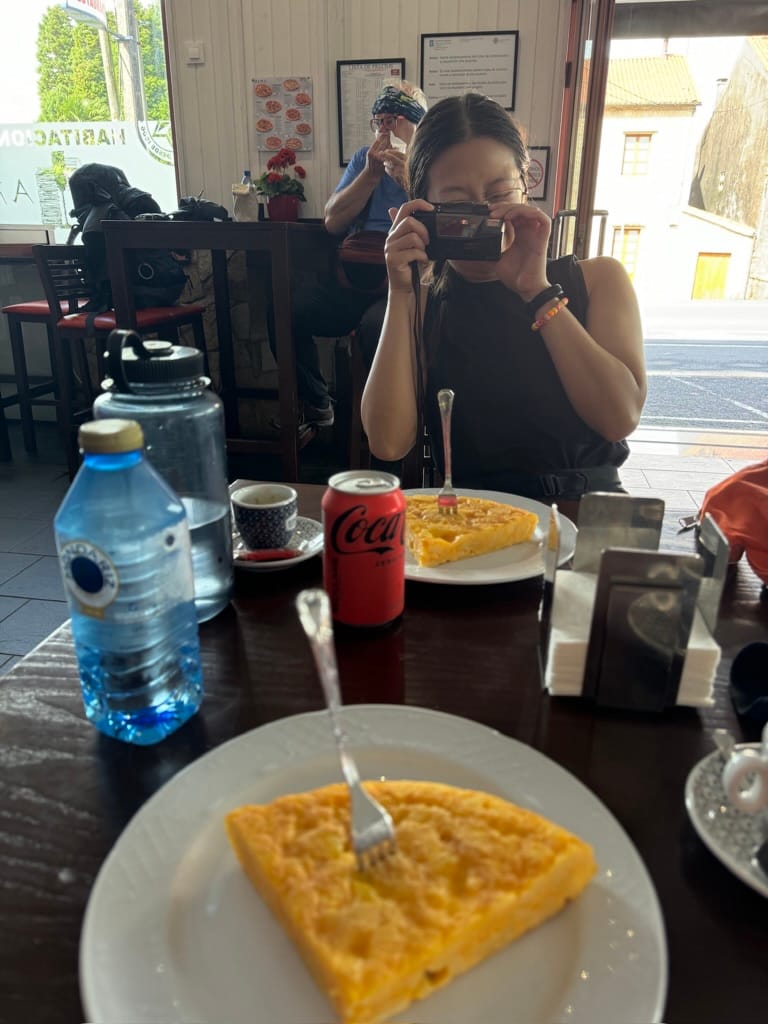
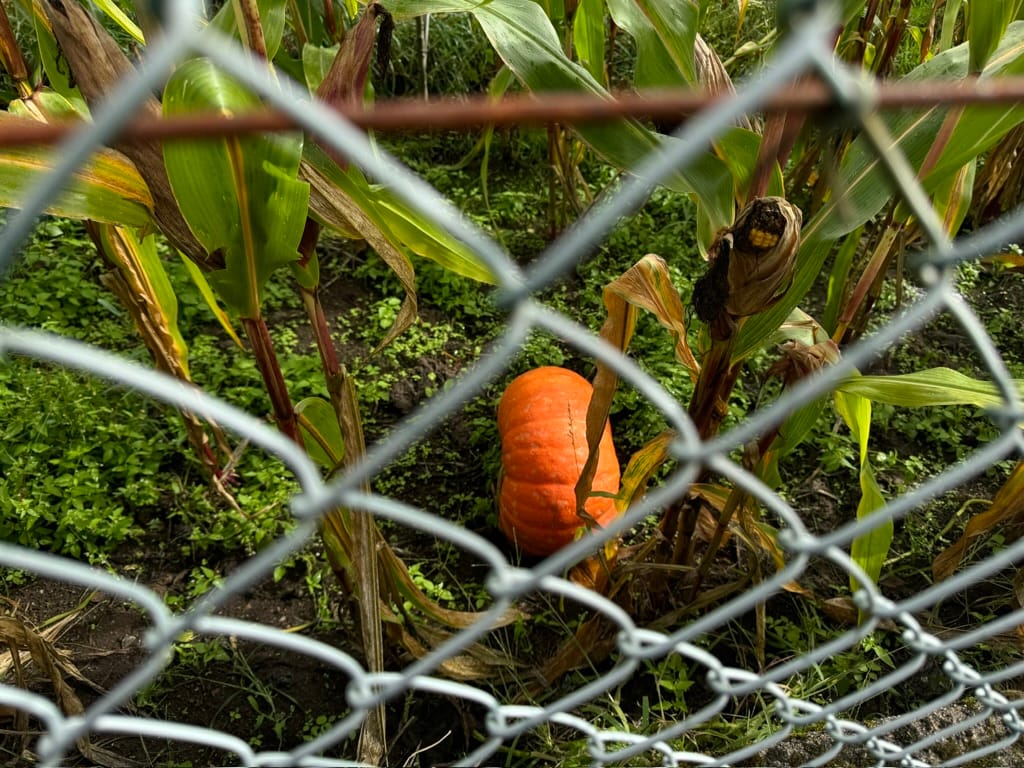
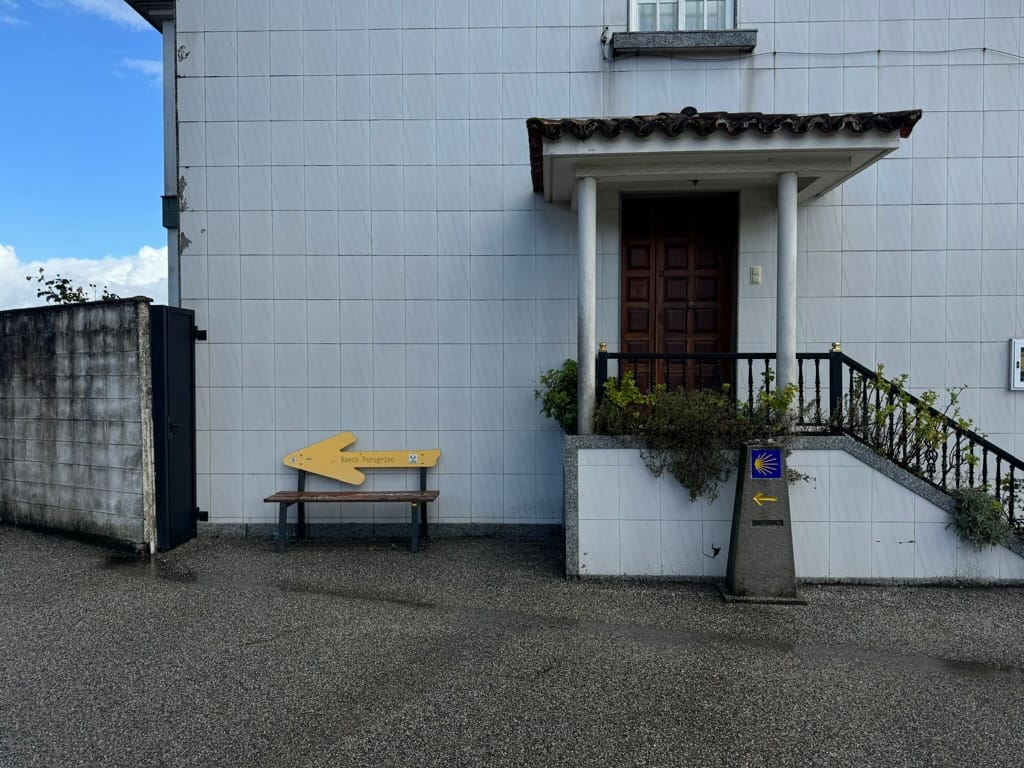
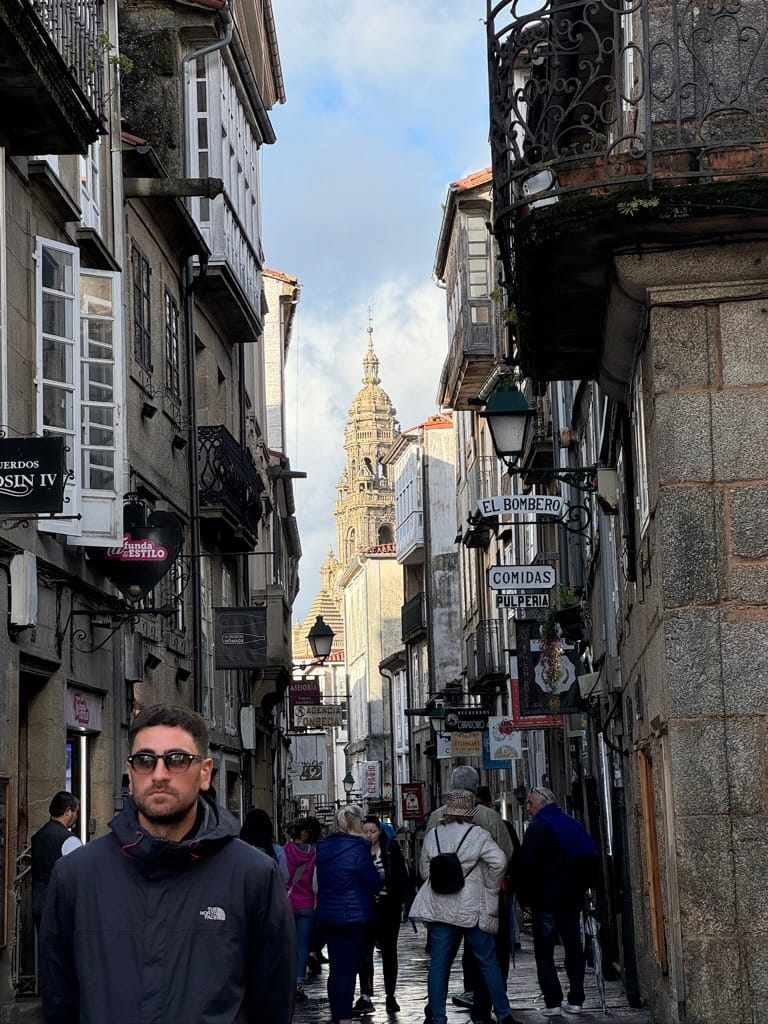
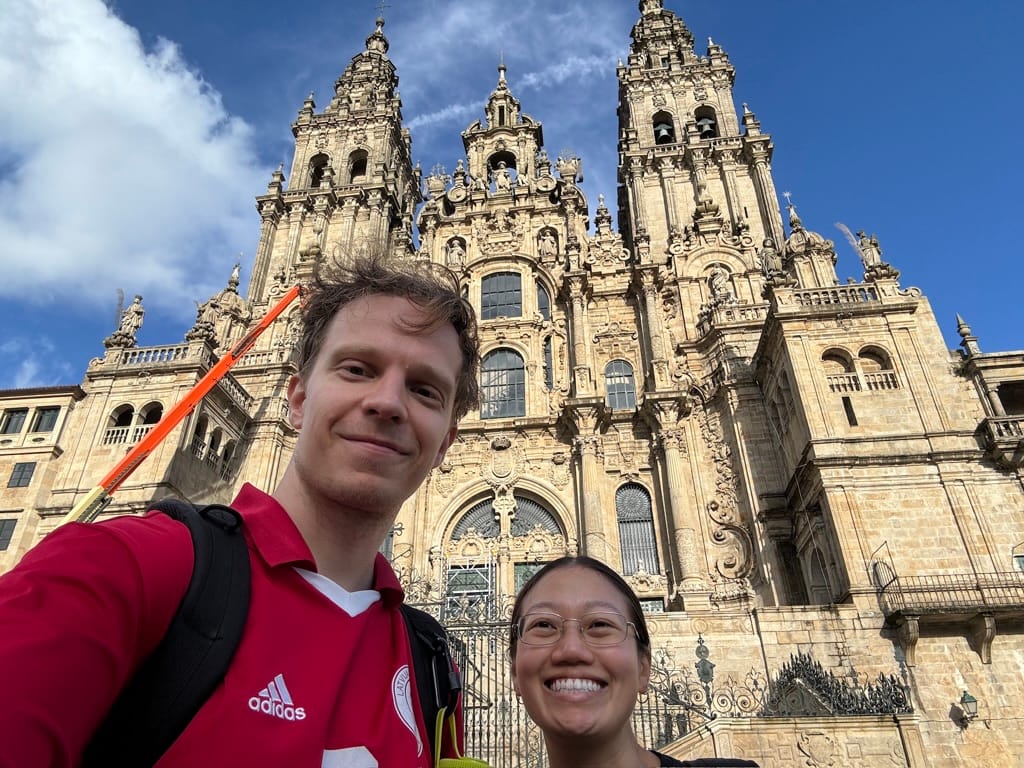
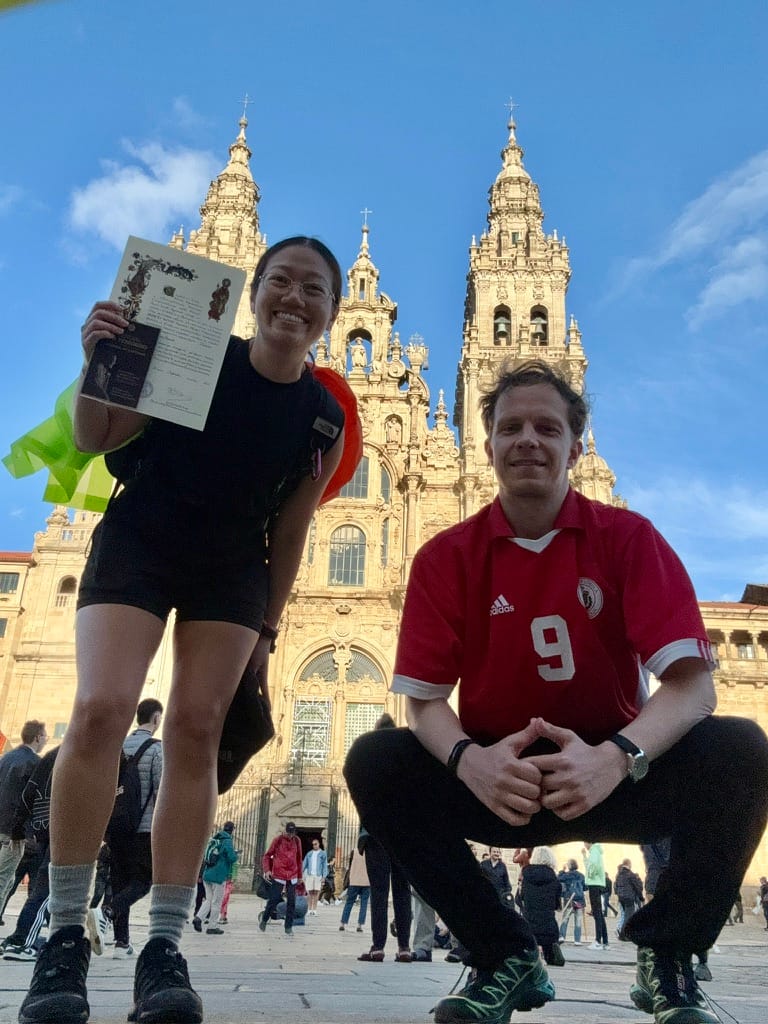
Day 6 impressions. The final stretch. Veeeeery long. Finally done 🎊
Santiago de Compostela is very beautiful. It is full of young people, since it's home of USC - nope, not University of Southern California but University of Santiago de Compostela. Founded in 1495.
We spent the night in a monastery that was converted into a mega hostel (honestly, check out the pictures and Google reviews).
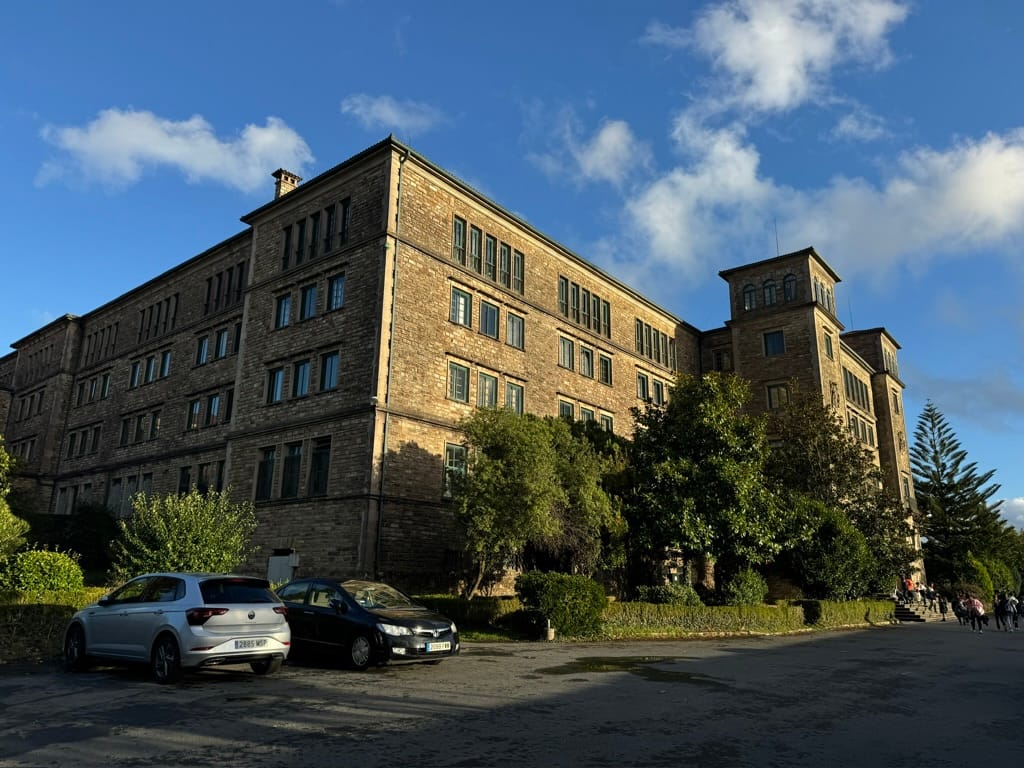
To celebrate the occasion, we dined in local style, and had the best pulpo of our lives. The dinner also served as a debrief (takeaways further below 👇).
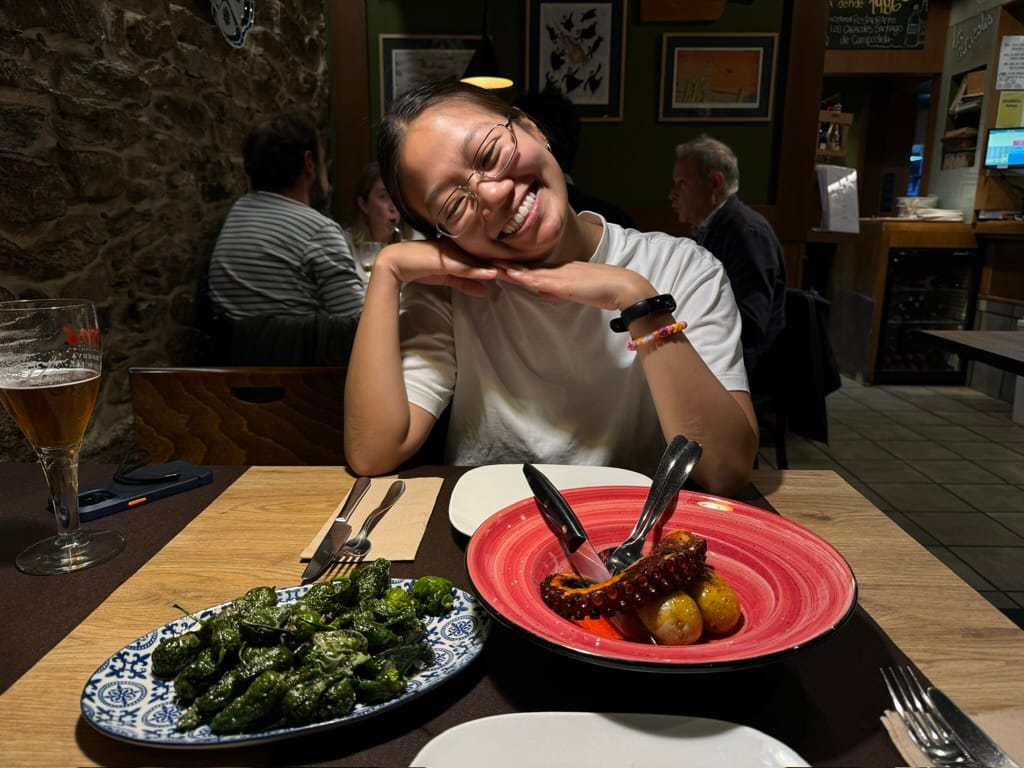
Despite liking the city, we were quite happy to leave the following day. Everyone around us was coughing and it felt like ancient Venice during the times of the plague. Time to get outta there.
Practical Takeaways
Don't Overpack
If you're on your feet for days/weeks on end, don't give yourself a handicap in the form of a heavy backpack. Pack light.
There's some things I didn't use at all. Worst of all, my digicam (~500g of dead weight). It didn't see any action at all since my iPhone is (a) waterproof, (b) has image stabilization, and (c) is always in my pocket. Sorry digicam :/
My "Must Pack" List
- Merino Socks: I had three pairs and those were enough.
- Comfy Shoes: Don't bring brand-new shoes on the trip. Ideally, the shoe has already seen its fair share of mileage. I swear by these.
- Compression Undies: Know thyself. I tend to chafe on my thighs if I don't wear compression shorts. So, my entire undie collection was made of synthetic compression fabric.
- Quick Dry Shirt/Jersey: You'll sweat (a lot). Have some shirts that dry quickly. I wore a 2002 Latvia jersey from Adidas. Great moisture regulation and super comfy while looking like a total lad.
Ponchos > Rain Jackets
Buy a poncho. Thank me later.

Water Is a Killer
Water will destroy everything you love.
- Use a wet bag for most important items (passport; digital equipment; etc.)
- Maybe even bring a second pair of insoles - just in case.
Personal Takeaways
So, what's the verdict?
People tend to ask: "What did you get out of it?"
Physical and Mental Adaptation
Our body and mind work in unison. This becomes abundantly clear if you walk long distances.
- Rut & Meditation: The repetition of walking has something meditative. After a while of left/right/left/right/ad infinitum, your mind goes to interesting places. Eventually, your mind is "blank" - but in a good way. It's the absence of thought. The absence of distraction. The absence of "suffering" as Buddhists would call it. The rut has a very meditative quality.
- Physical Care: Listen to your body. Hydrate, take breaks, re-fuel. You might get blisters. Pack a set of blister bandaids and use them. Nasty skin infections are no joke.
- Little Nags Come and Go: During the walk, I would experience a soreness in my knee or in another spot. Then, after an hour of more walking it would miraculously disappear. I have no idea what this means but my wife felt similar sensations. Maybe there's something about our brain that doesn't want us to do X. But when we do it, our mind starts accepting it as the new normal. Who knows 🤷♂️
- It Gets Easier: Walking >20km on Day 1 was definitely more challenging than sitting on my ass for 8 hours straight. Then, Day 2 was easier than Day 1. Day 3 was easier than Day 2... and so on*
*with the exception of Day 4... that was quite the wrench out of left field 😅
Mental Reset
I like to think that I'm a fairly present-focused person already.
Don't really dwell on the past. Don't really daydream about the future. Here and now.
Still, walking for six days, my appreciation for the now increased.
It felt like a mental reset button. In a good way.
Intimacy With Yourself or with Someone Else
The most surprising thing about the whole trip was that you could get more intimate with a person that you have spent the past decade with.
- My guess it's hours/days/weeks of un-interrupted time with a person
- You can go through all types of situations - chats/jokes/fights/support
The camino - or any type of long, un-interrupted time/holiday/adventure - is a great activity to do with a partner, a friend, a parent, or a child.
"Was it worth it?"
I think so.
If you consider doing it yourself, then let me tell you: "Buen camino!"
Days After Walking
A Coruña Is Special
The trip was rounded out by a weekend in A Coruña - the city where Inditex/Zara is from.
It reminded us a lot of San Francisco - the hilly city scape, the temperate climate, and its quirkiness.
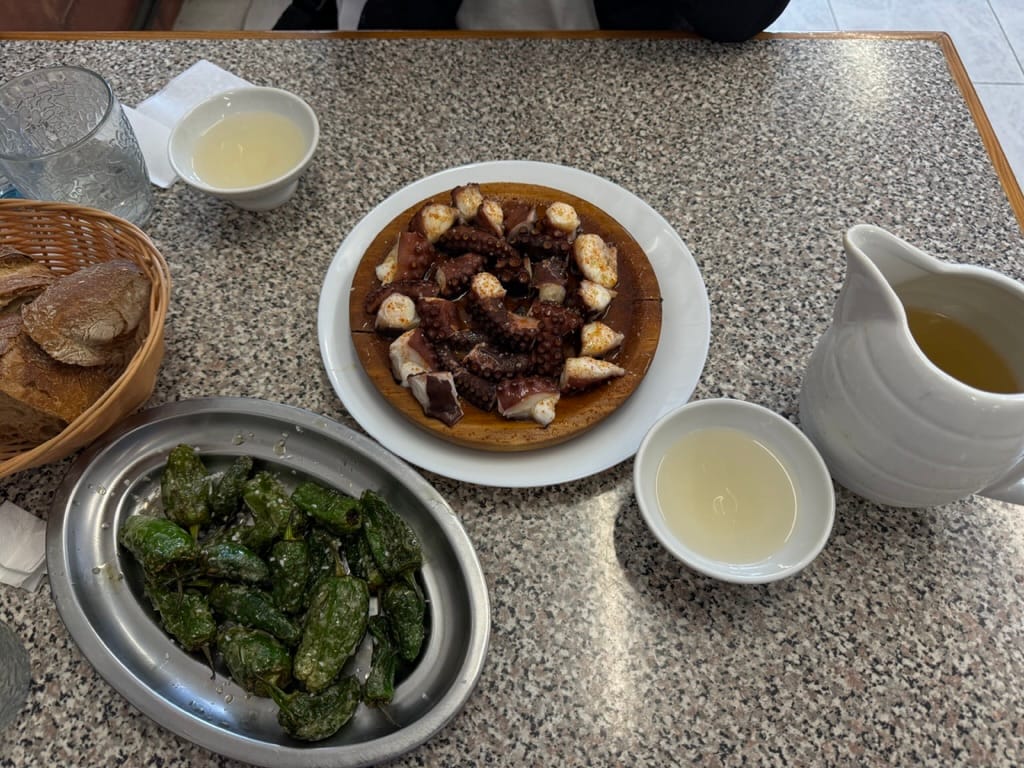
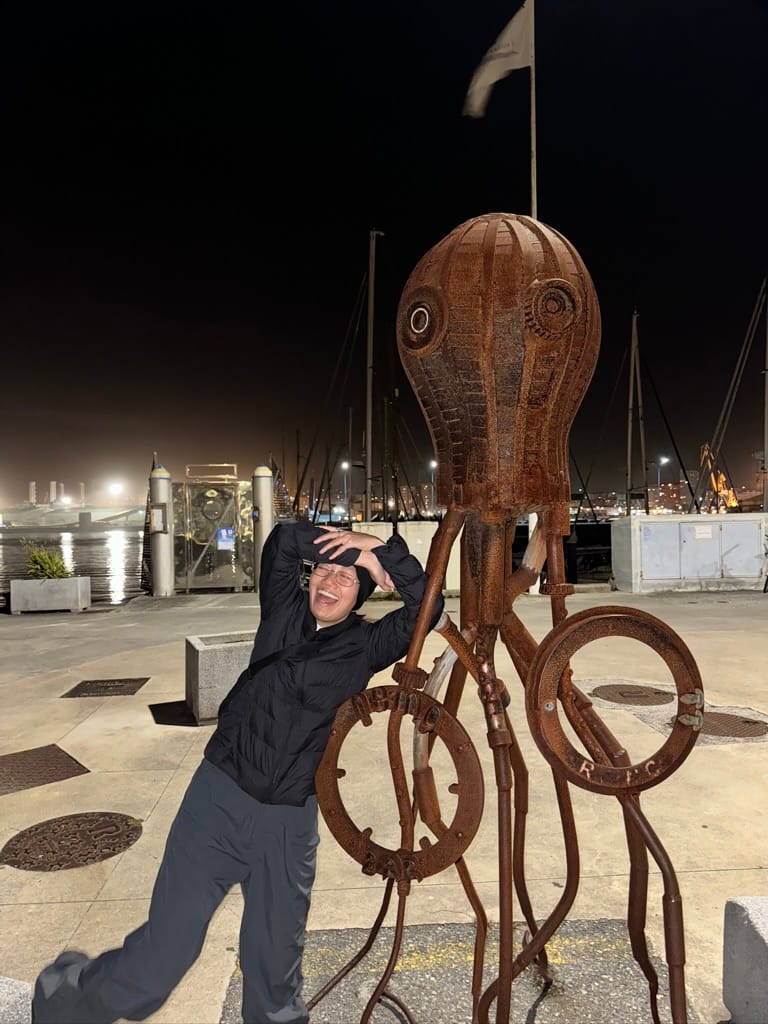
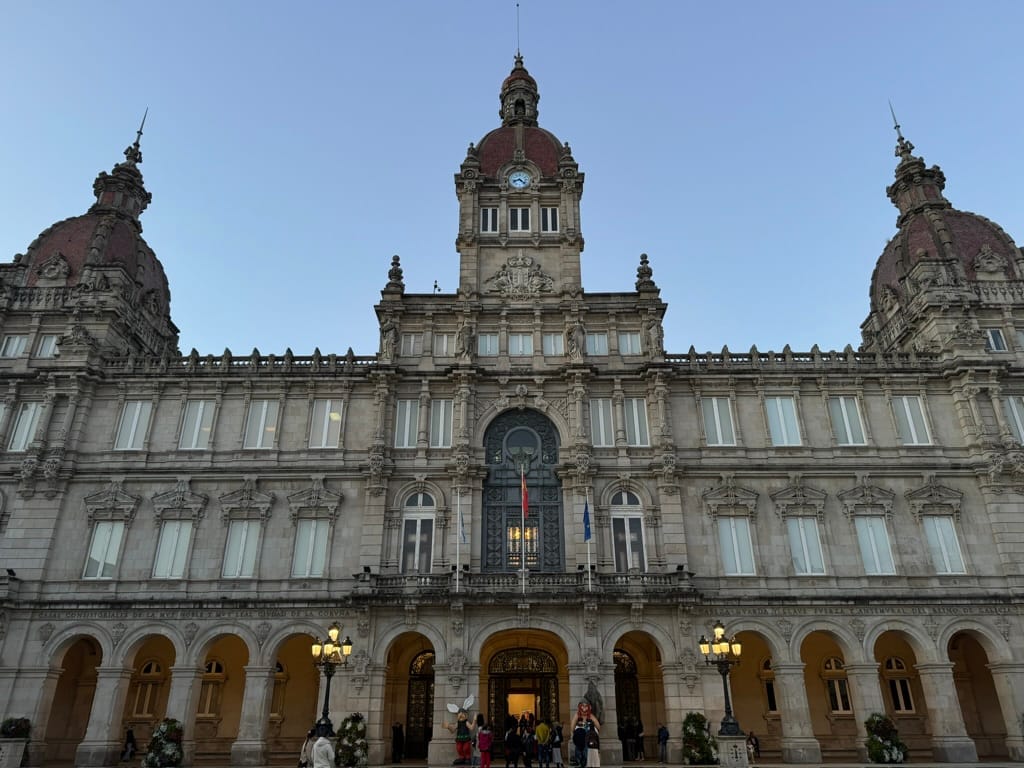
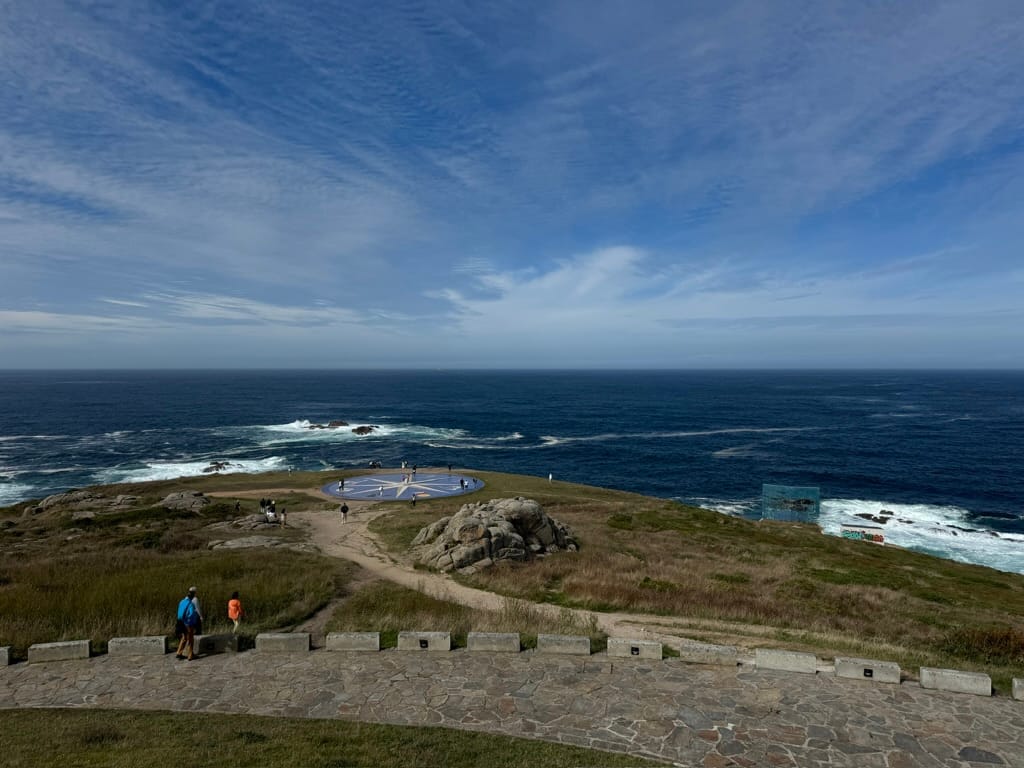
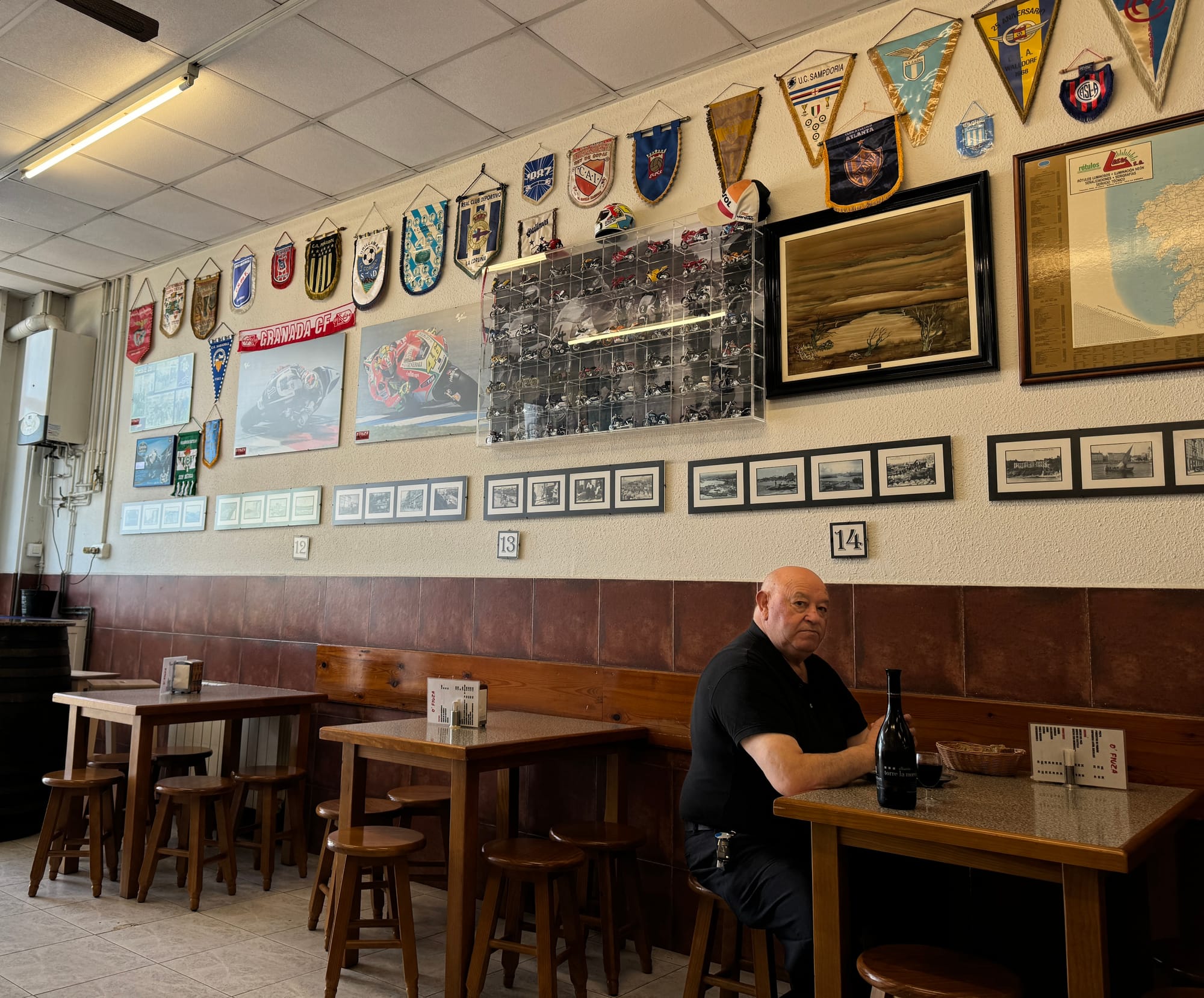
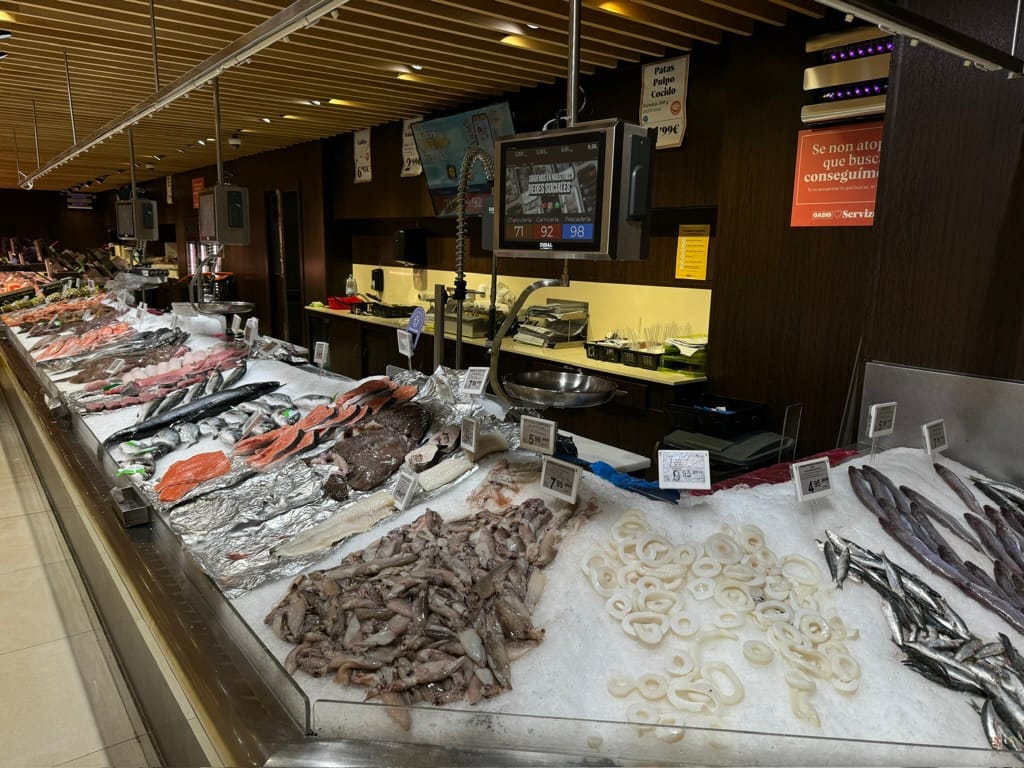
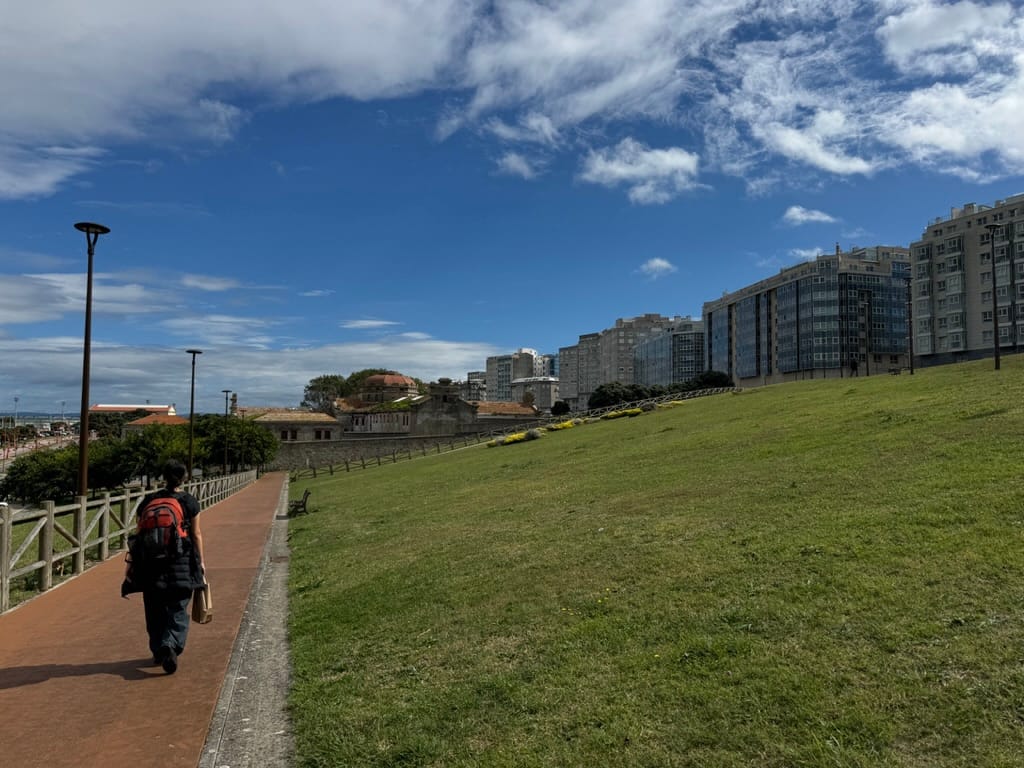
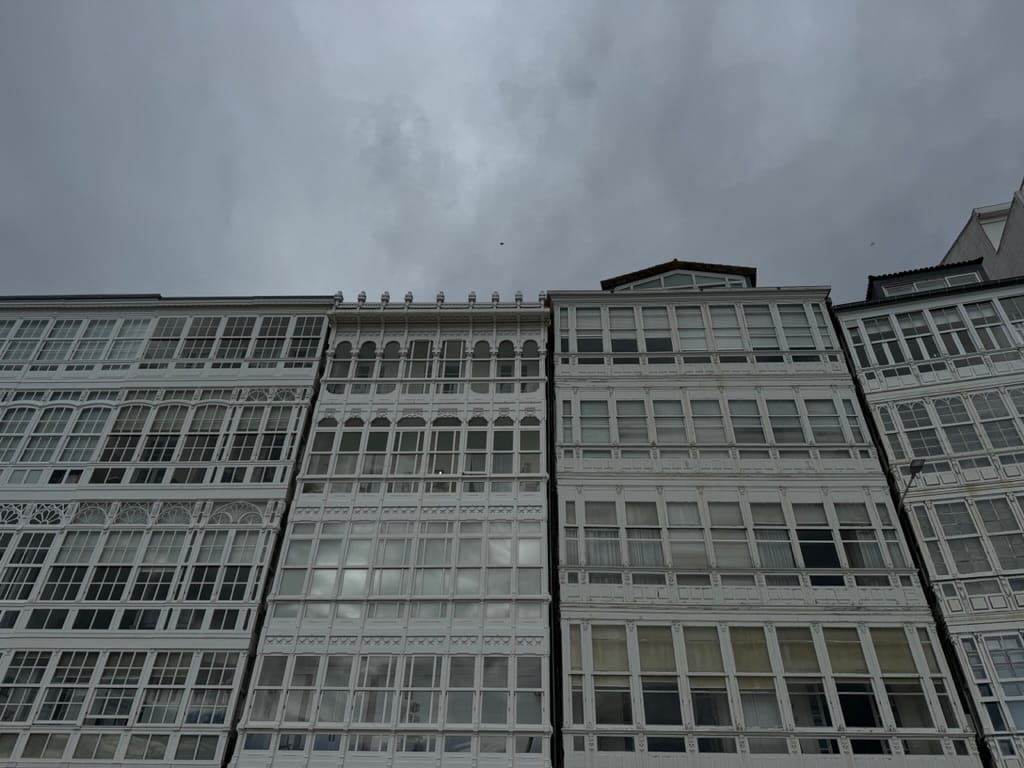
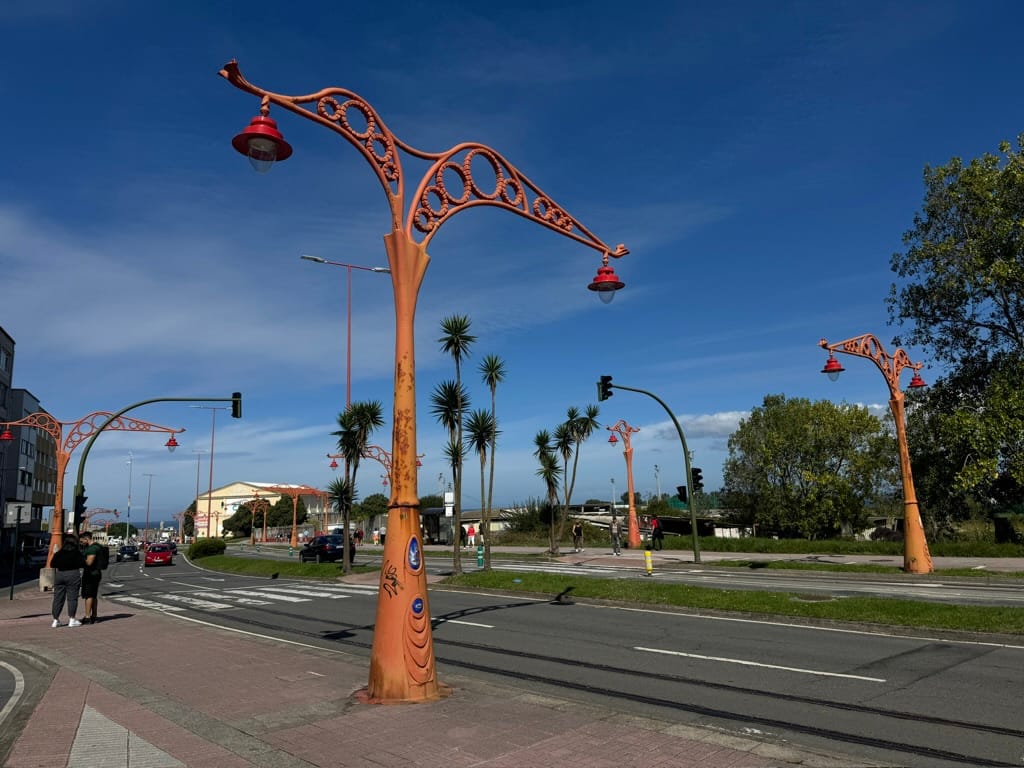
Many shades of A Coruña.
Galicia Is Different
Galicia is pretty awesome:
- It is one of 17 autonomous regions in Spain
- It has two official languages: castellano (Spanish) and gallego (Galician - which is more similar to Portugese)
- It's culture is heavily influenced by its Celtic roots
Celtic? Yes, Celtic.
What's the name of the Irish language of Celtic roots? Gaelic.
What's the name of the Spanish region with Celtic roots? Galicia.
Baiuca: A Love Letter to Galicia
One of my favorite folktronic artists is Baiuca - named after a Galician town.
He is an artist in the truest sense of the definition. He has a unique artistic vision that he imparts on the rest of us.
His vision is that Galician folklore can be made modern and danceable.
At his concert, we saw hundreds of young Galicians dance and sing to his tunes. We asked our local friend if those were traditional folk songs that everyone learned in school.
His response:
"These songs were dead. Baiuca found them, produced them with some vocal artists, and only now people know them again."
